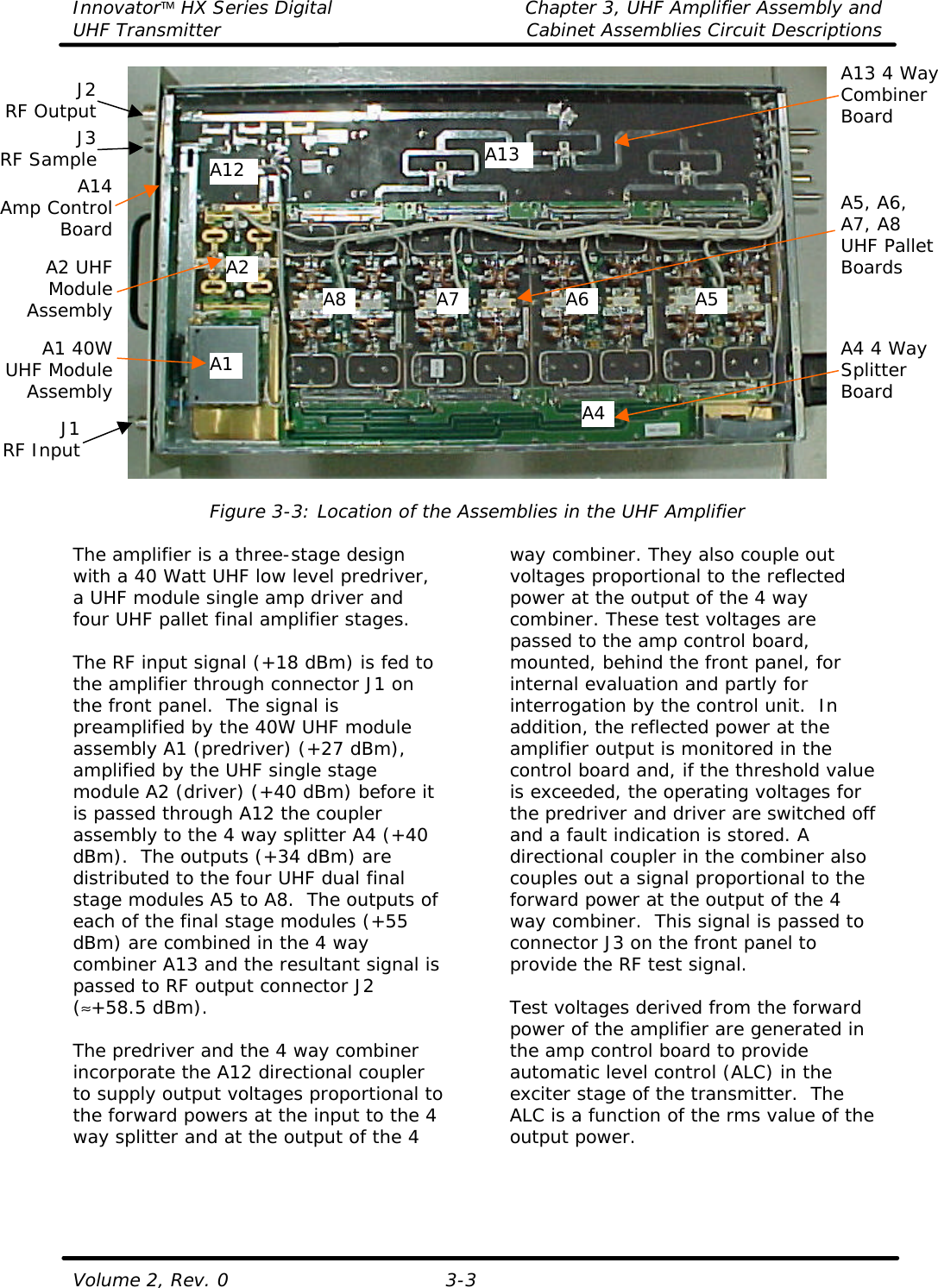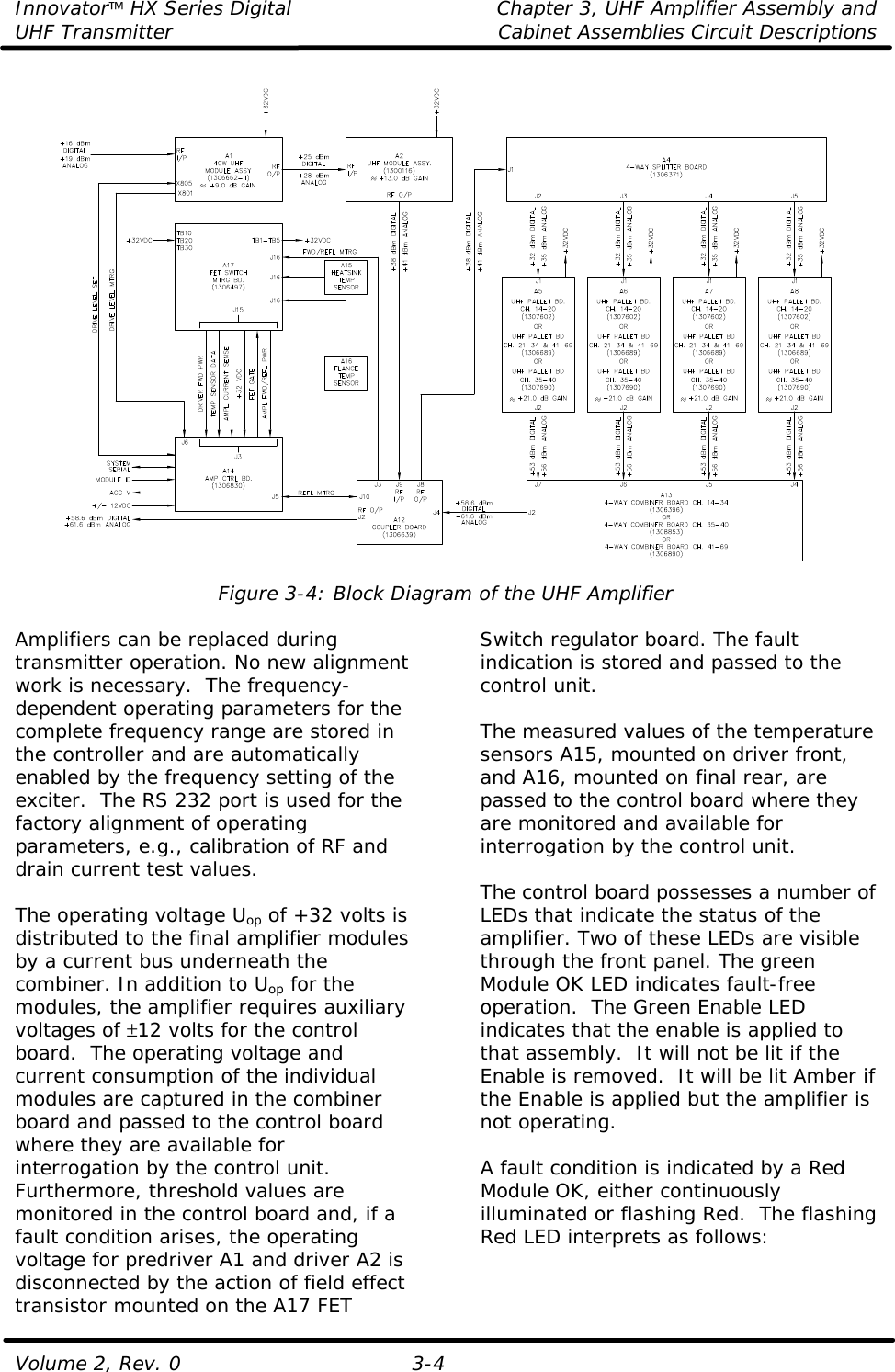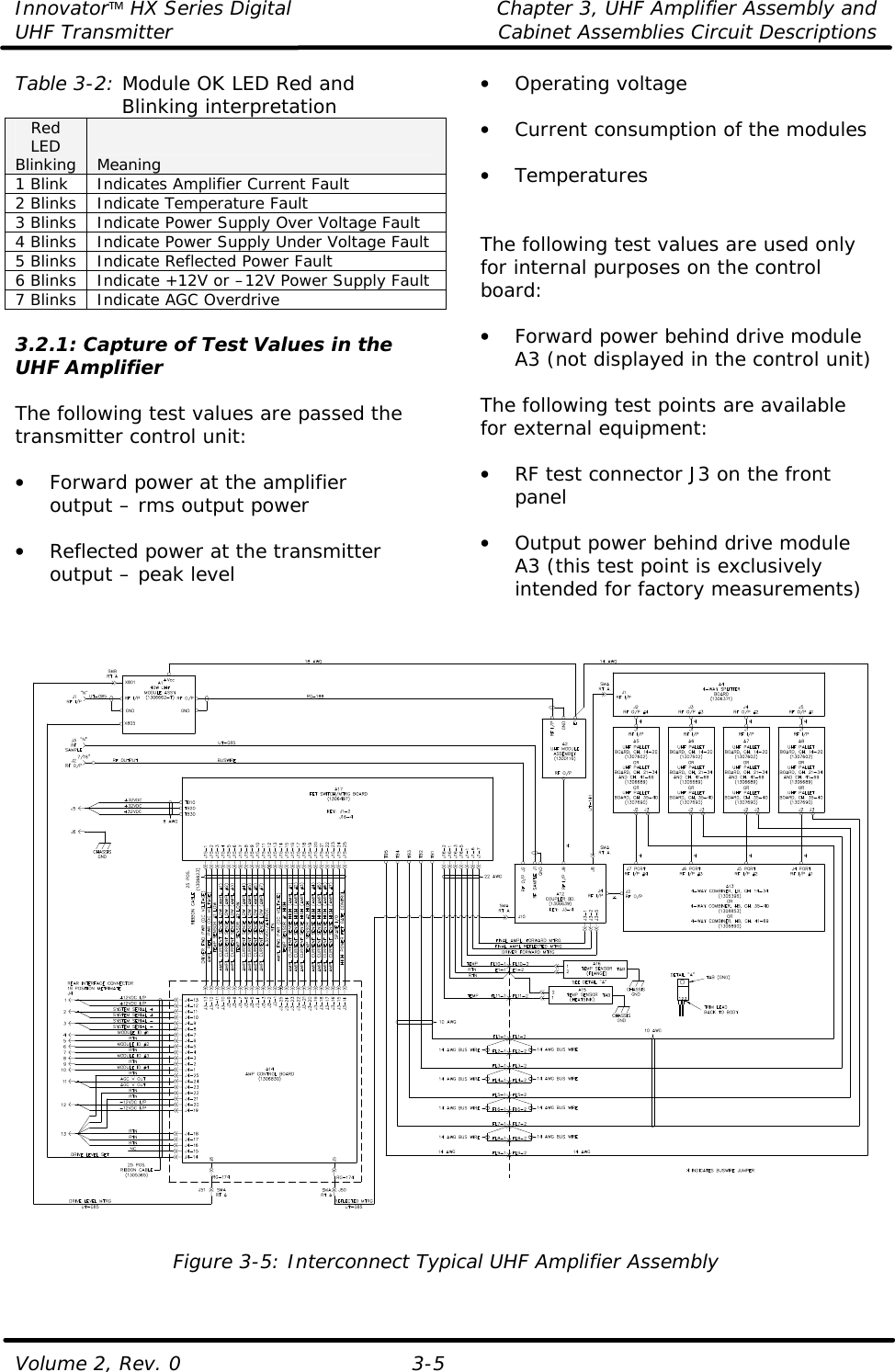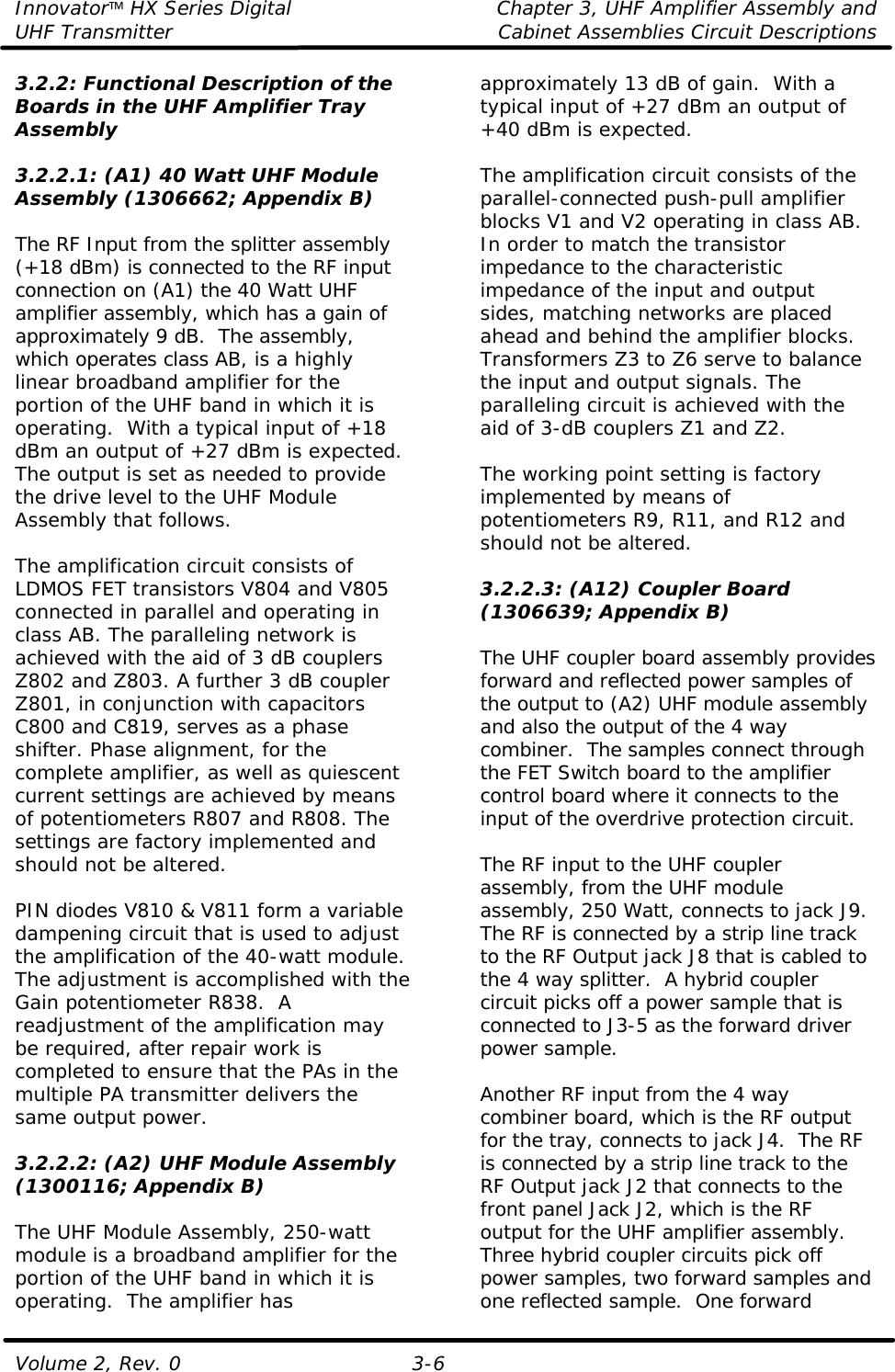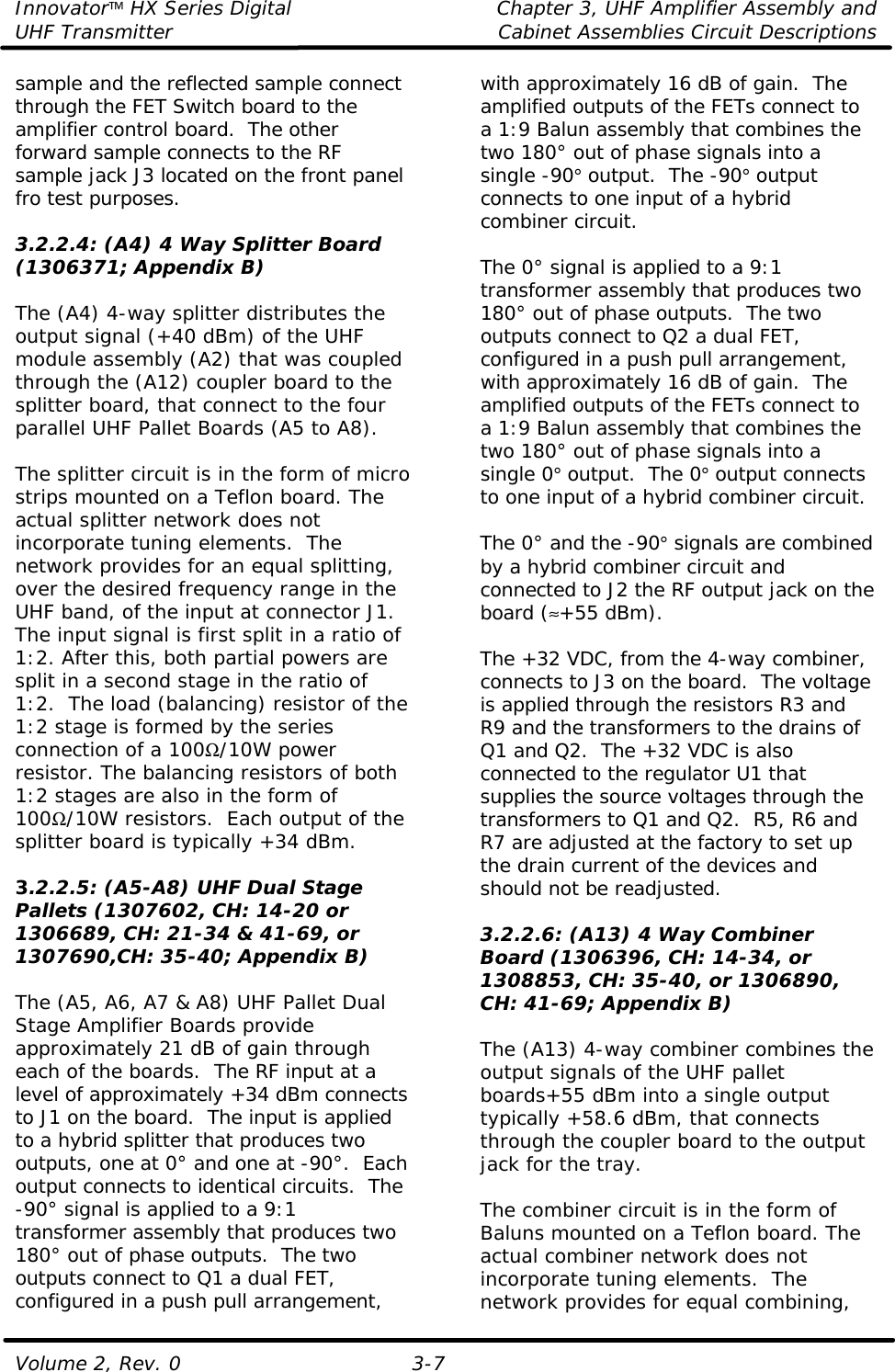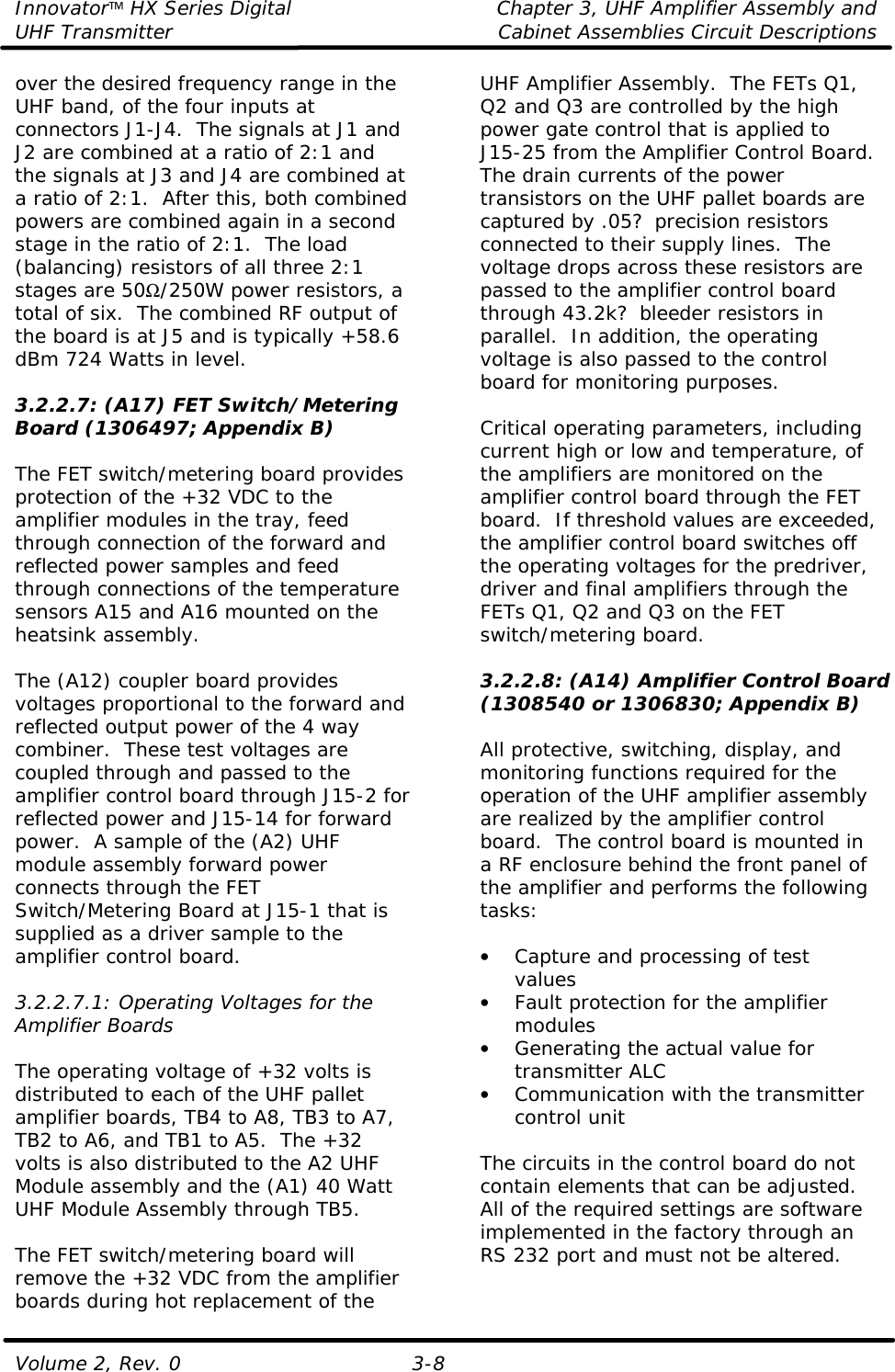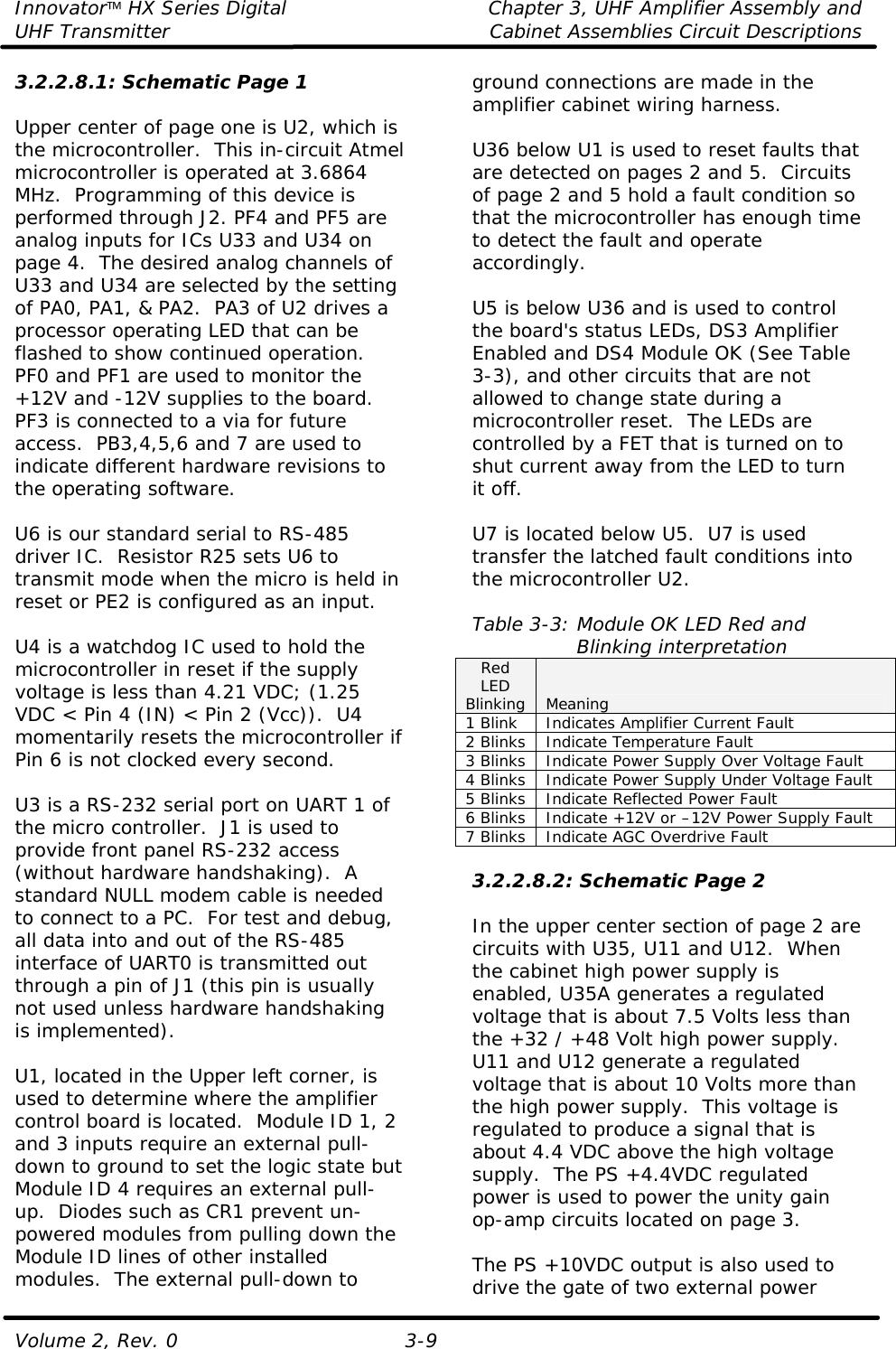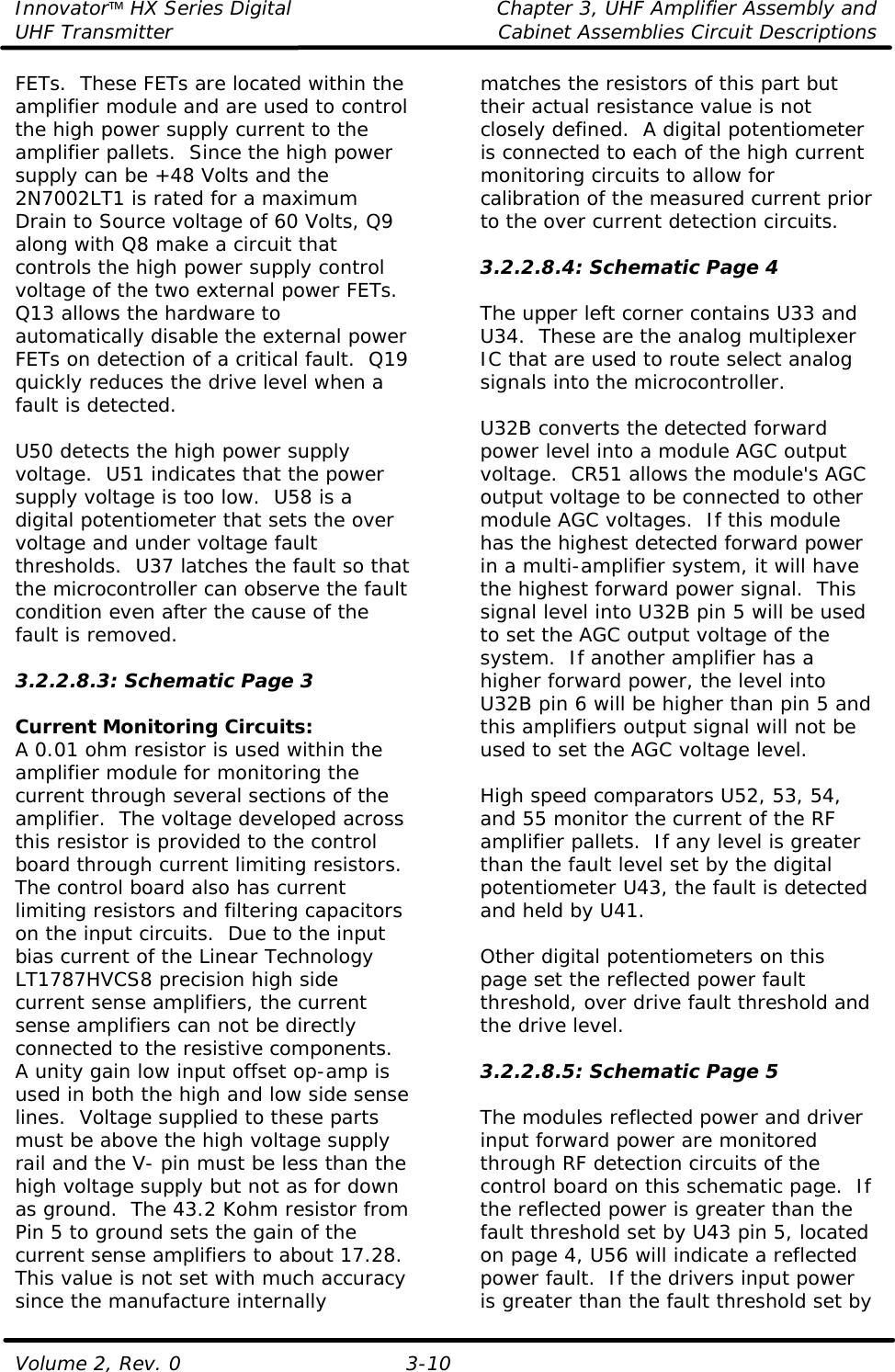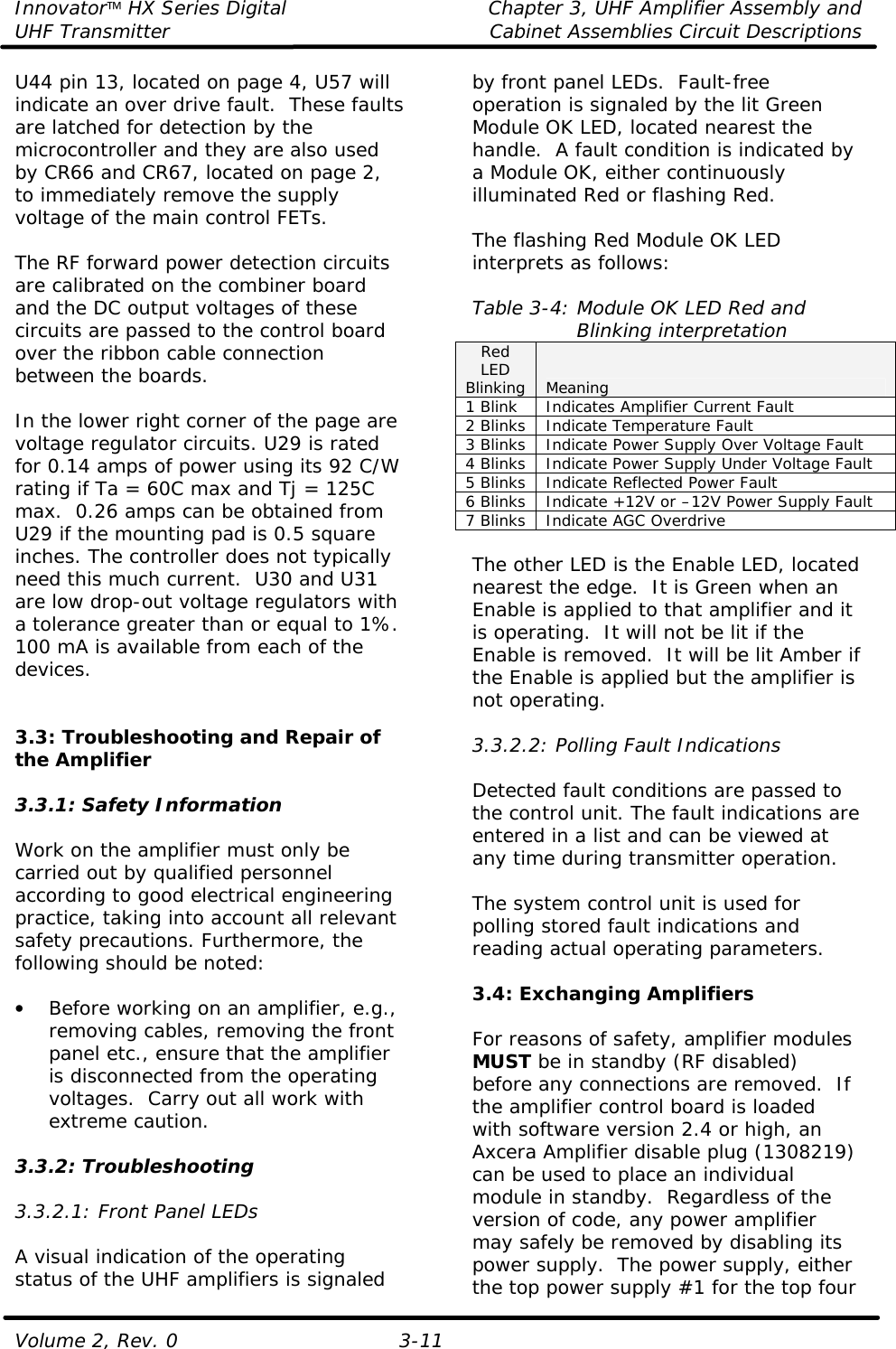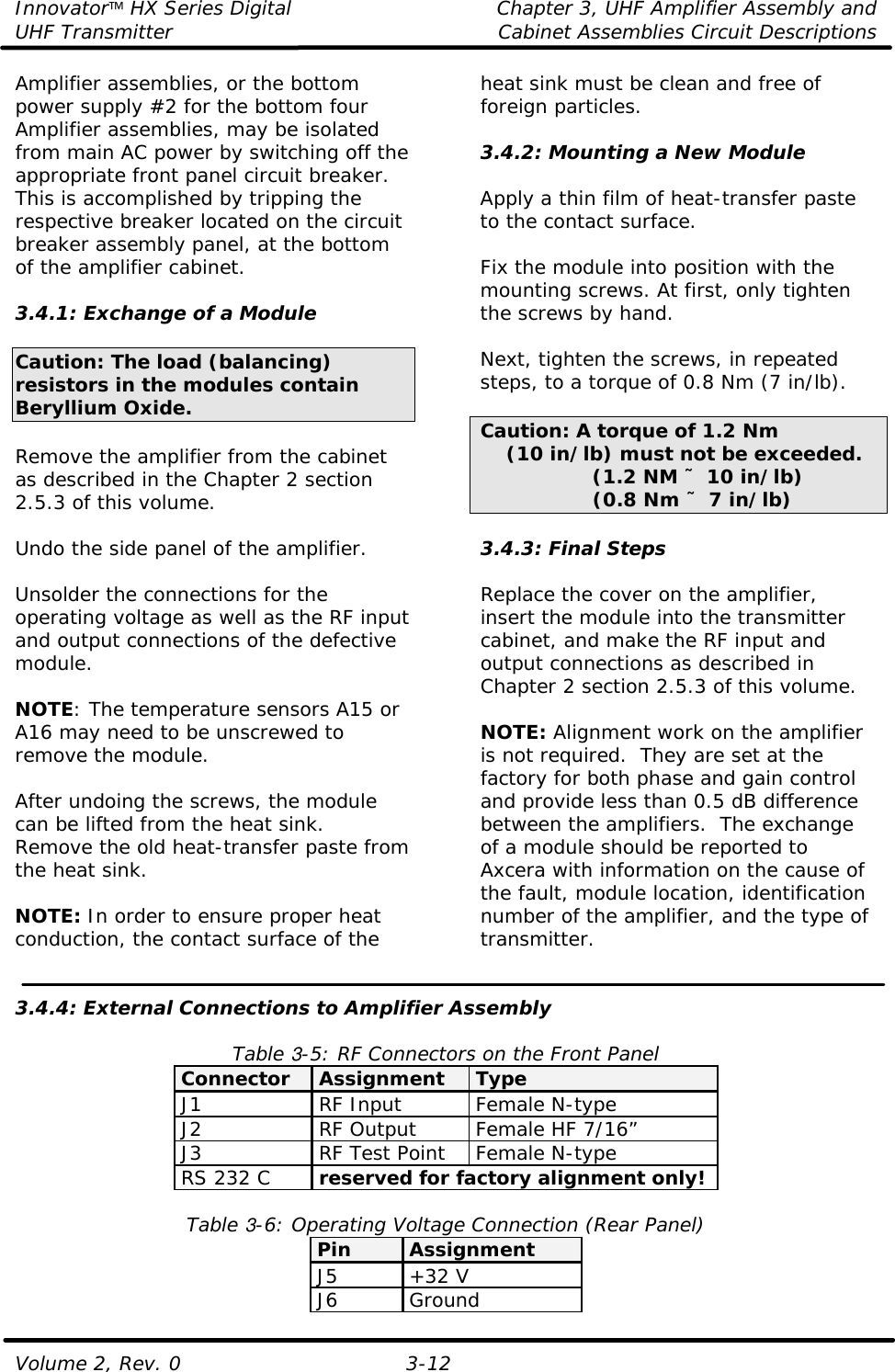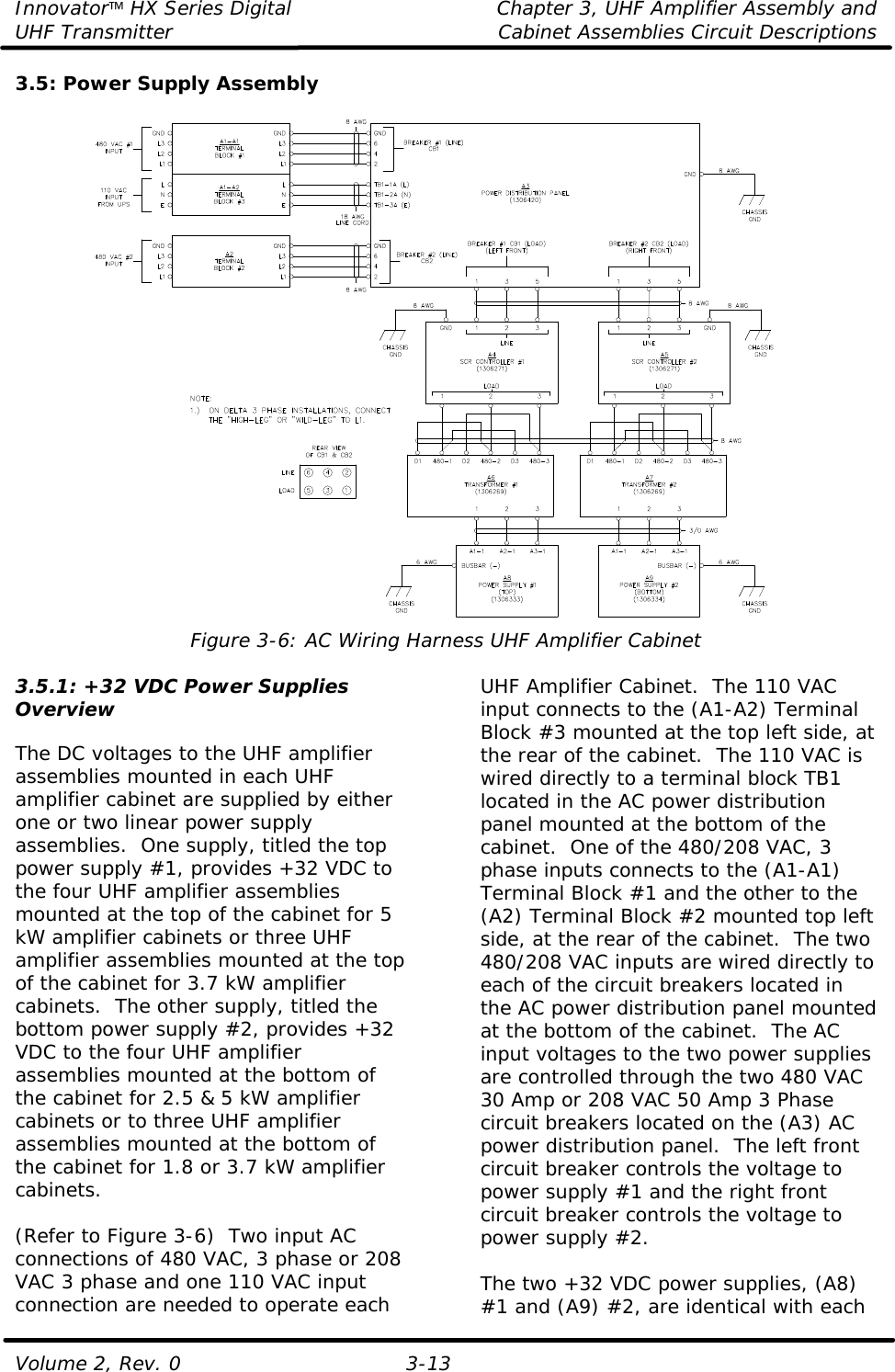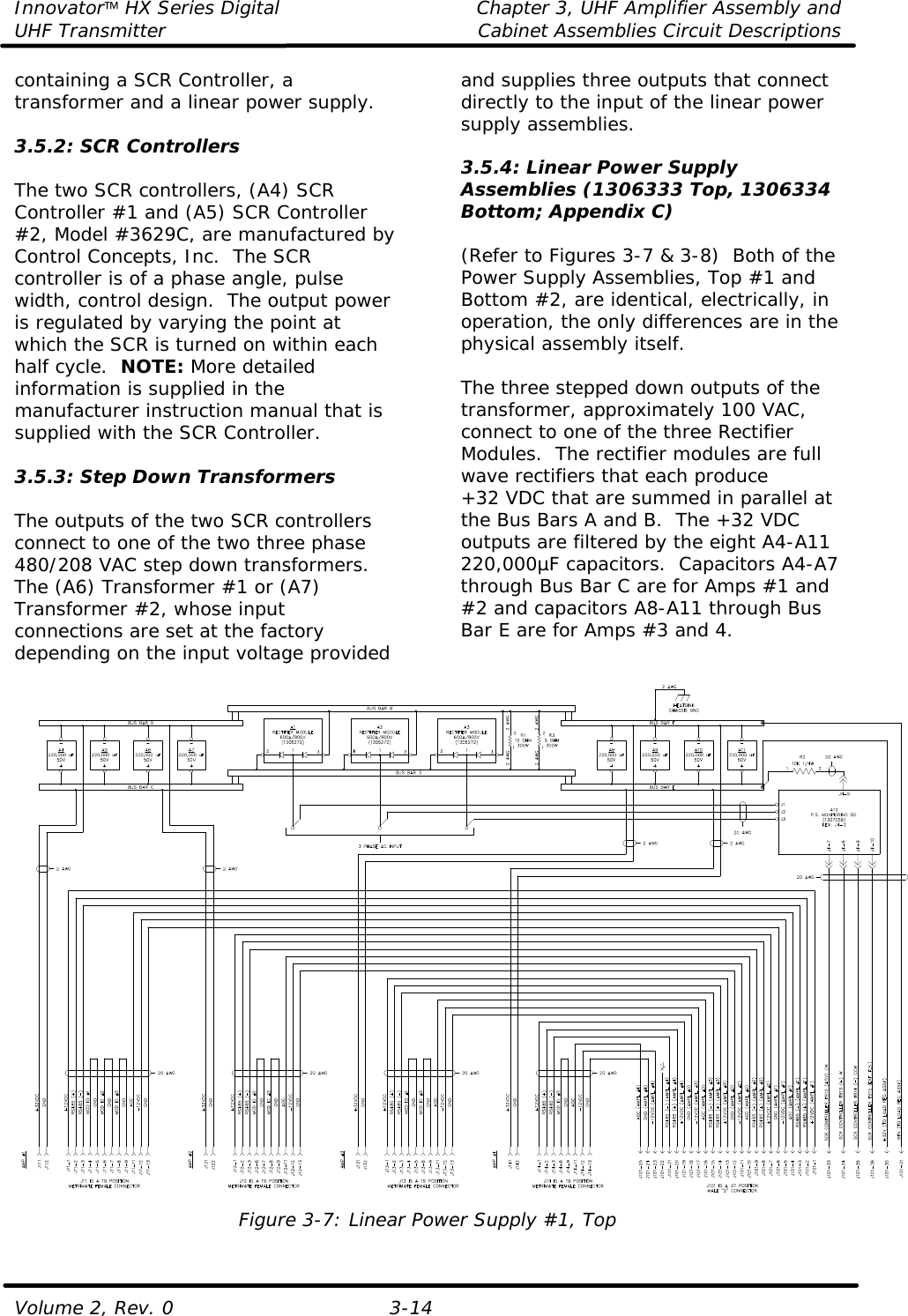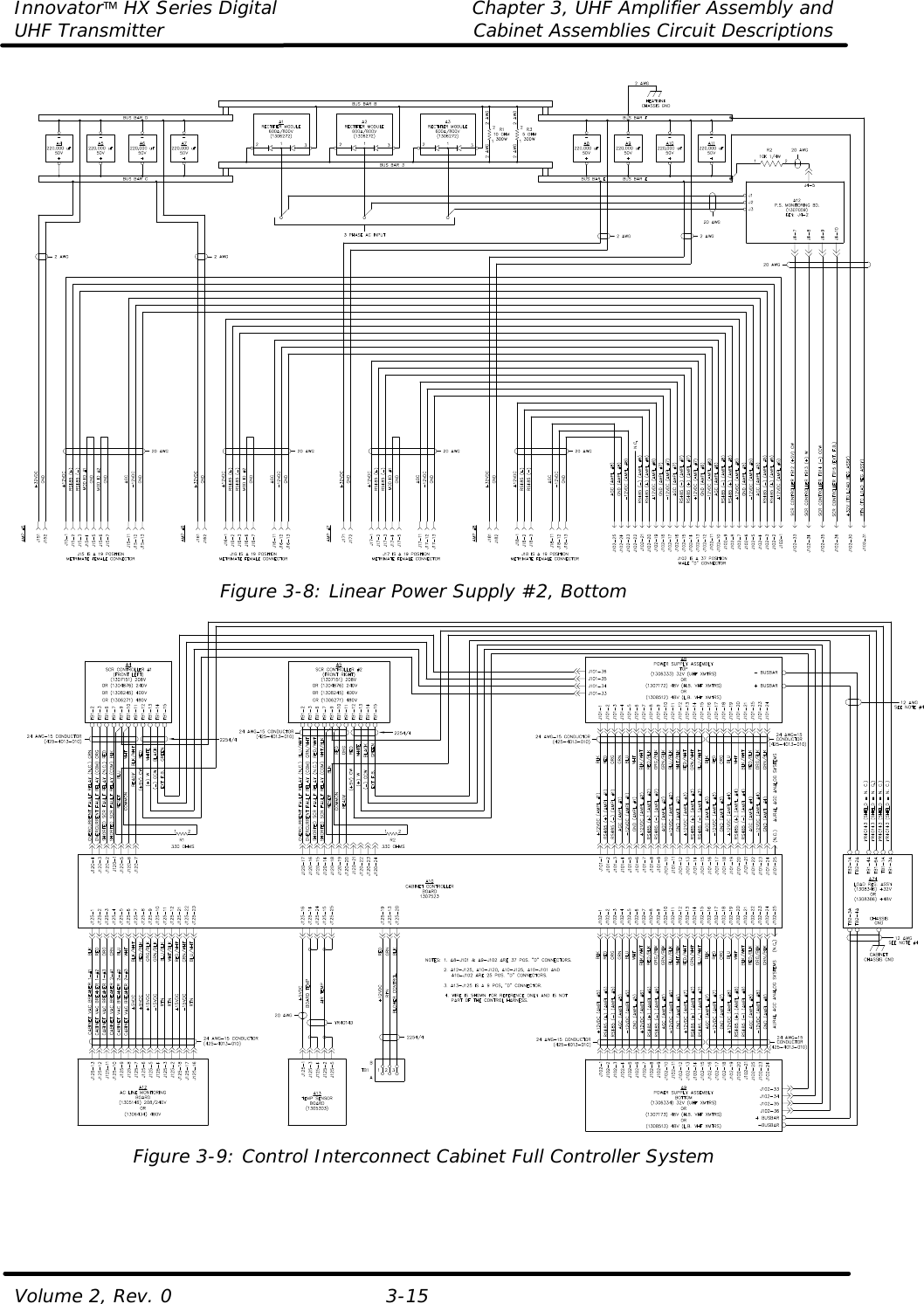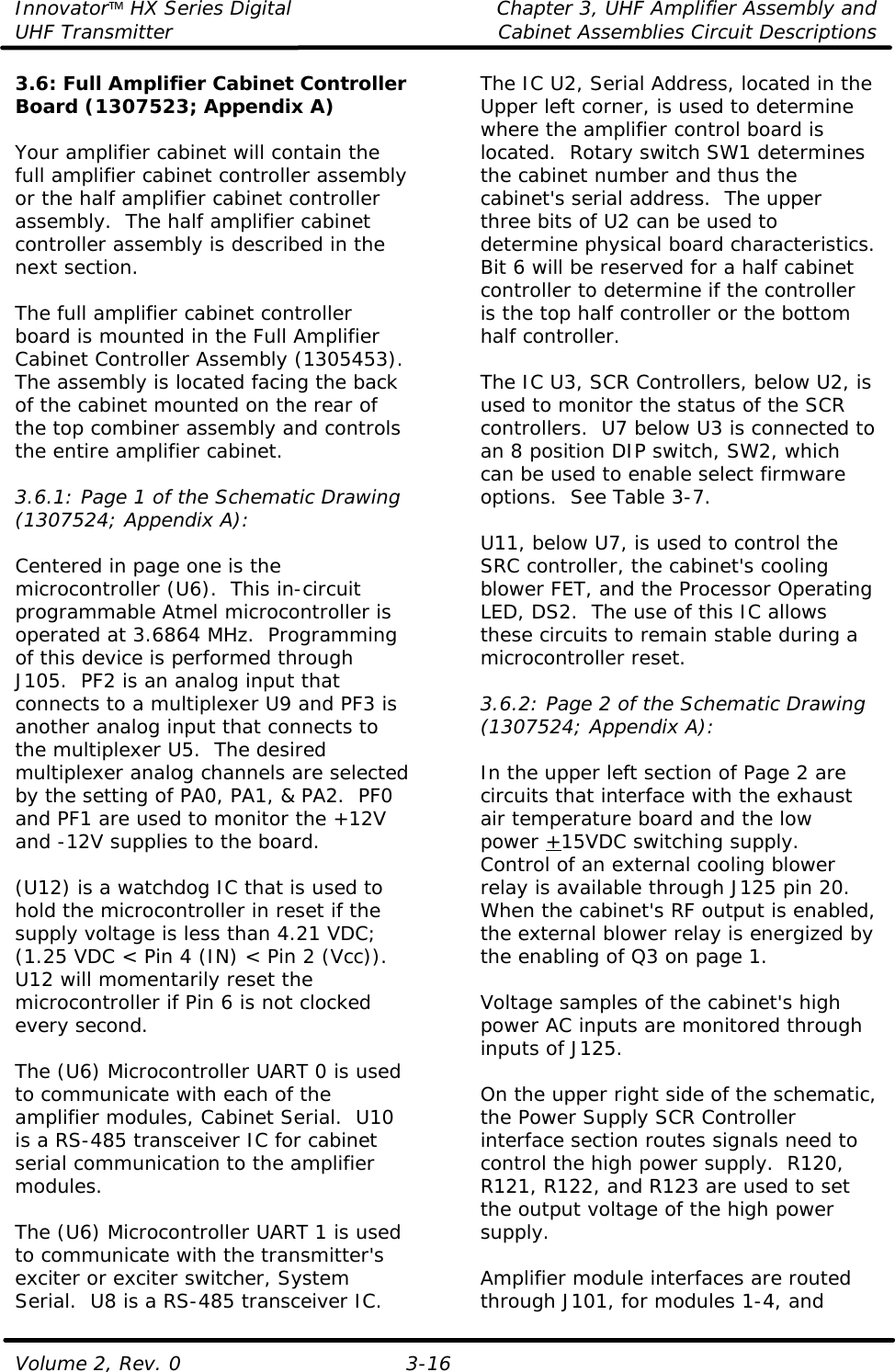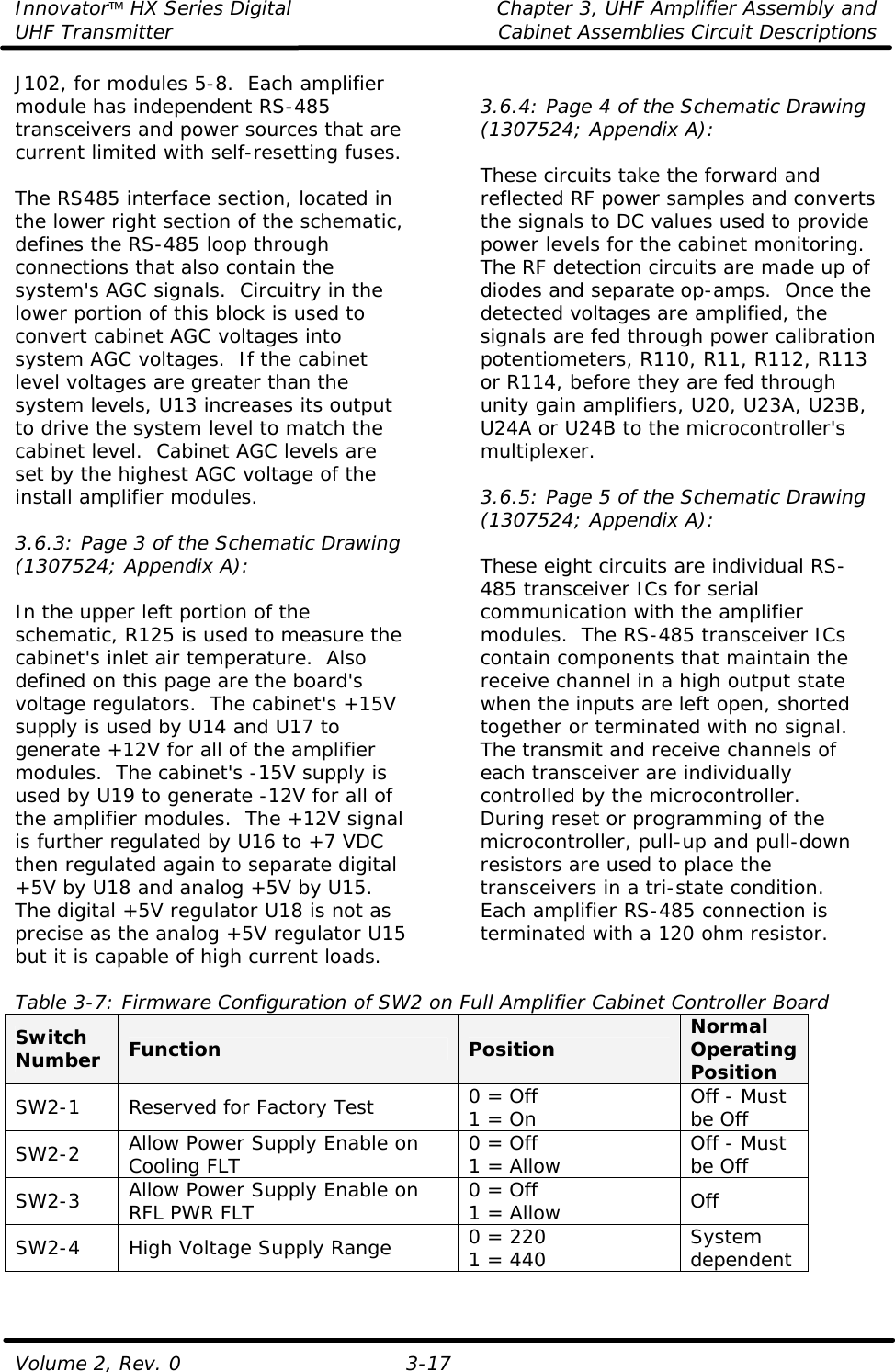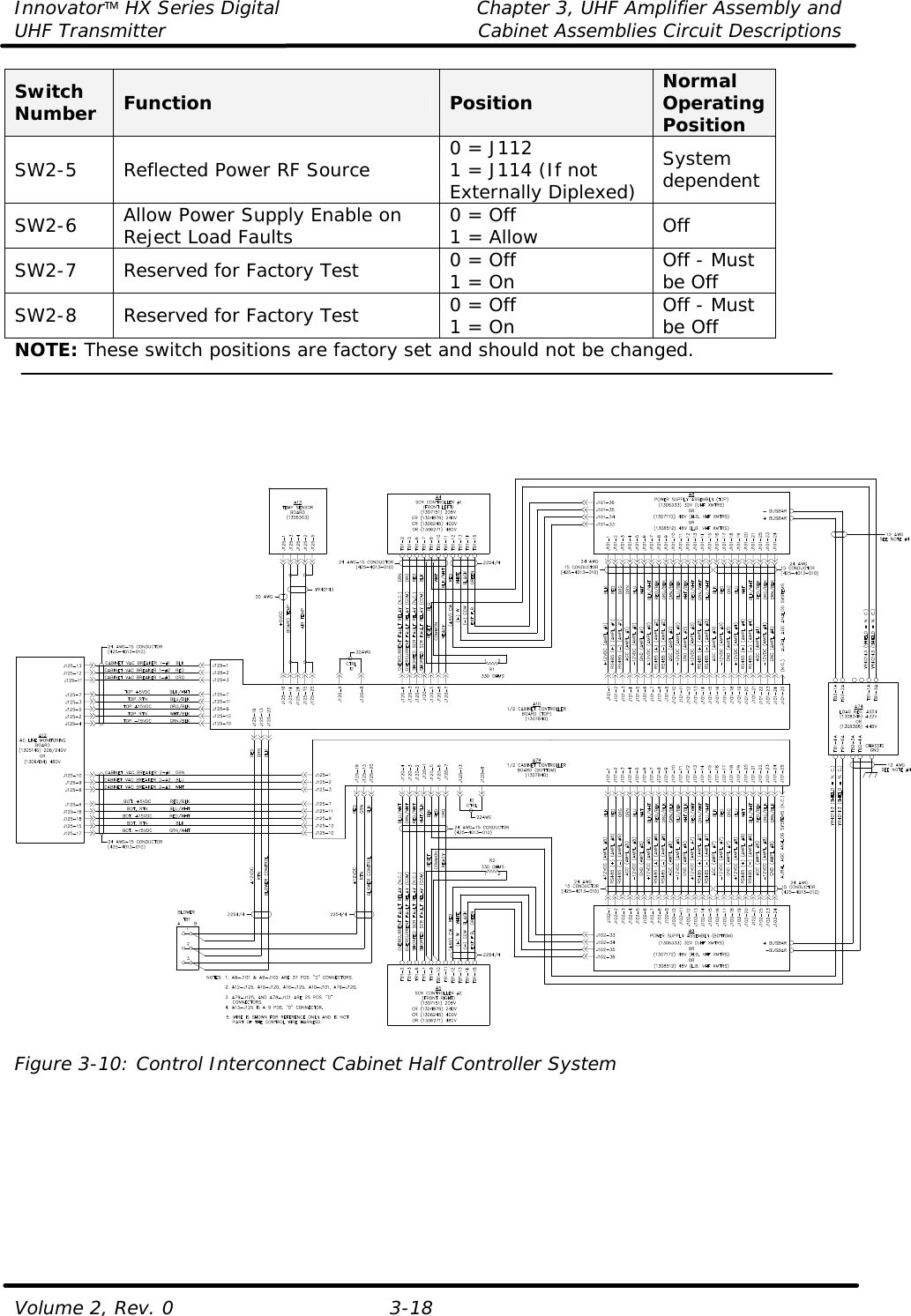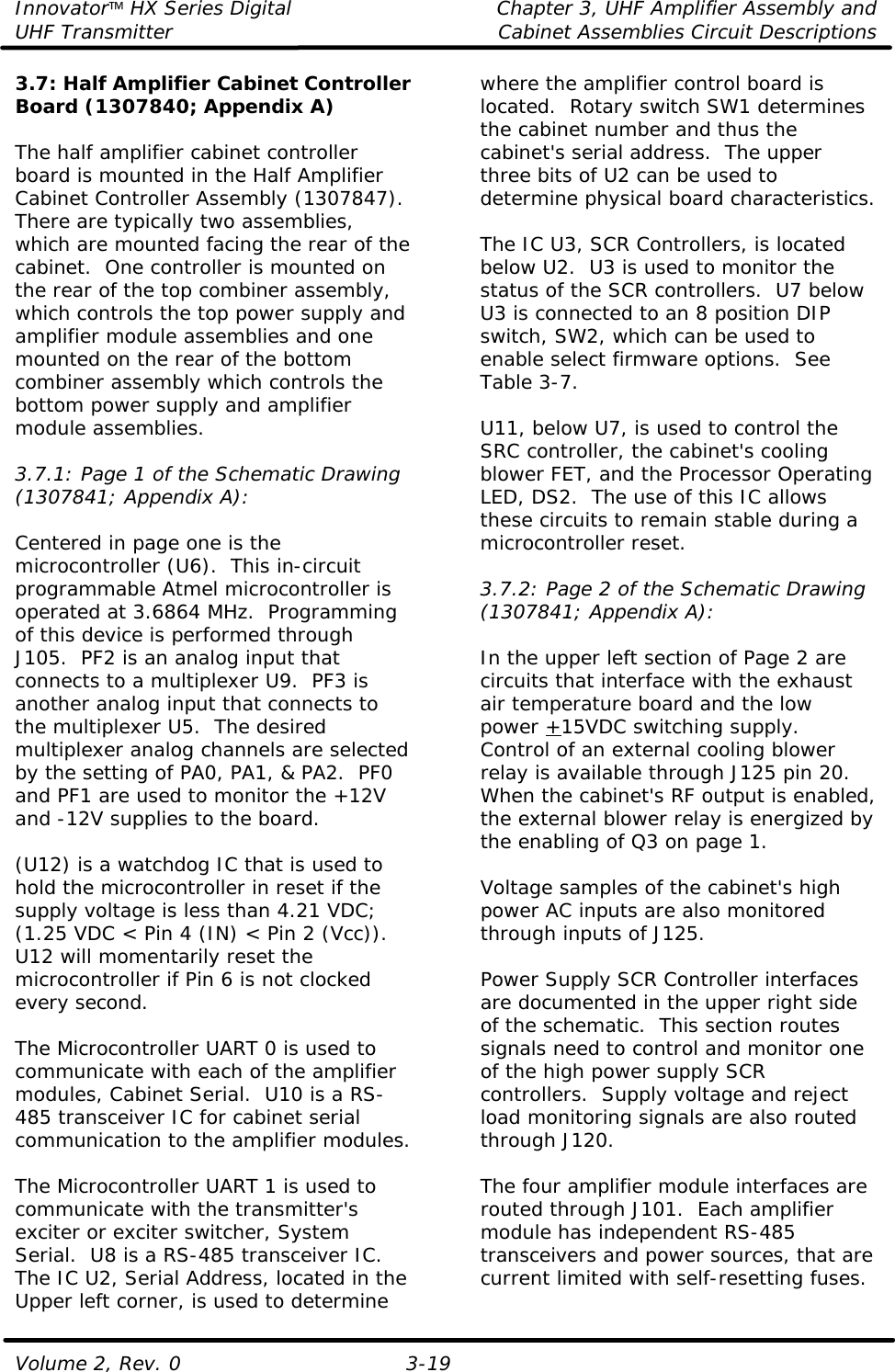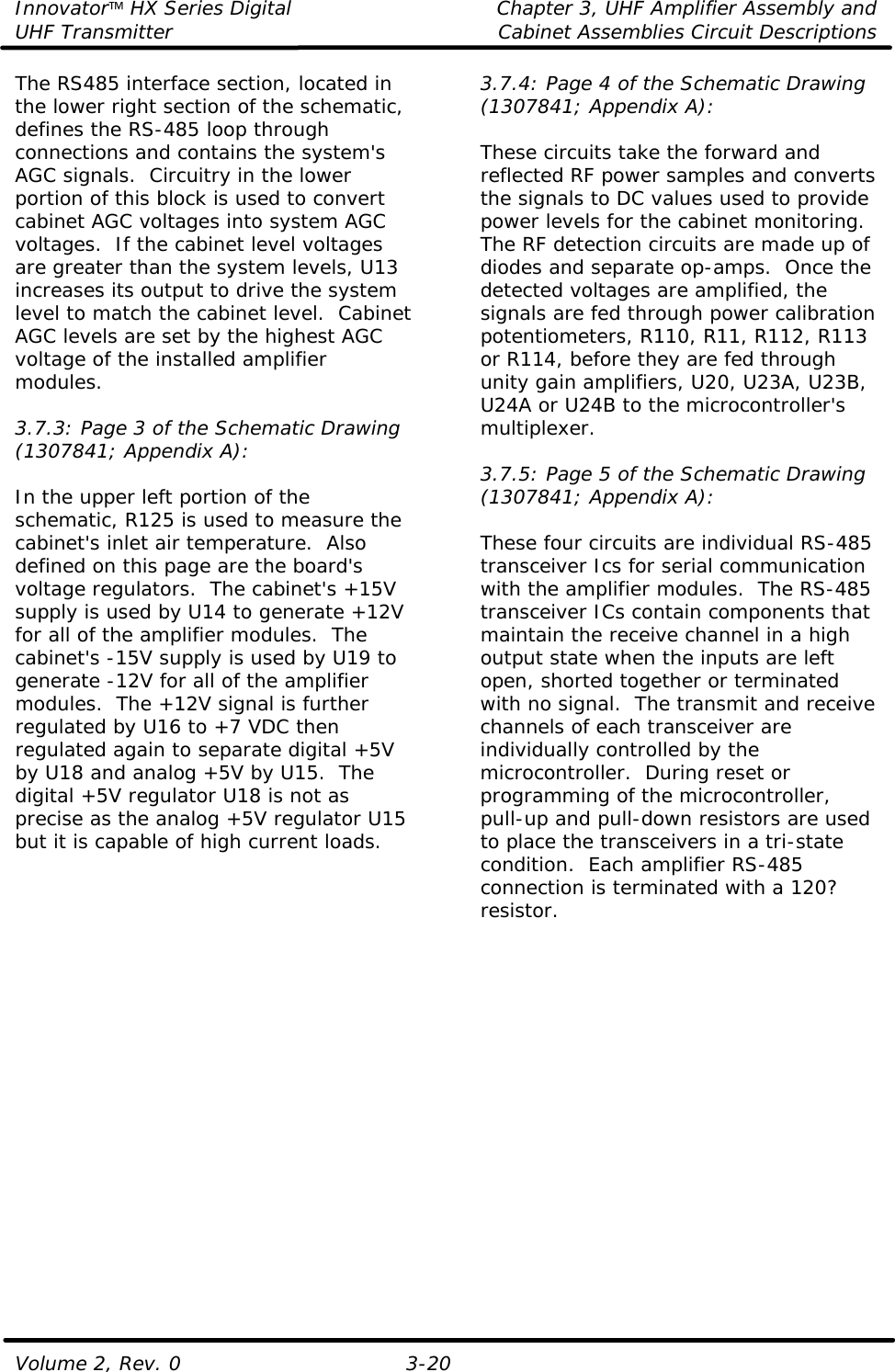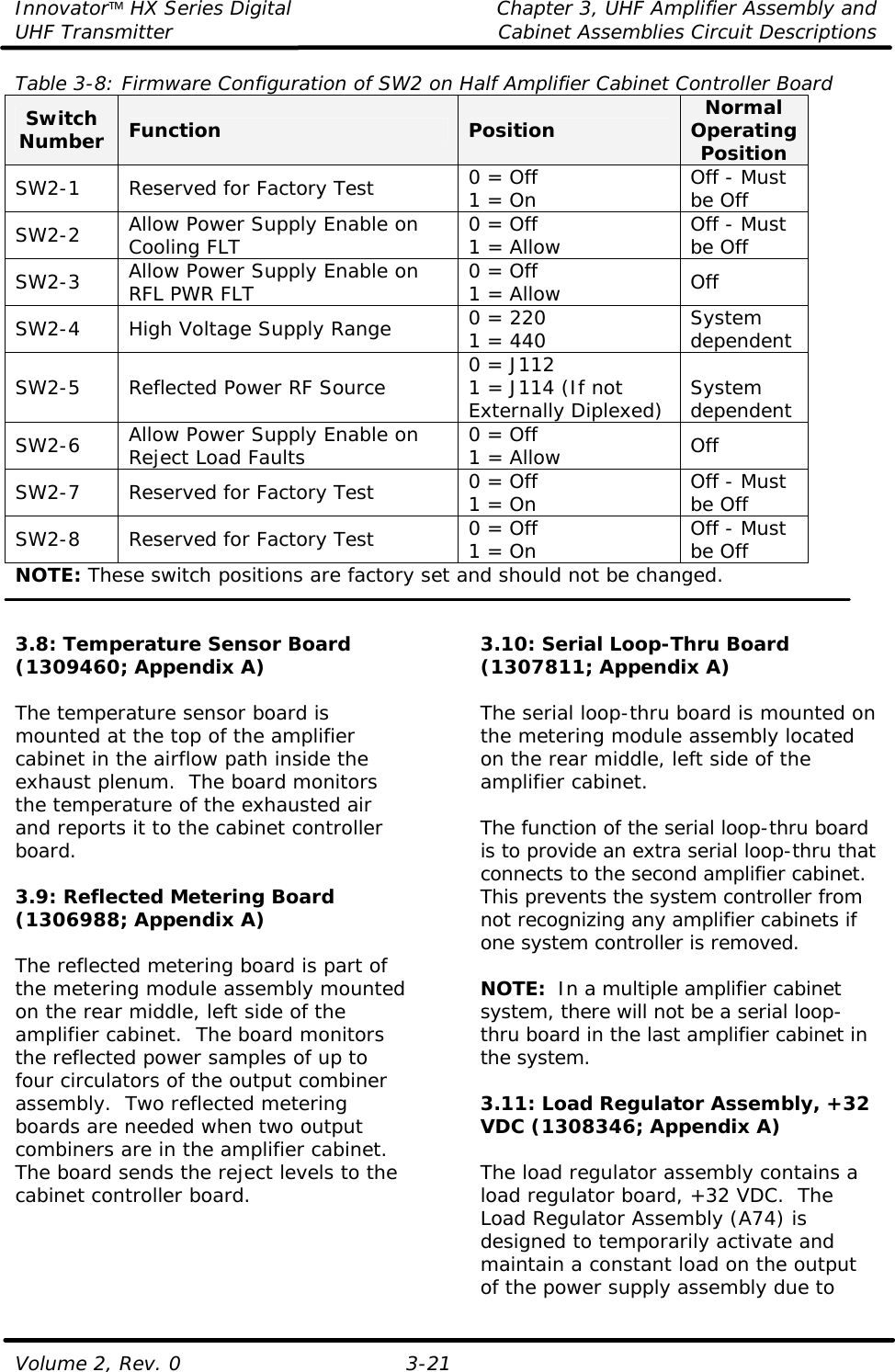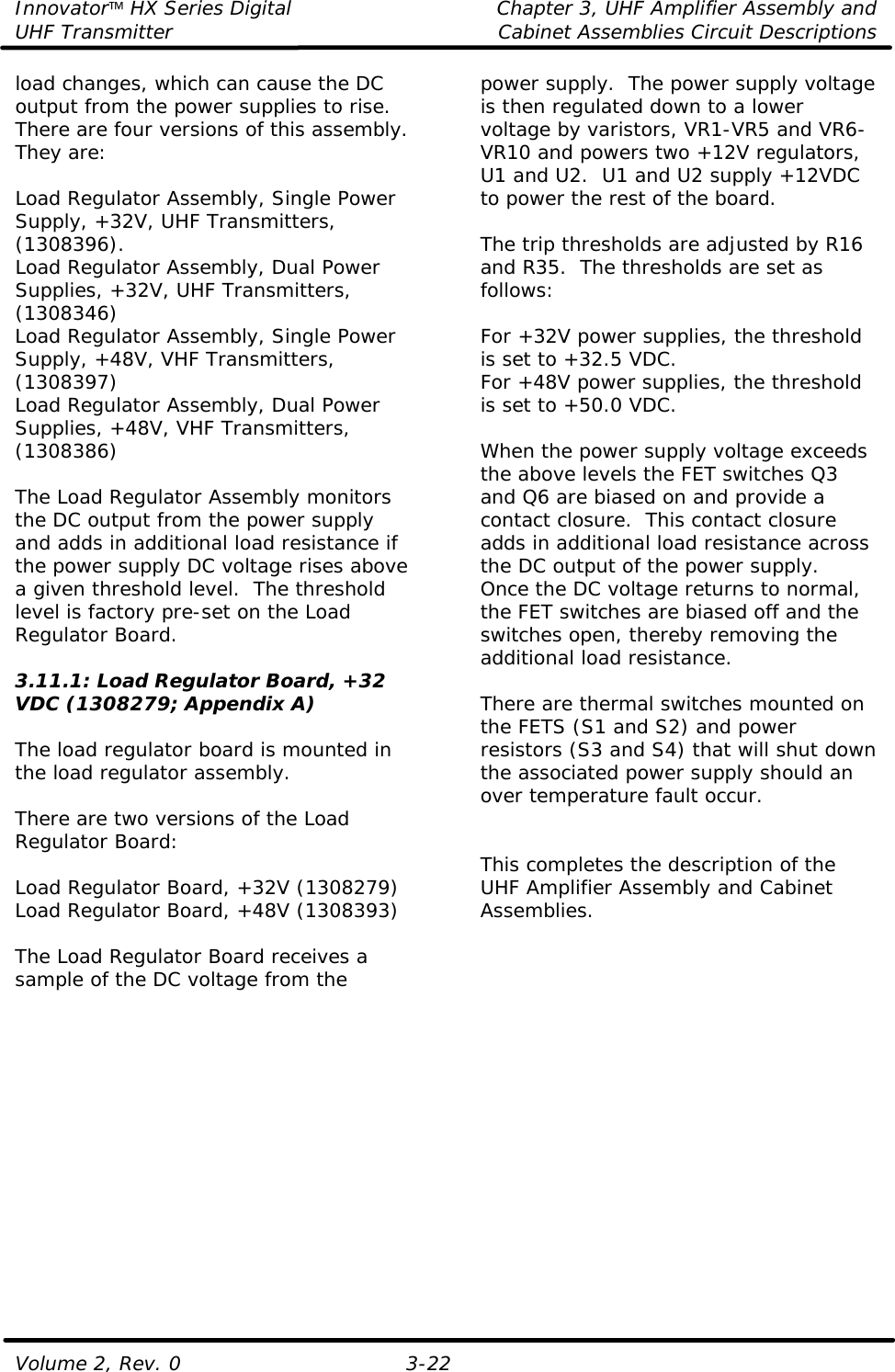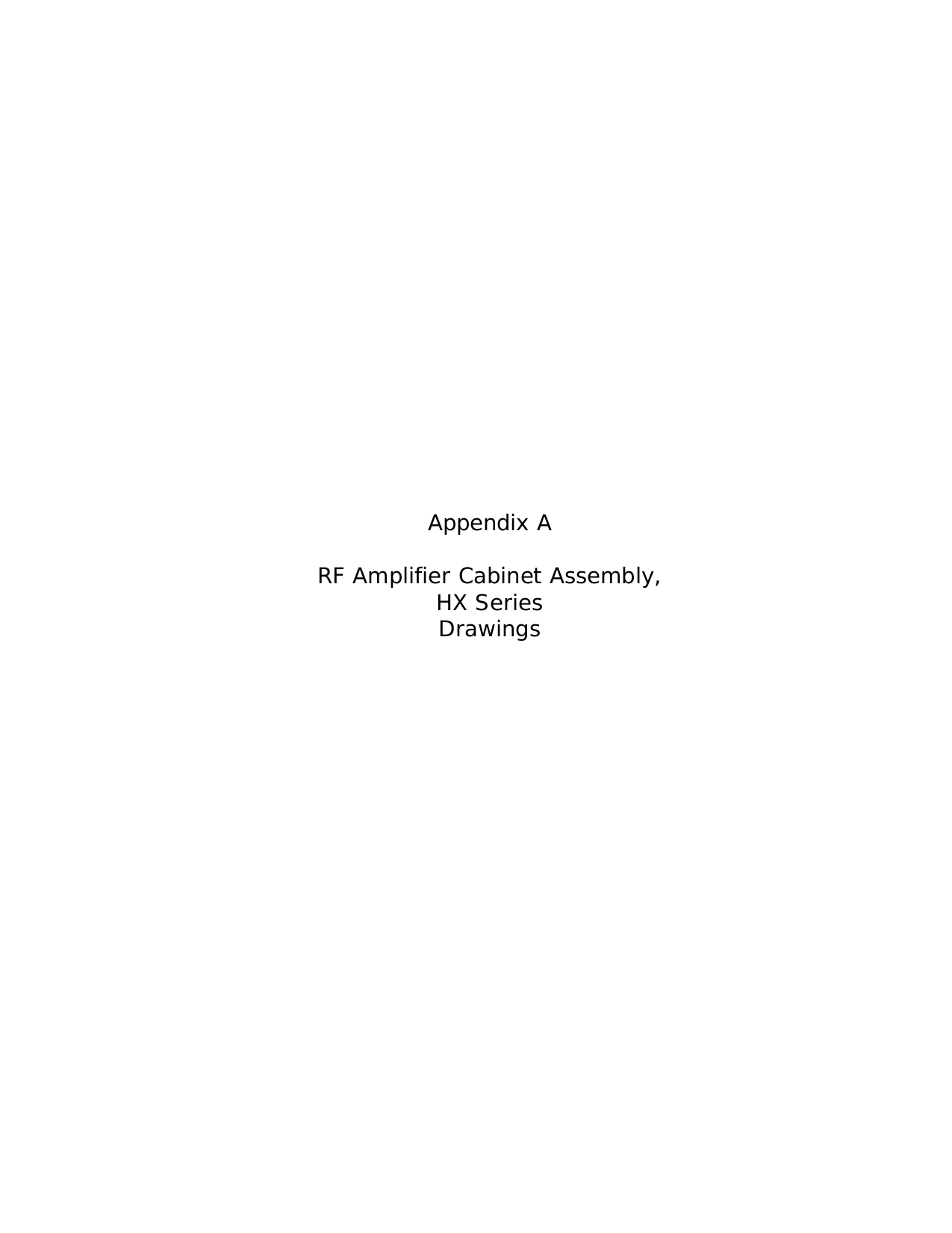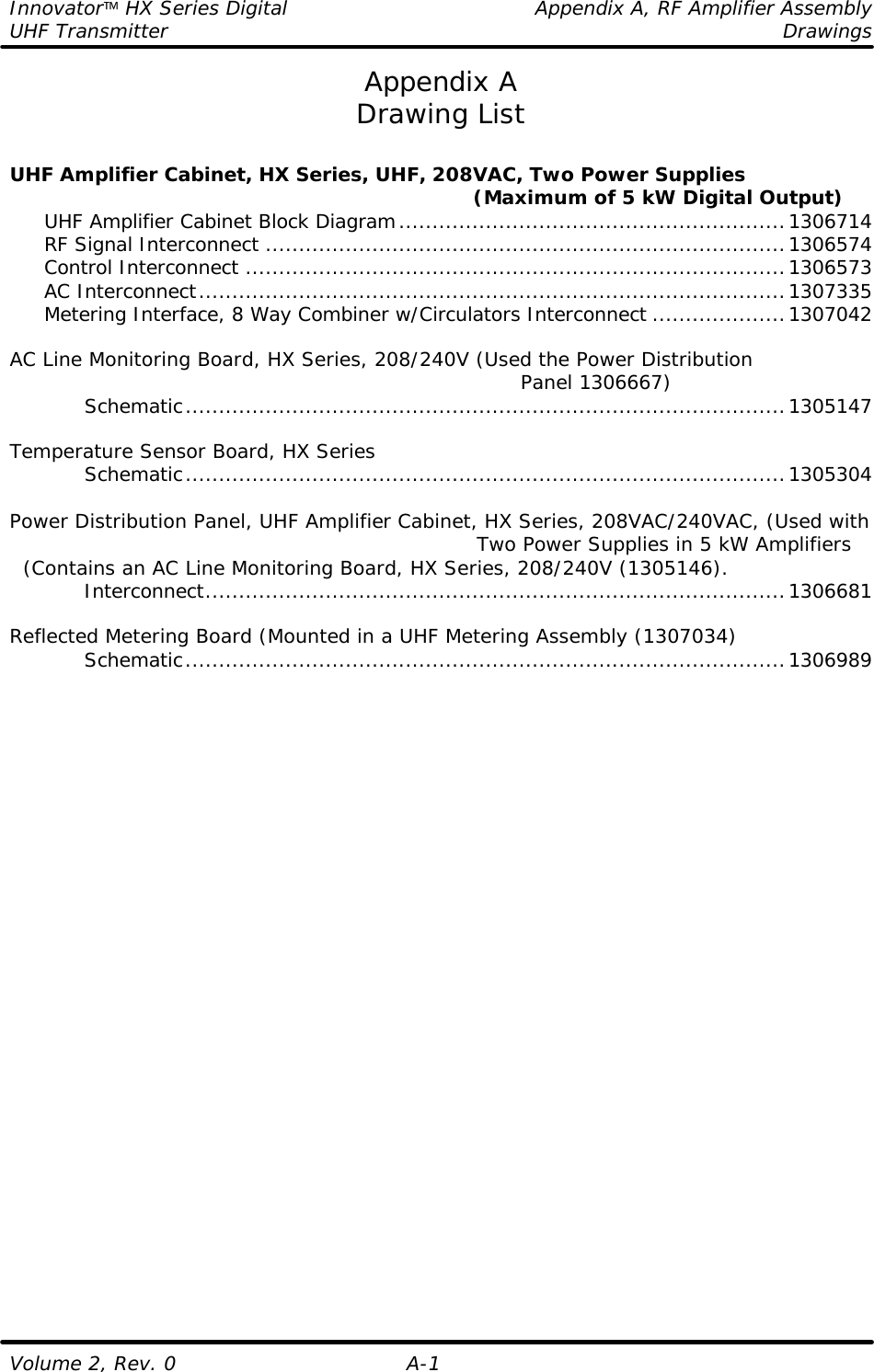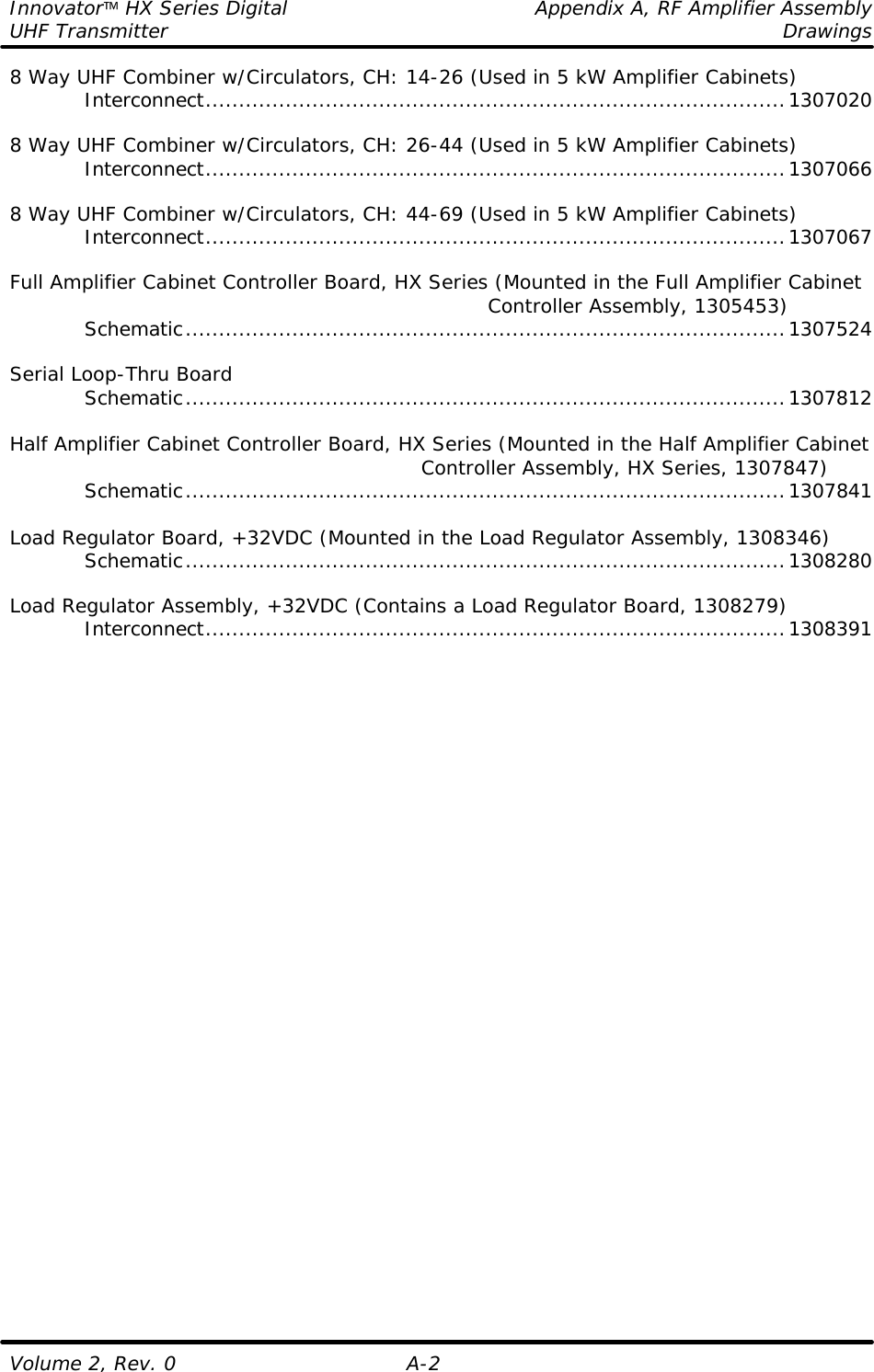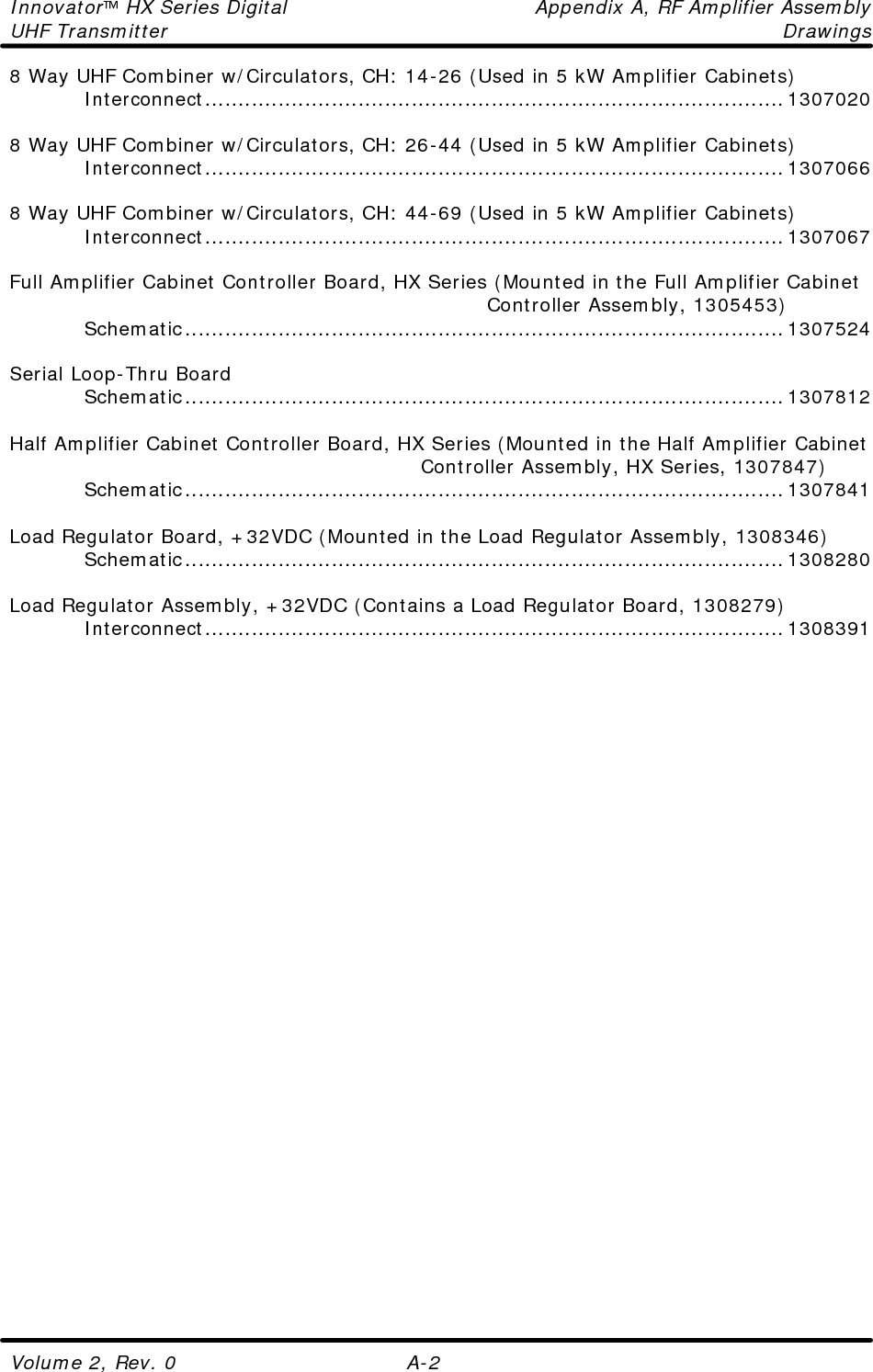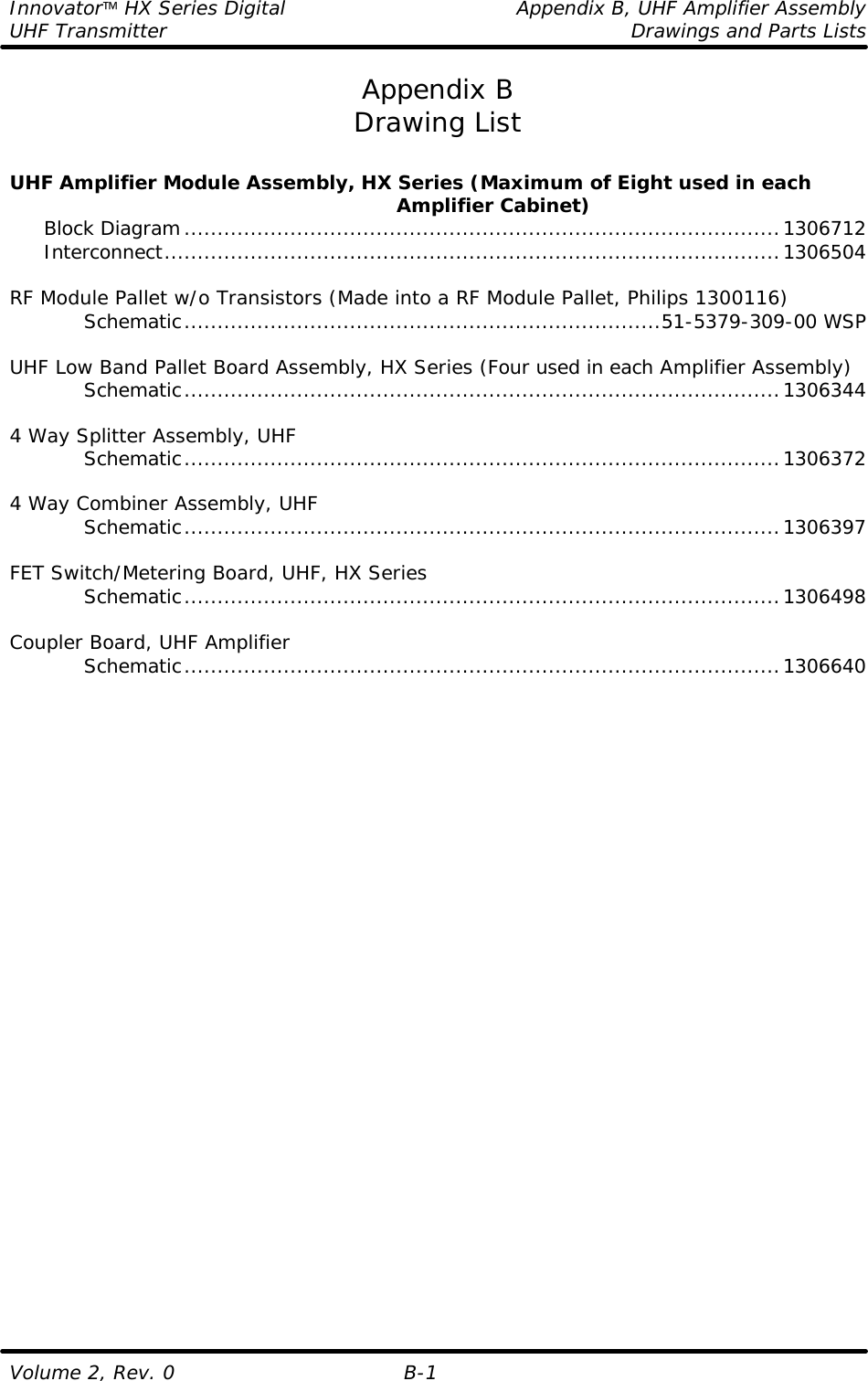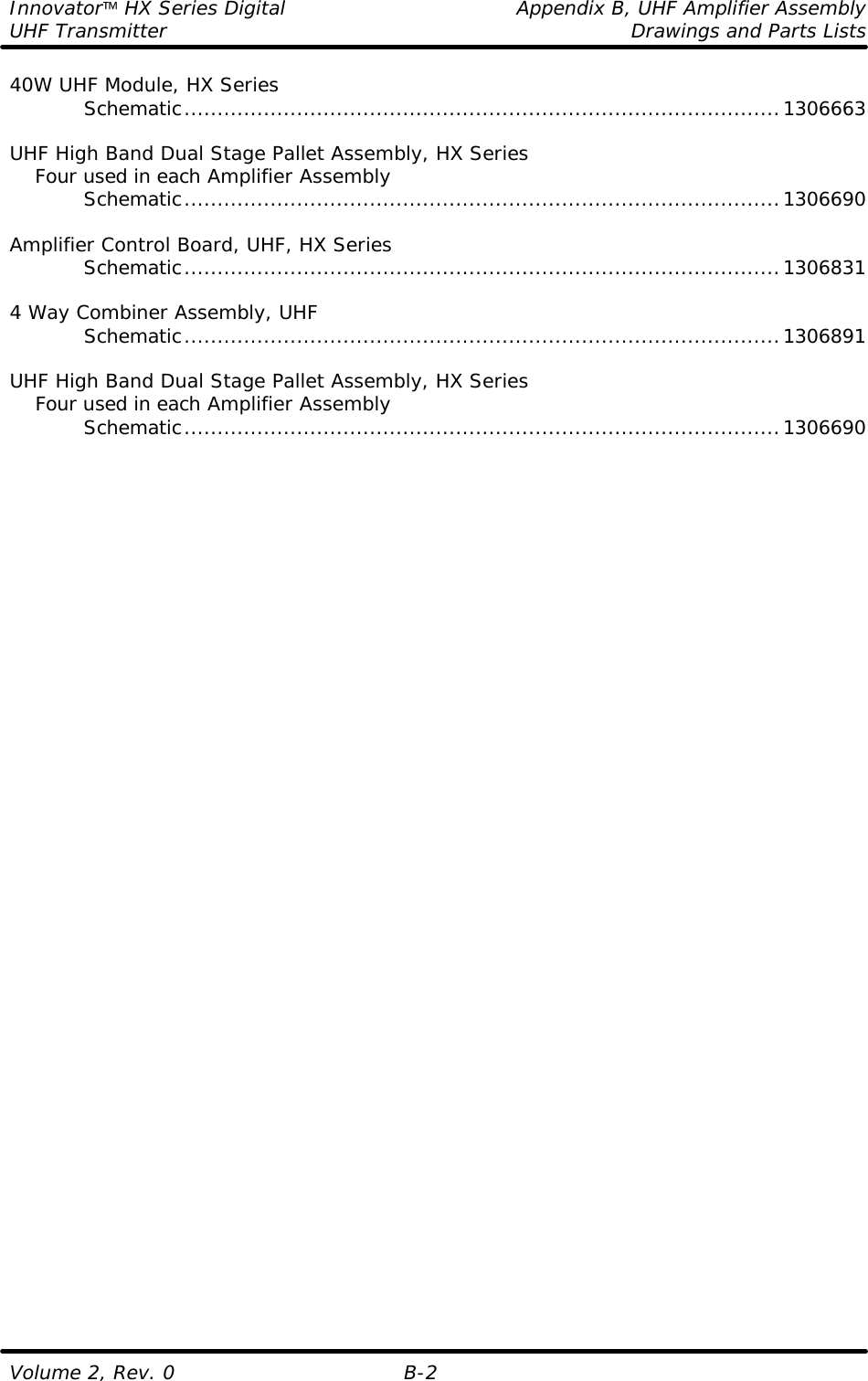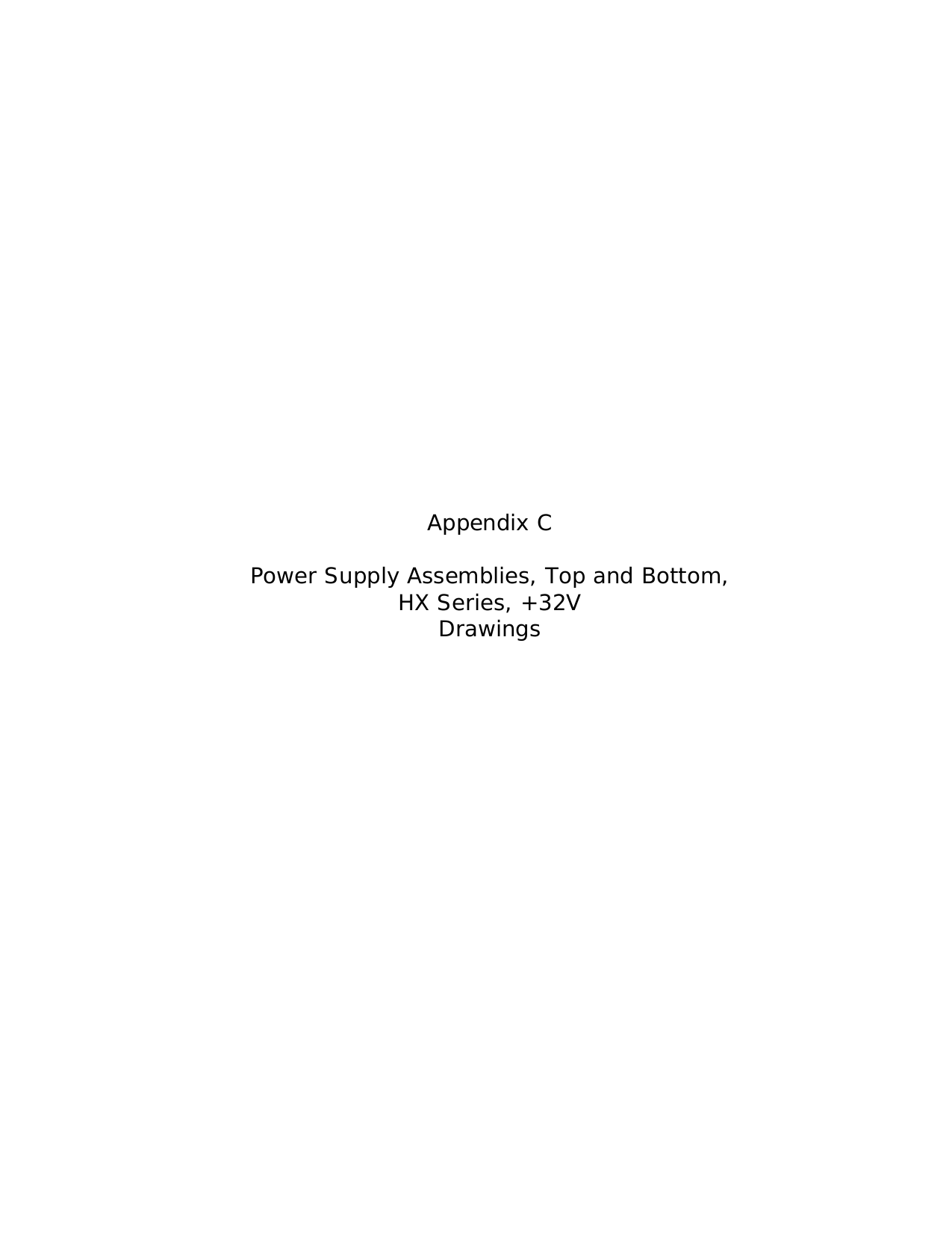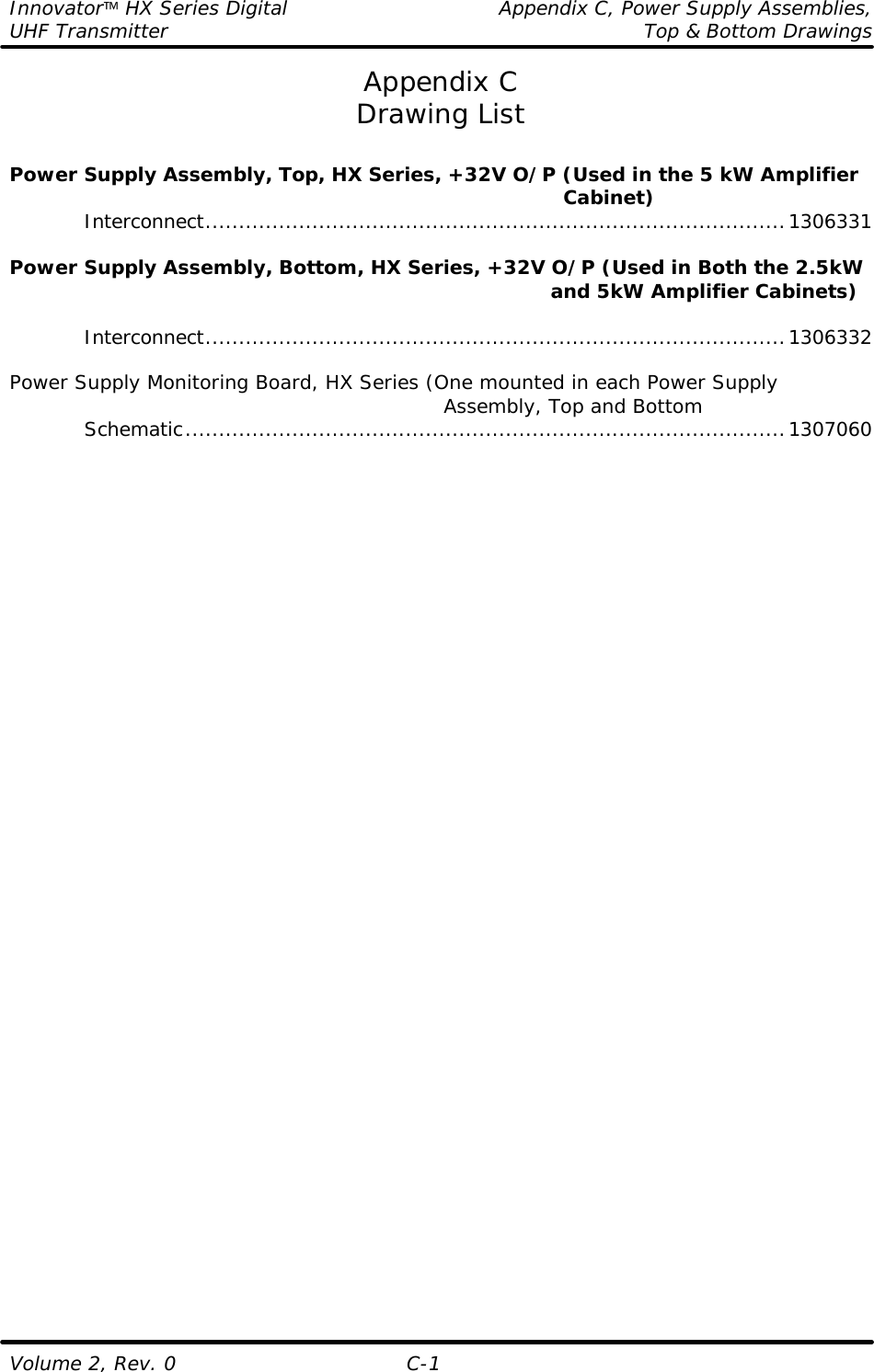UBS Axcera HU5000AD 5000-Watt UHF Digital Transmitter User Manual Title Page Vol 2
UBS-Axcera 5000-Watt UHF Digital Transmitter Title Page Vol 2
Contents
- 1. Compiled Users Manual Volume 1
- 2. Compiled Users Manual Volume 2
- 3. Compled Axciter Manual Part 1
- 4. Axciter Manual Part 2
Compiled Users Manual Volume 2
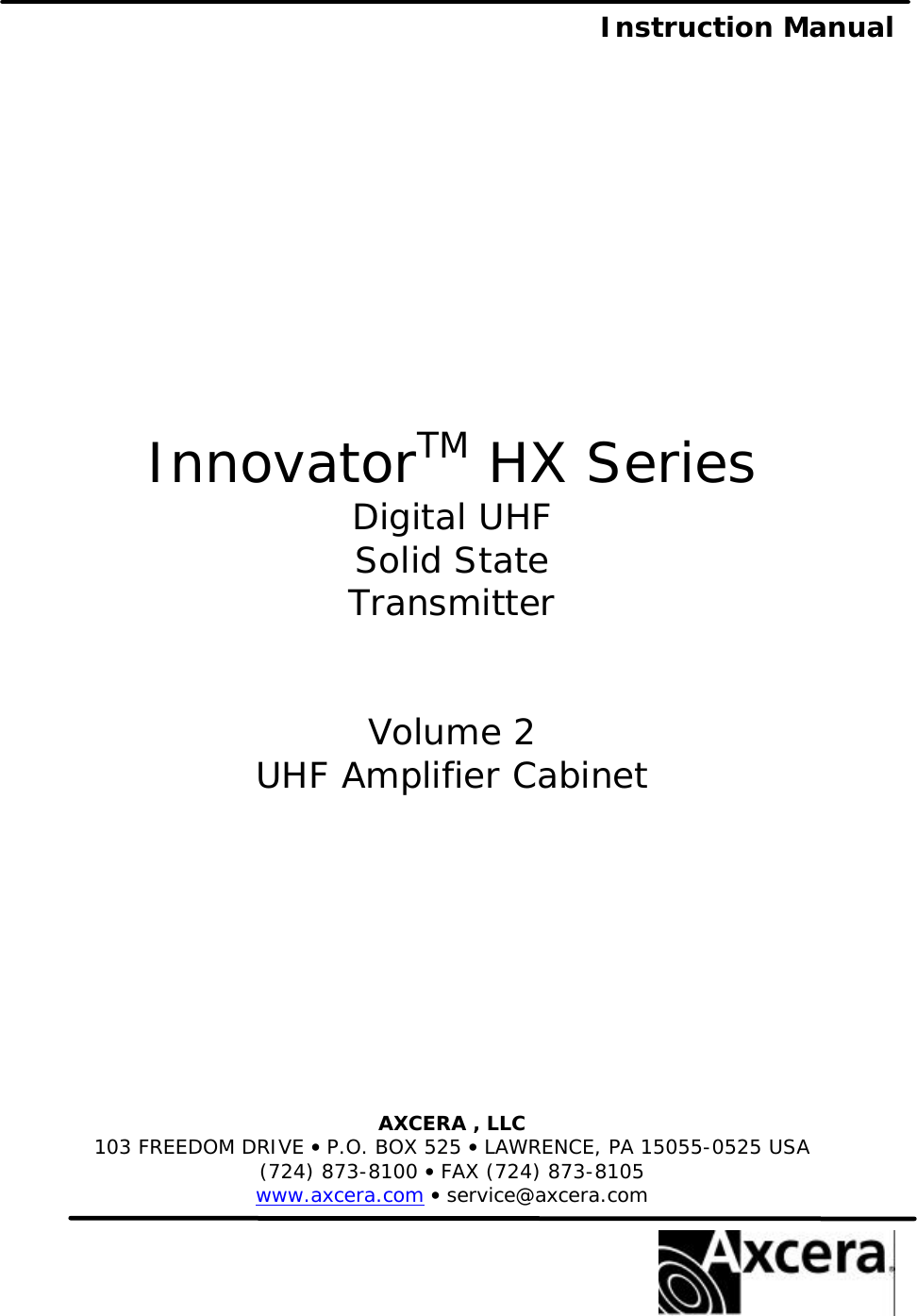
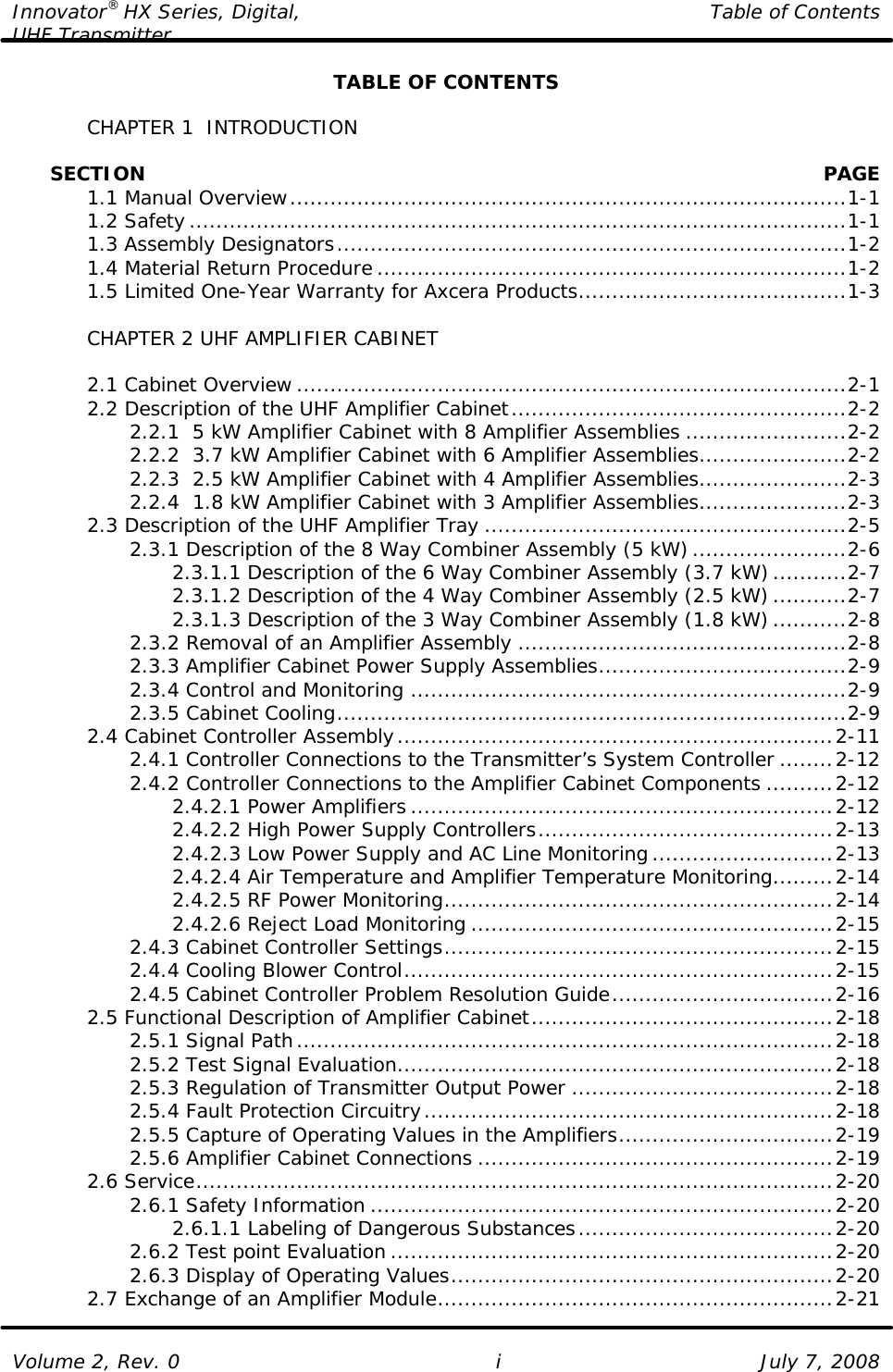
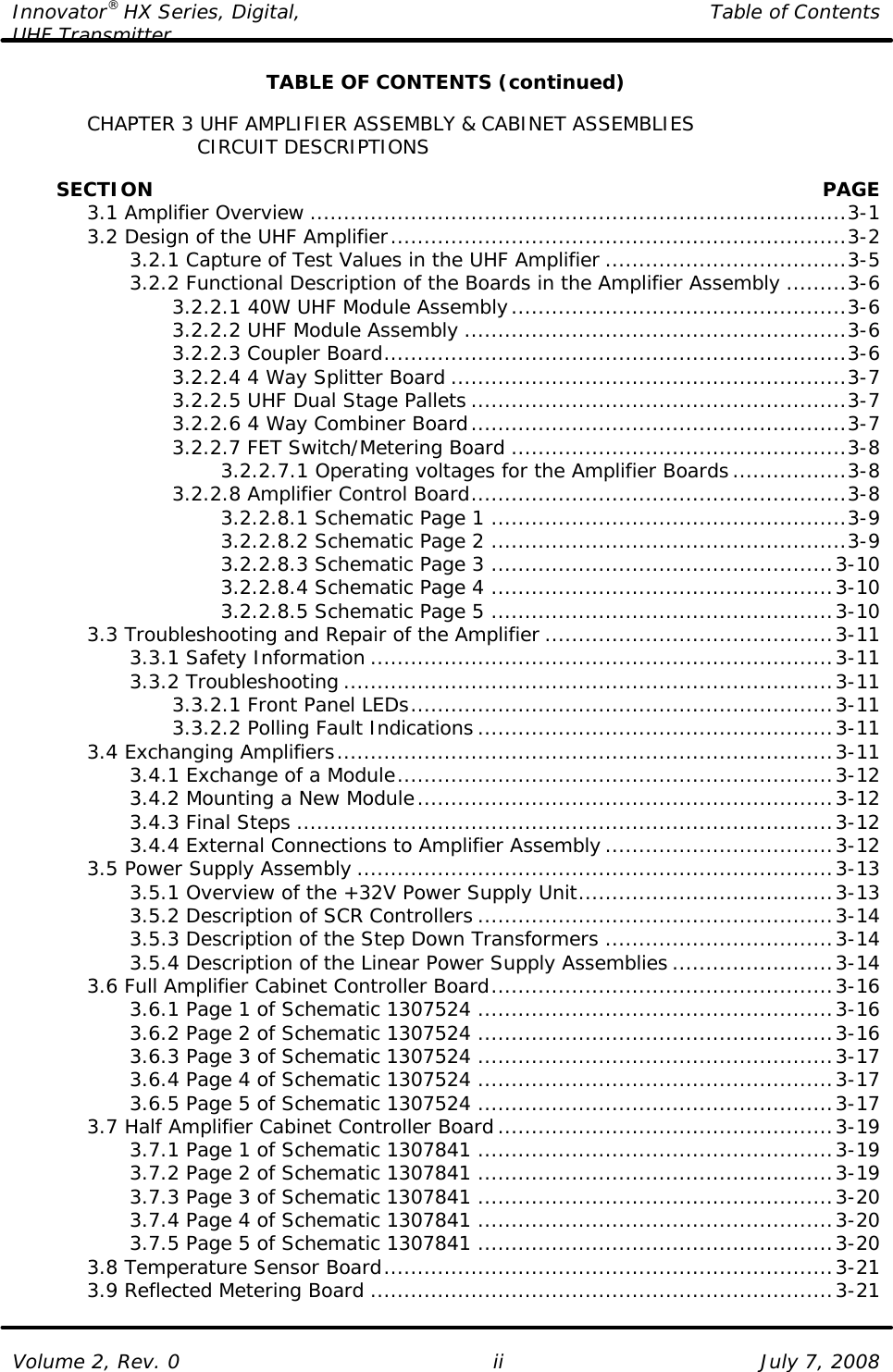
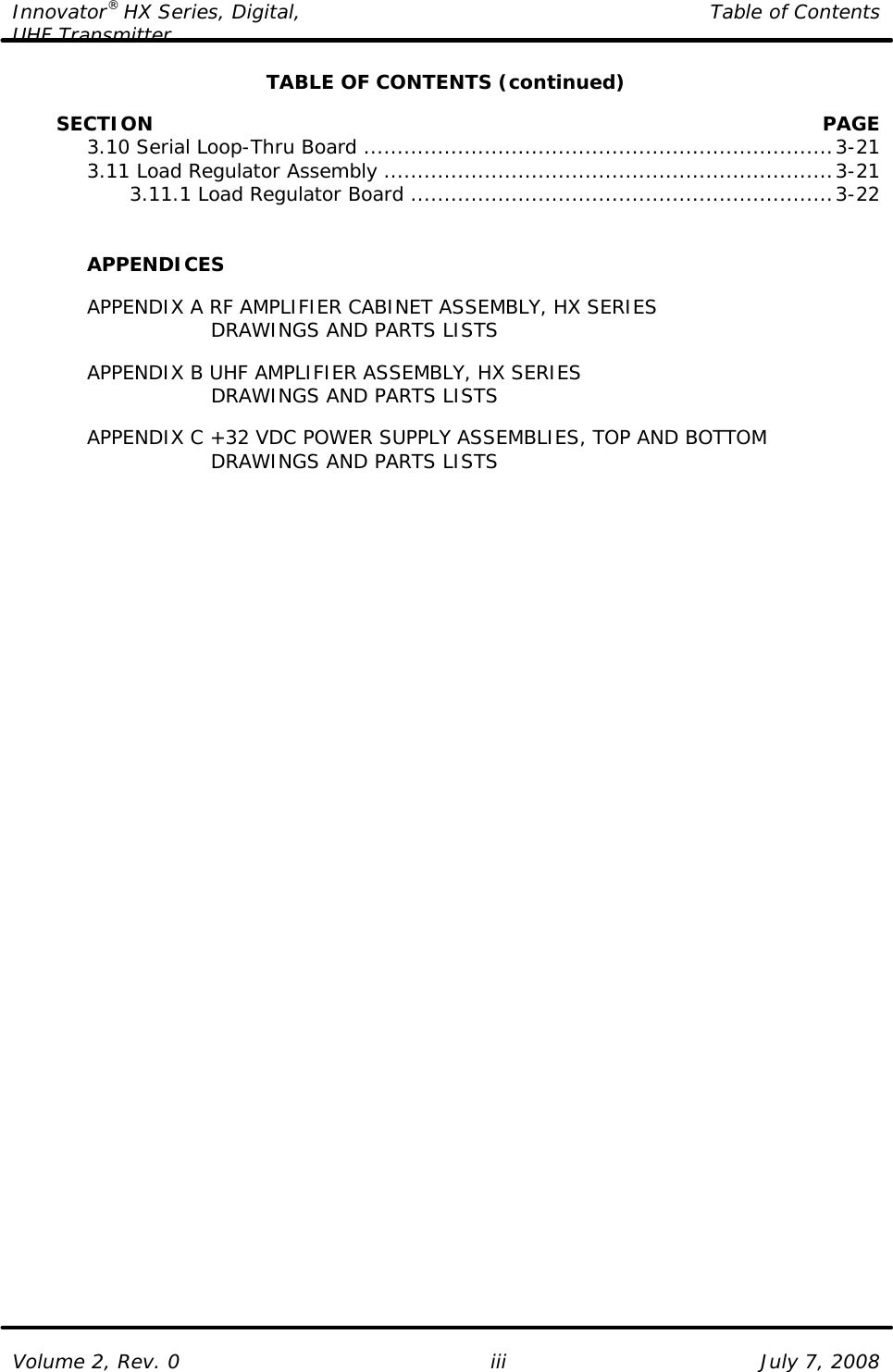
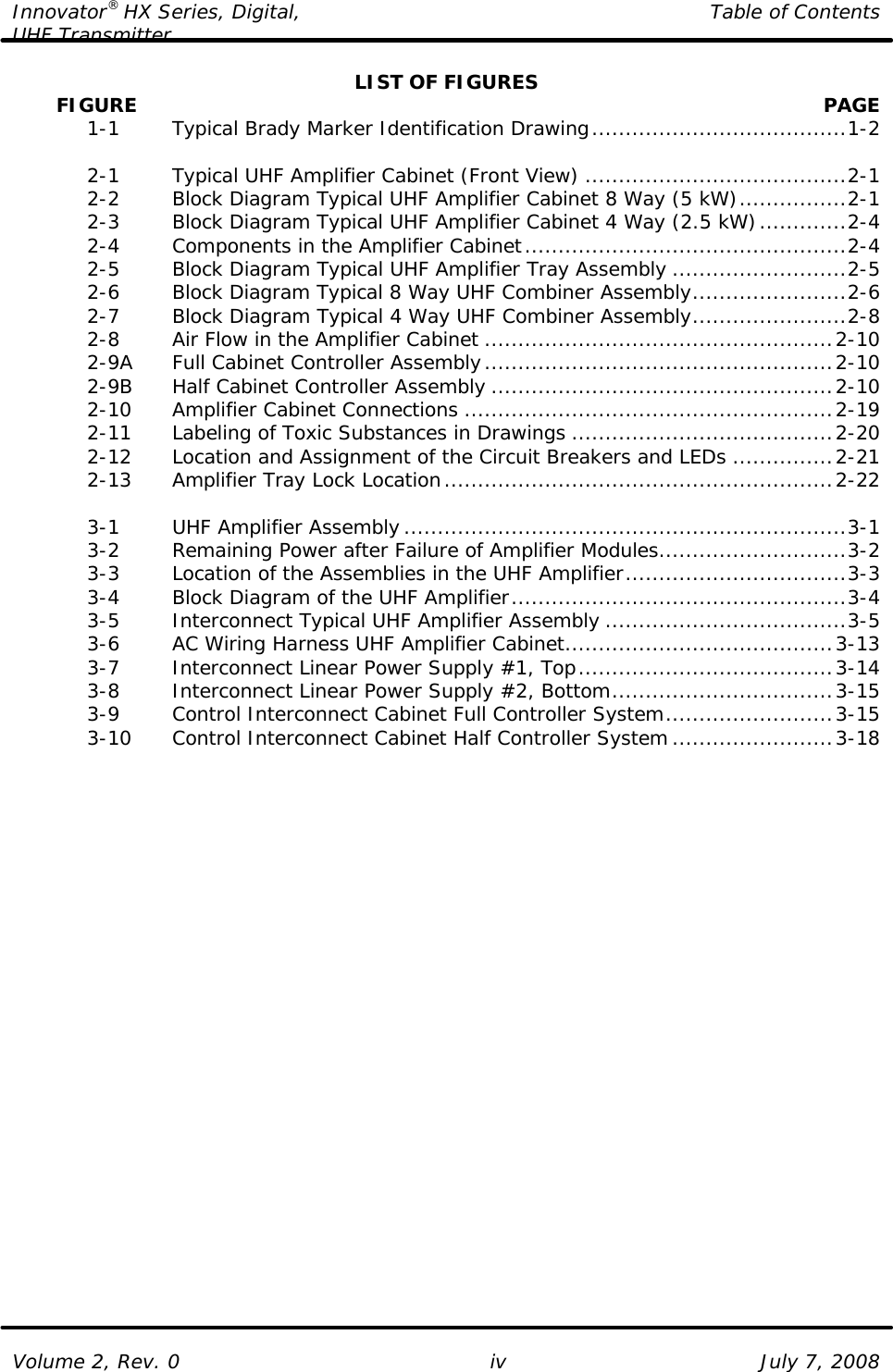
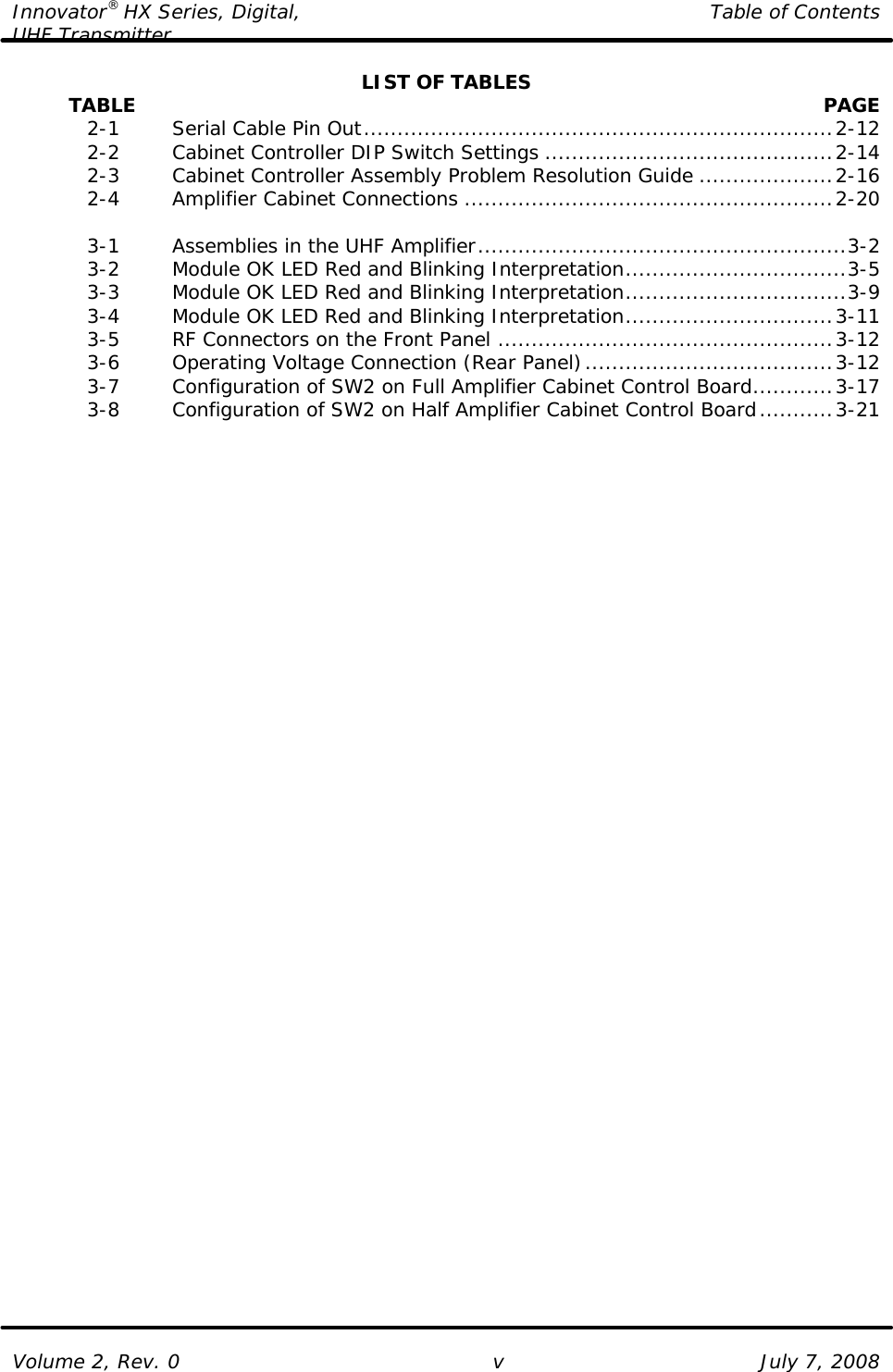
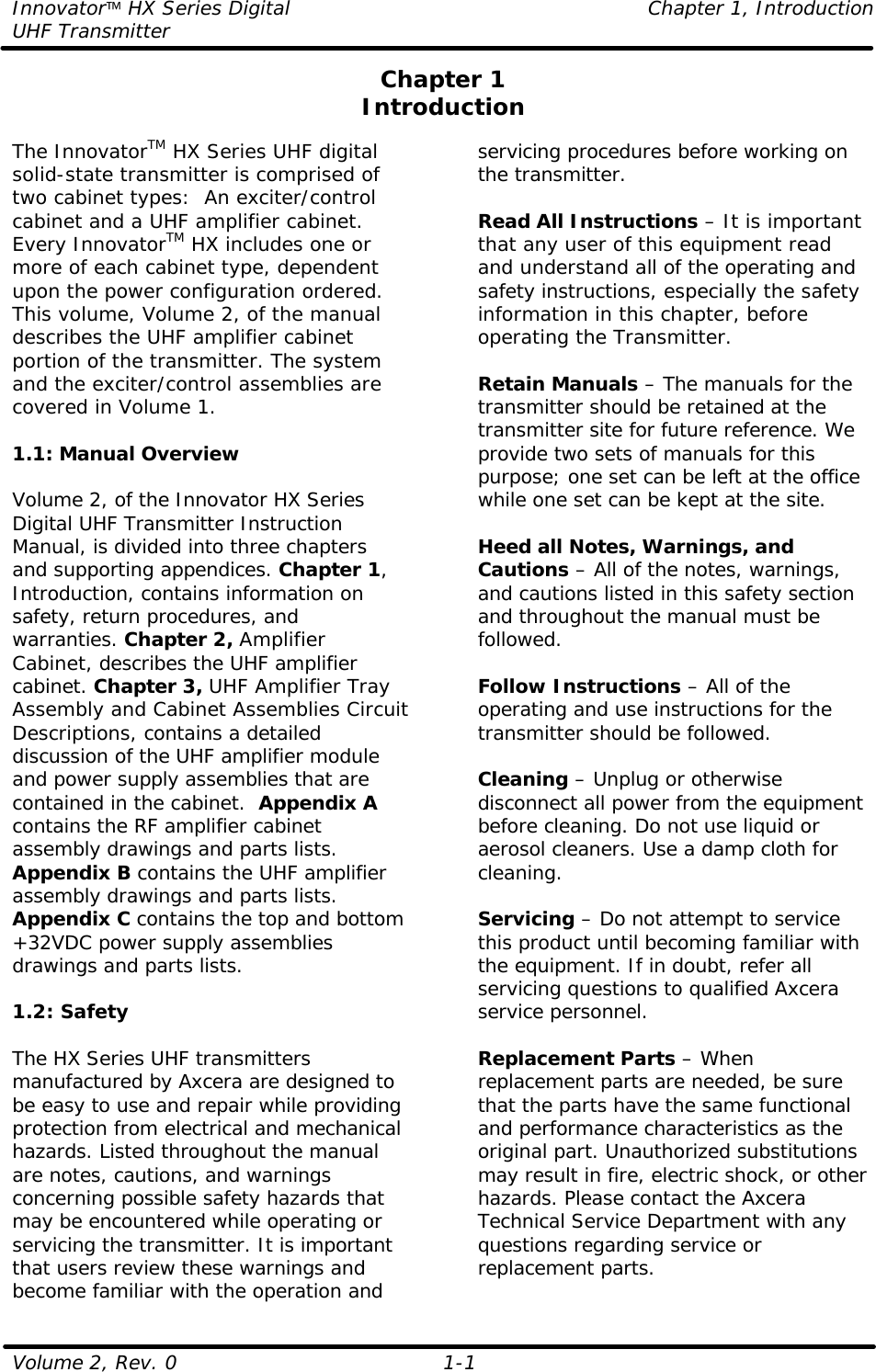
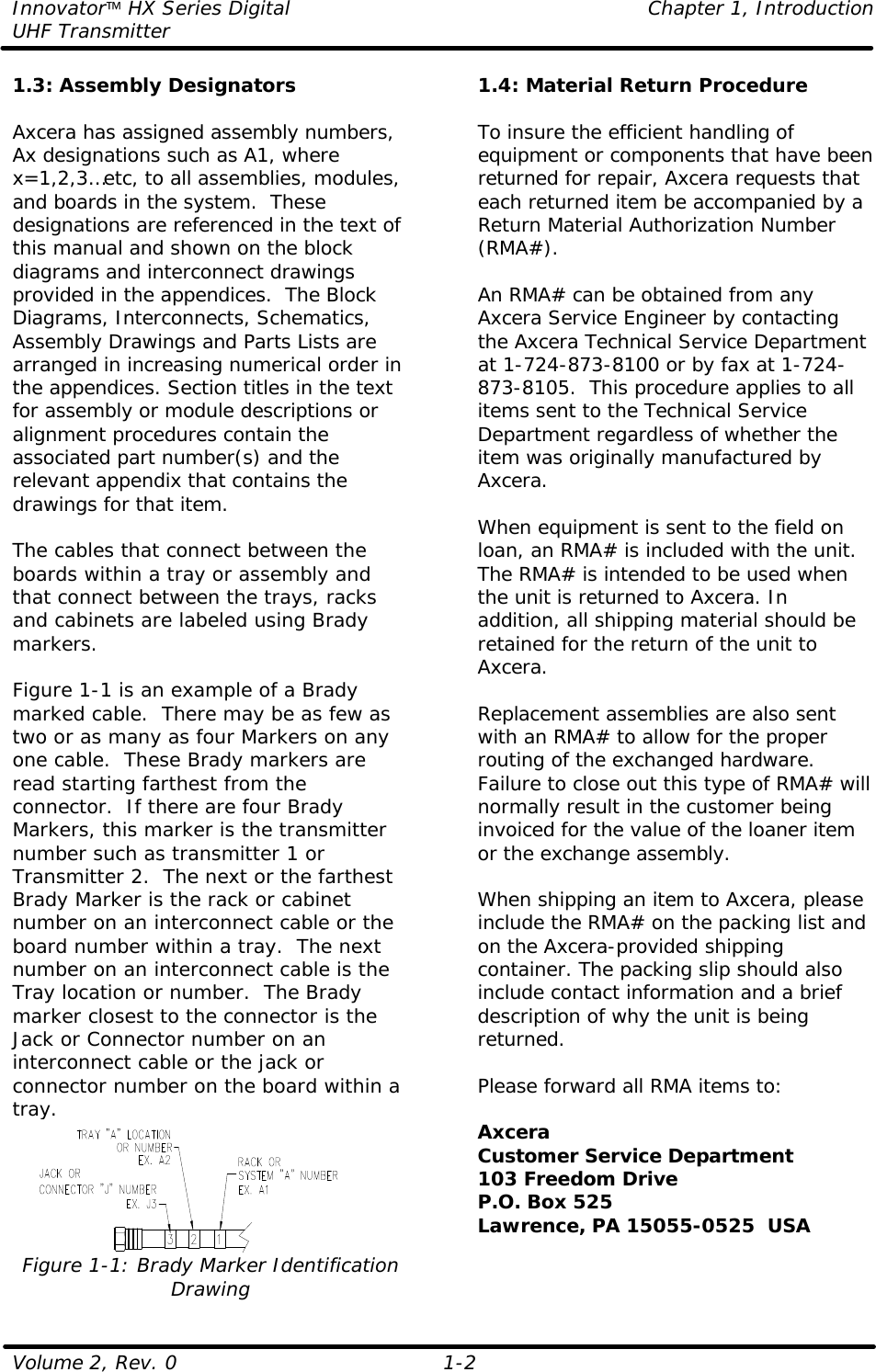
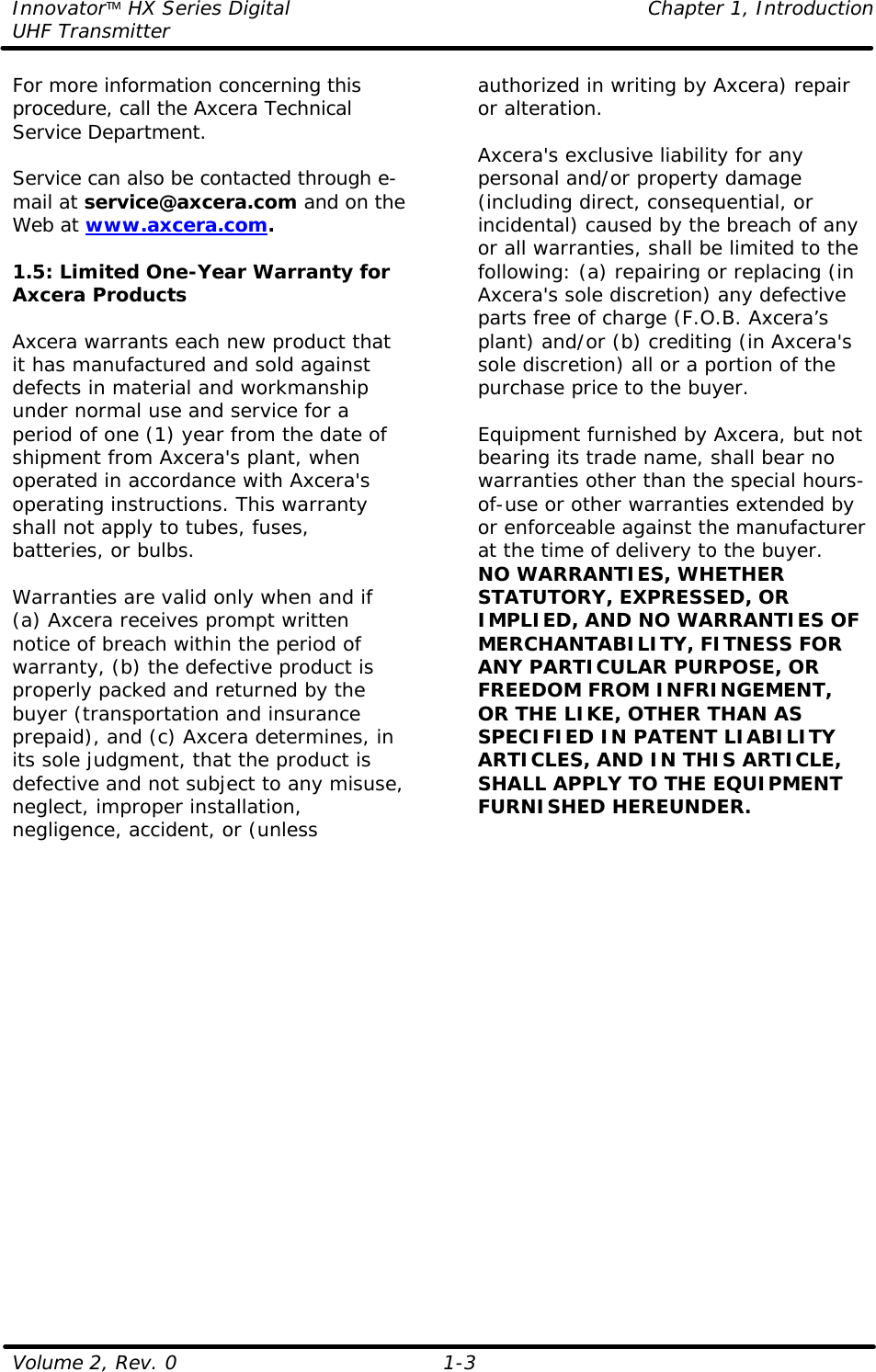
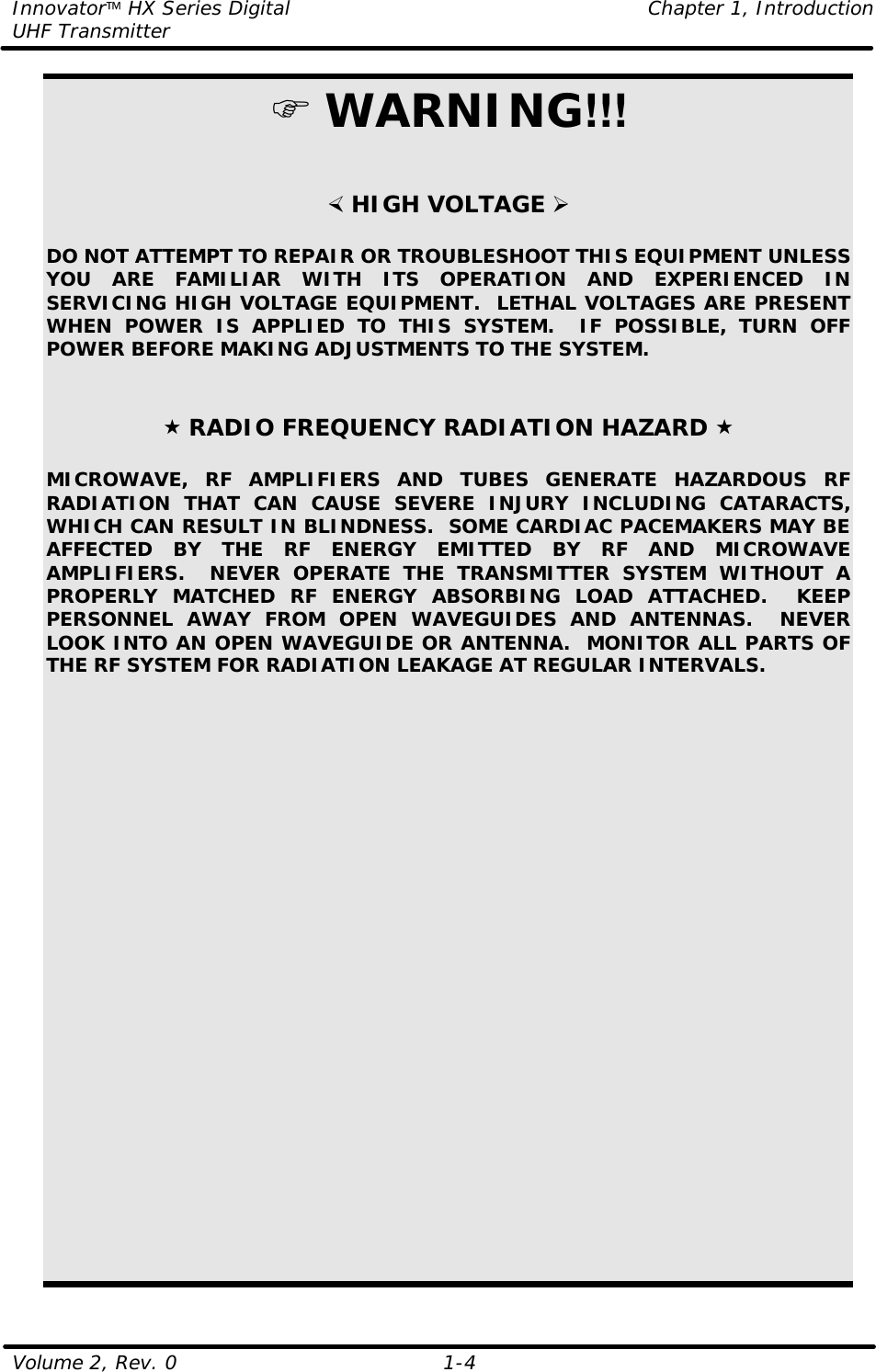
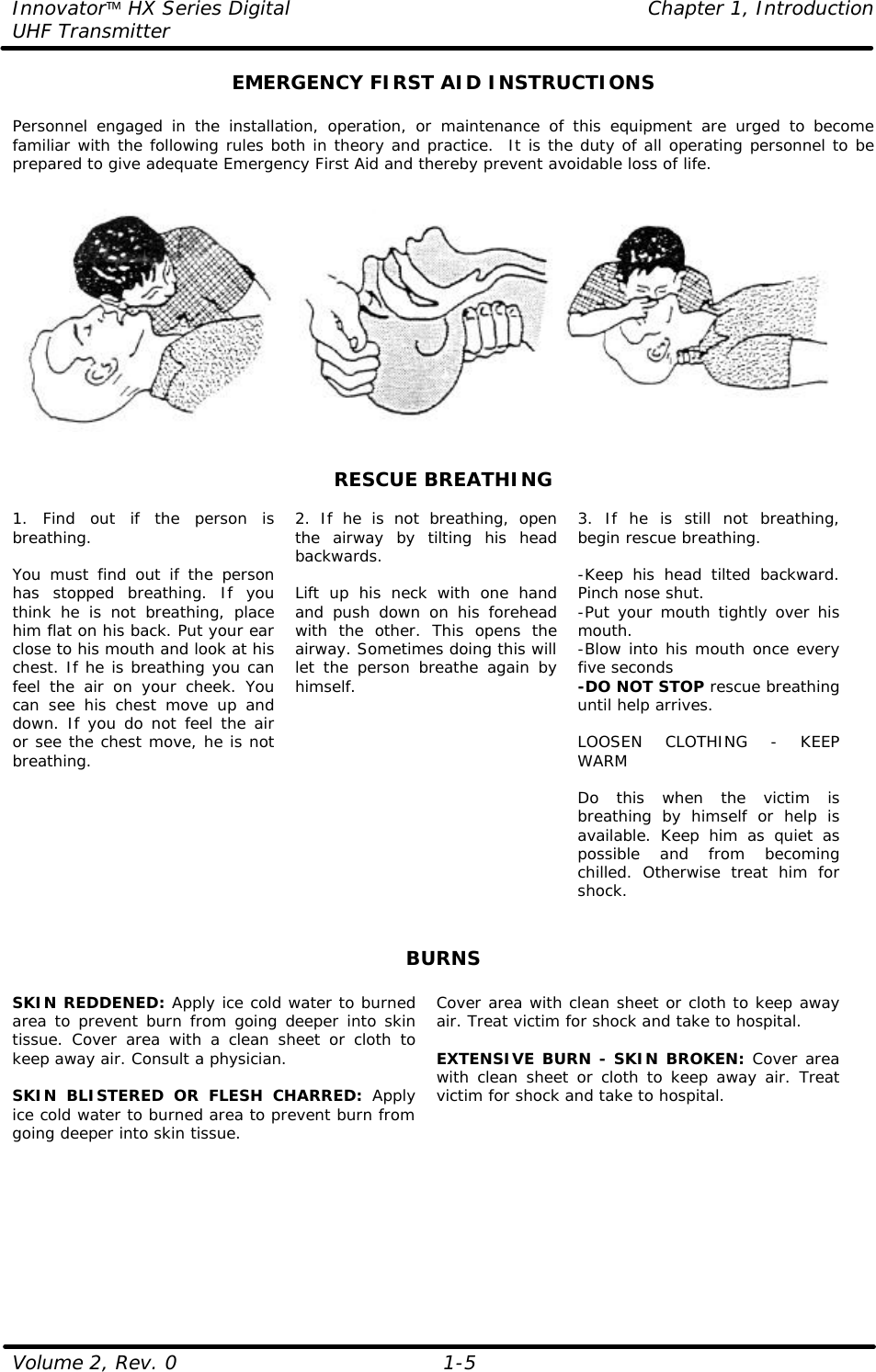
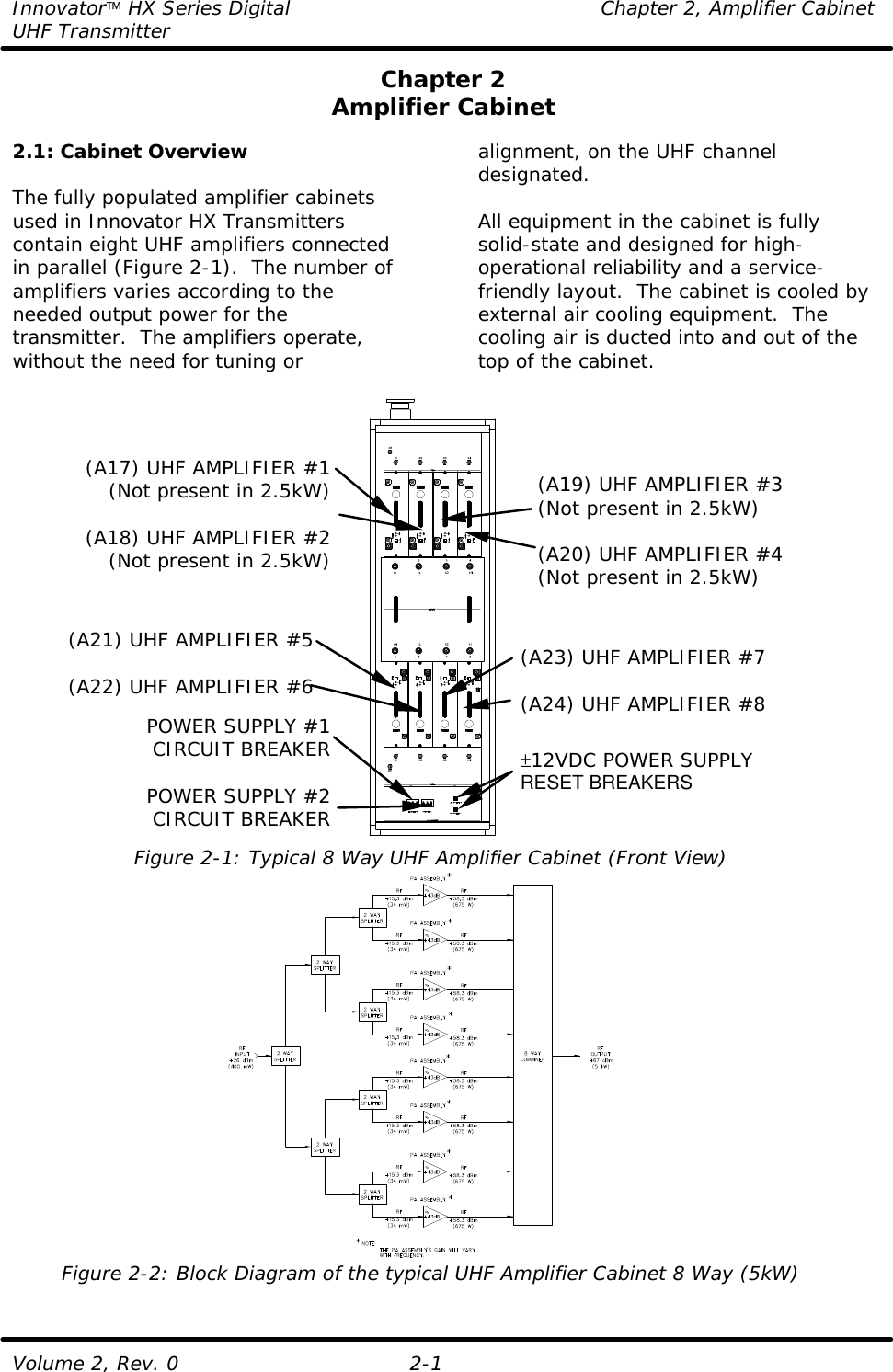
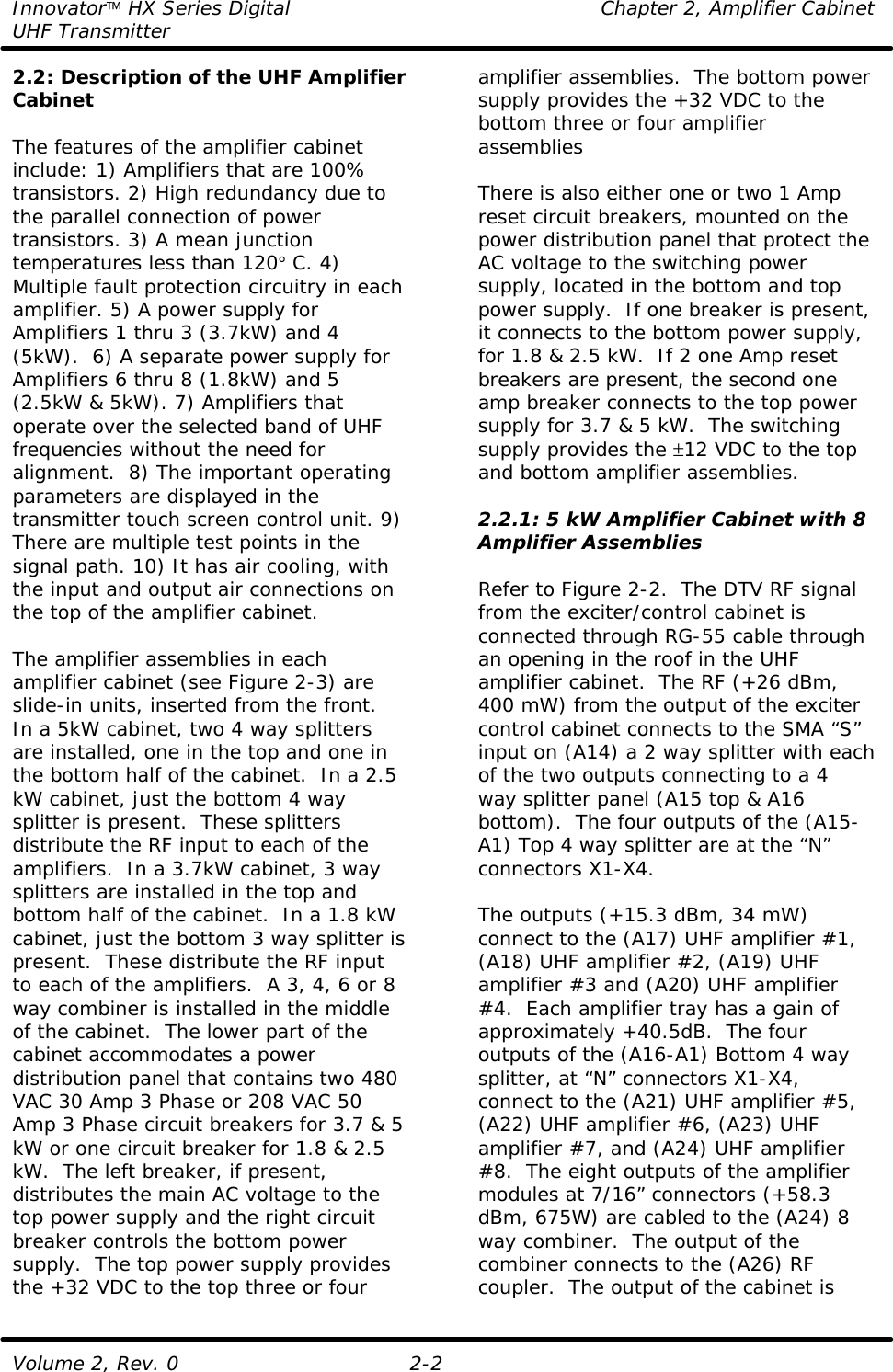
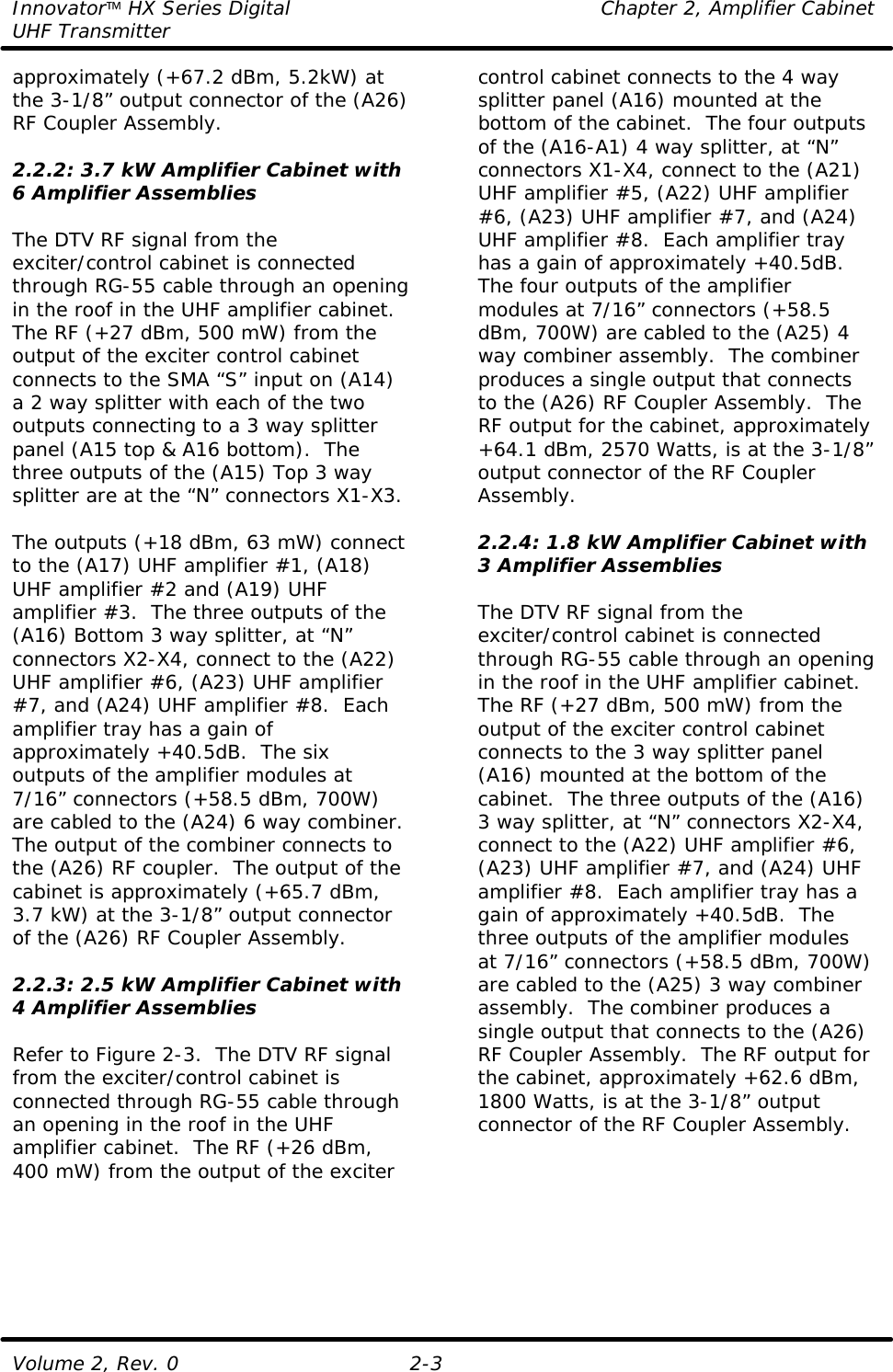
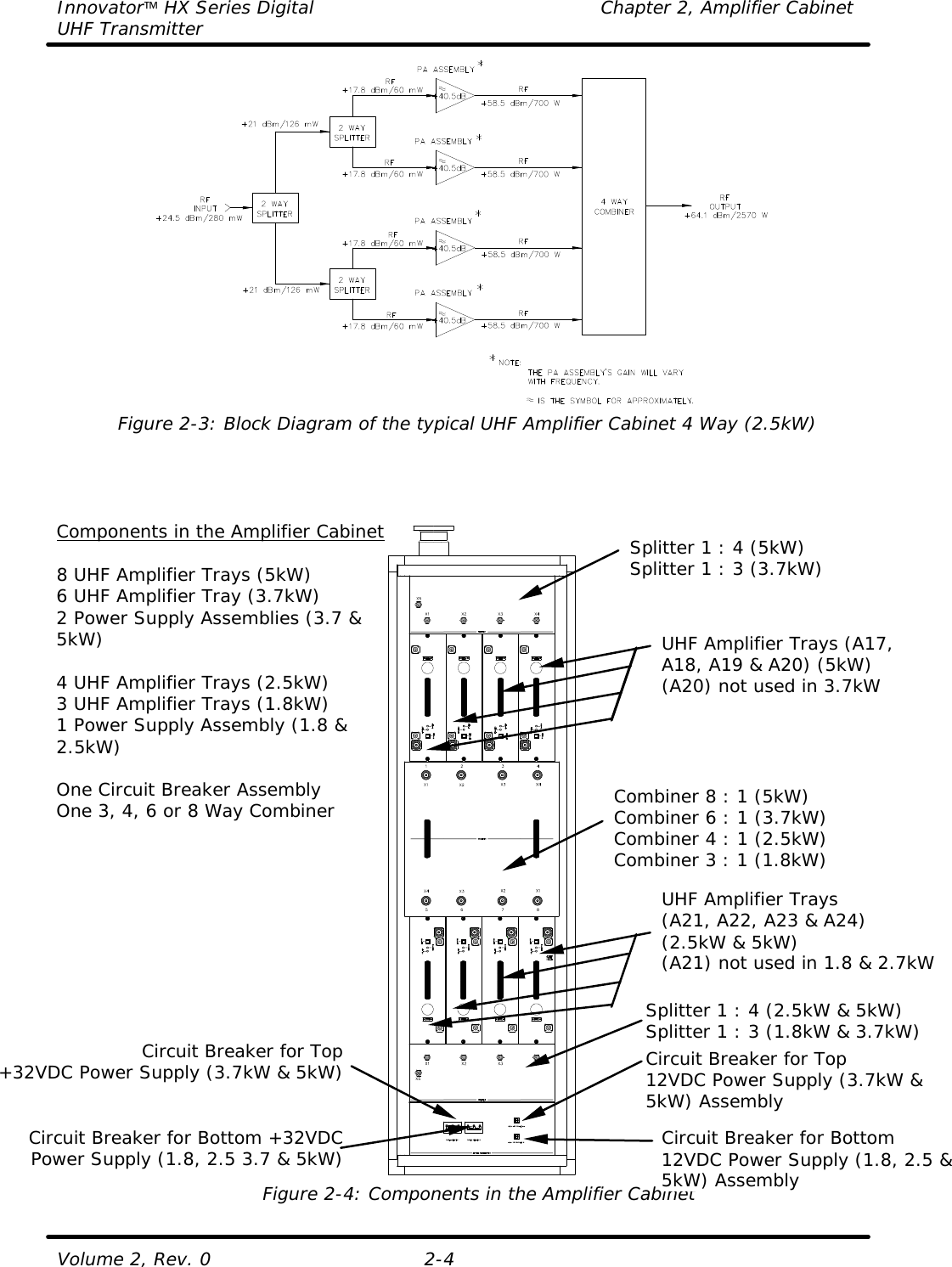
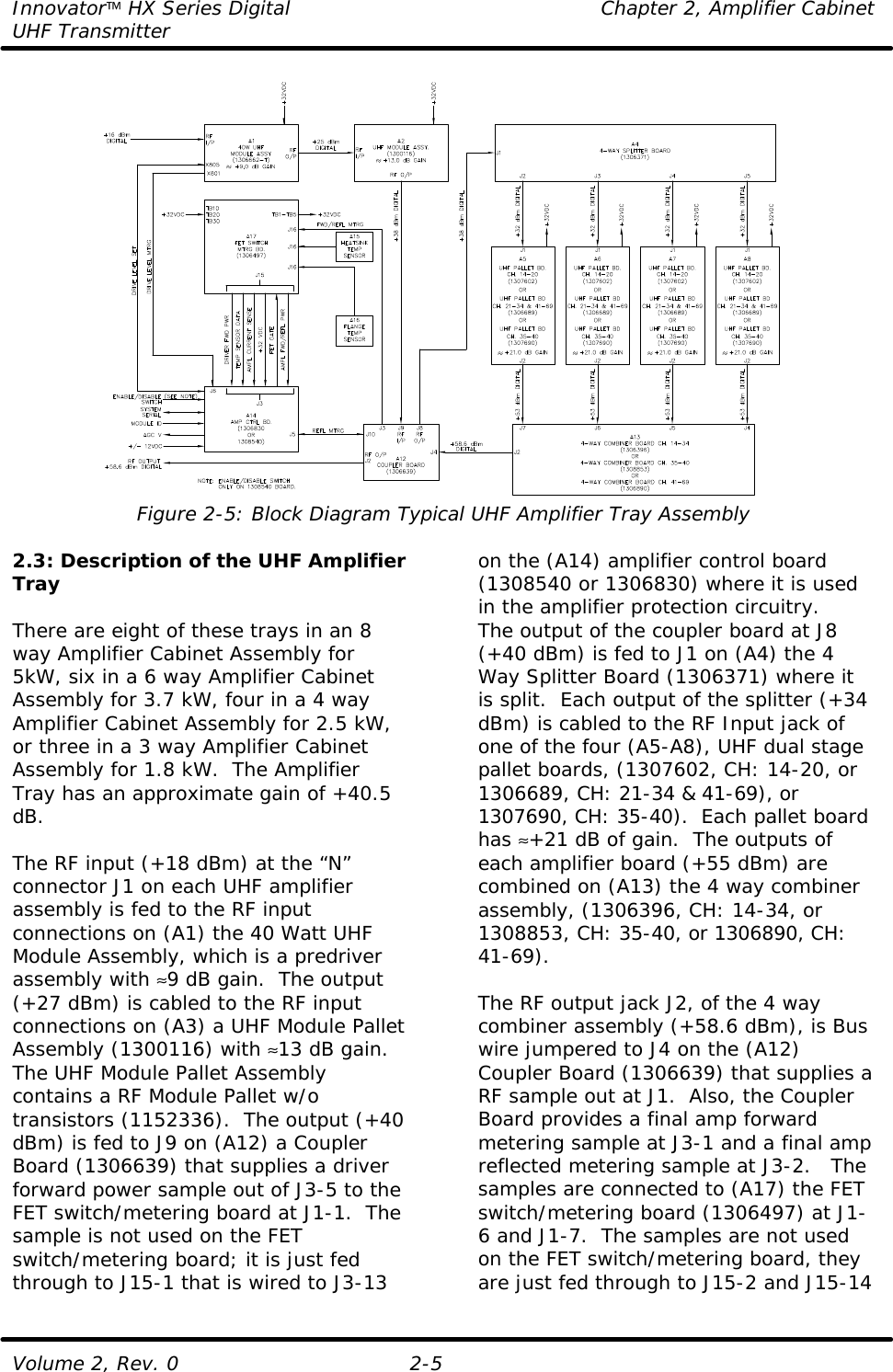
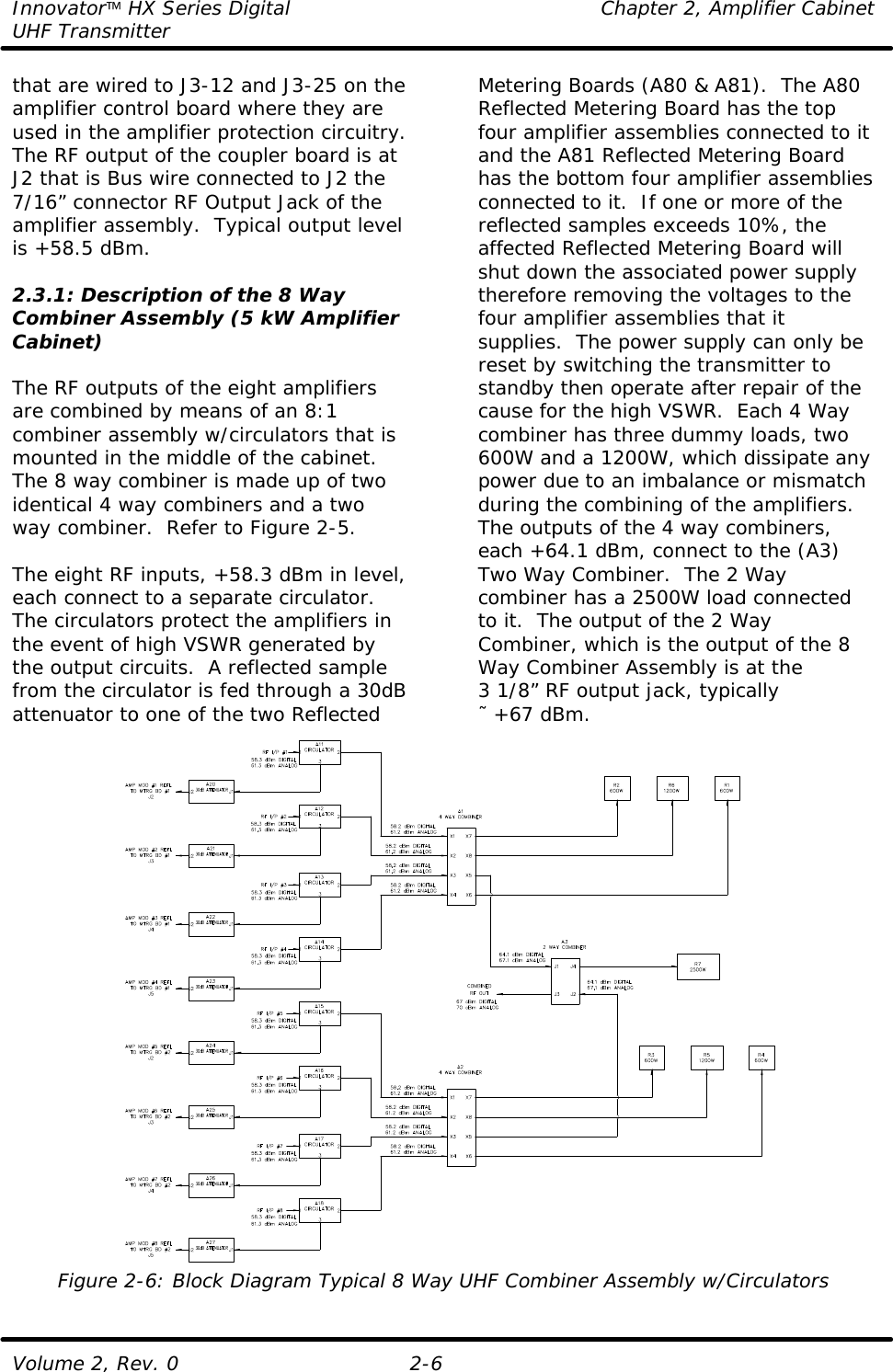
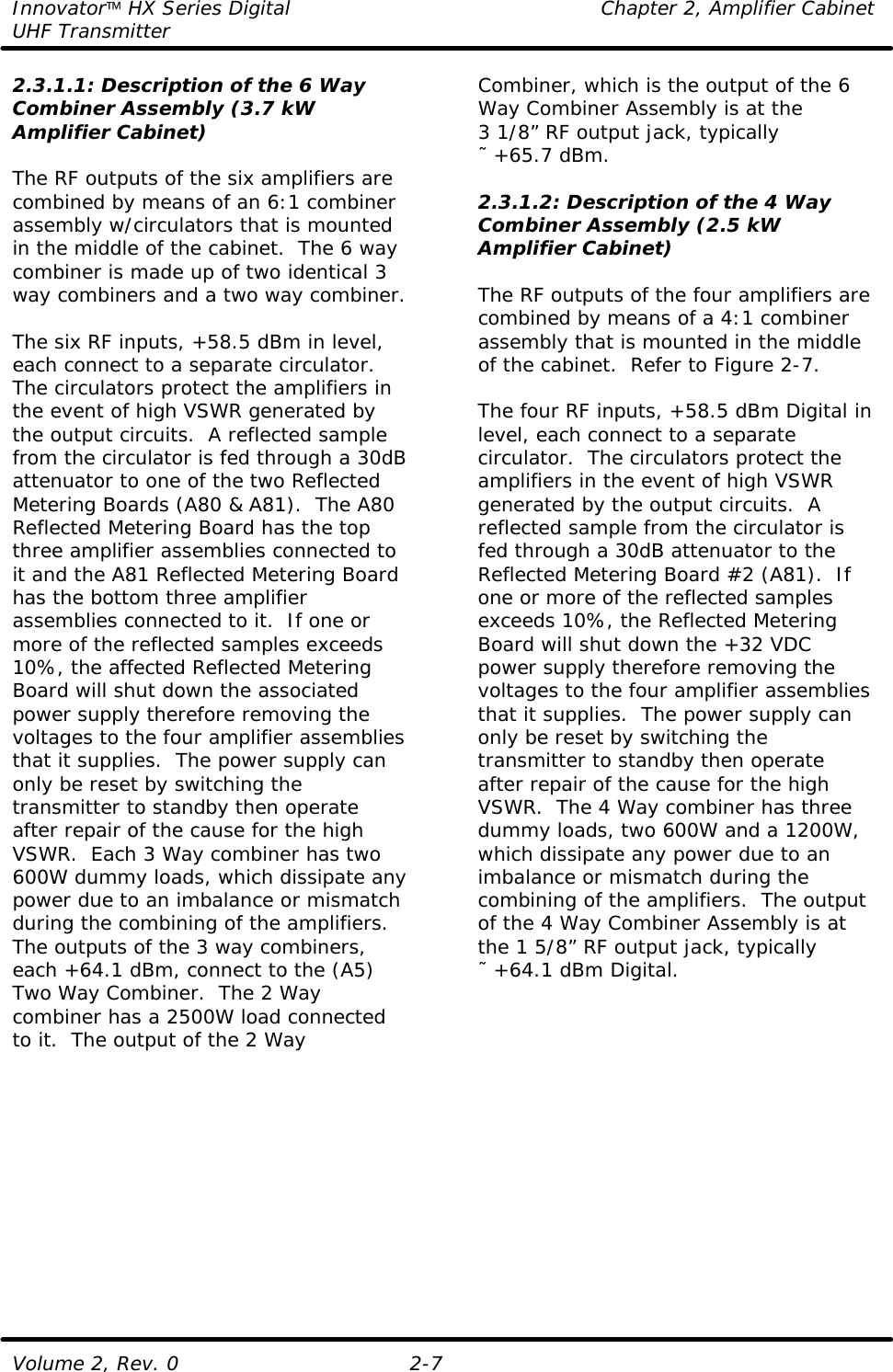
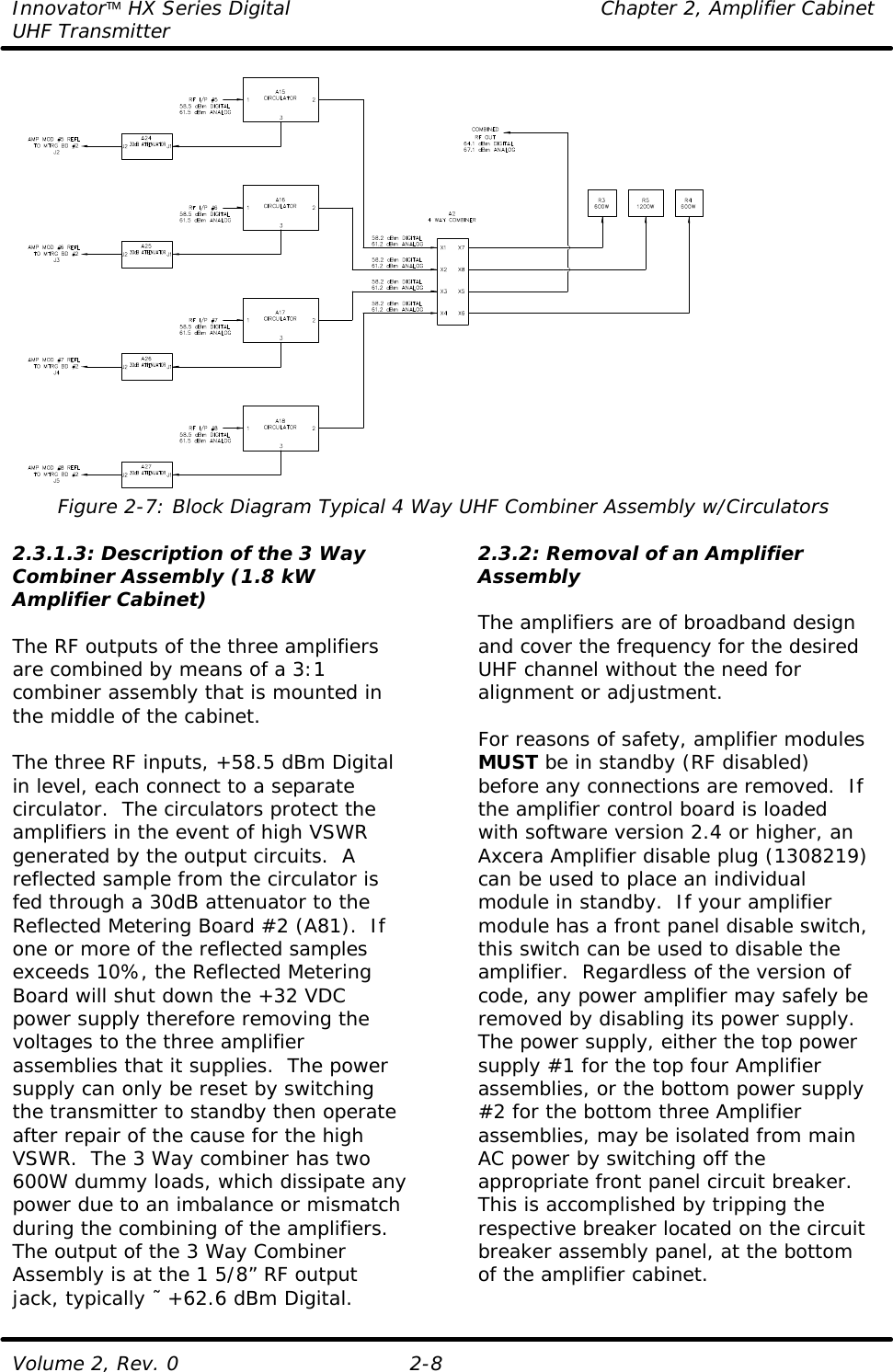
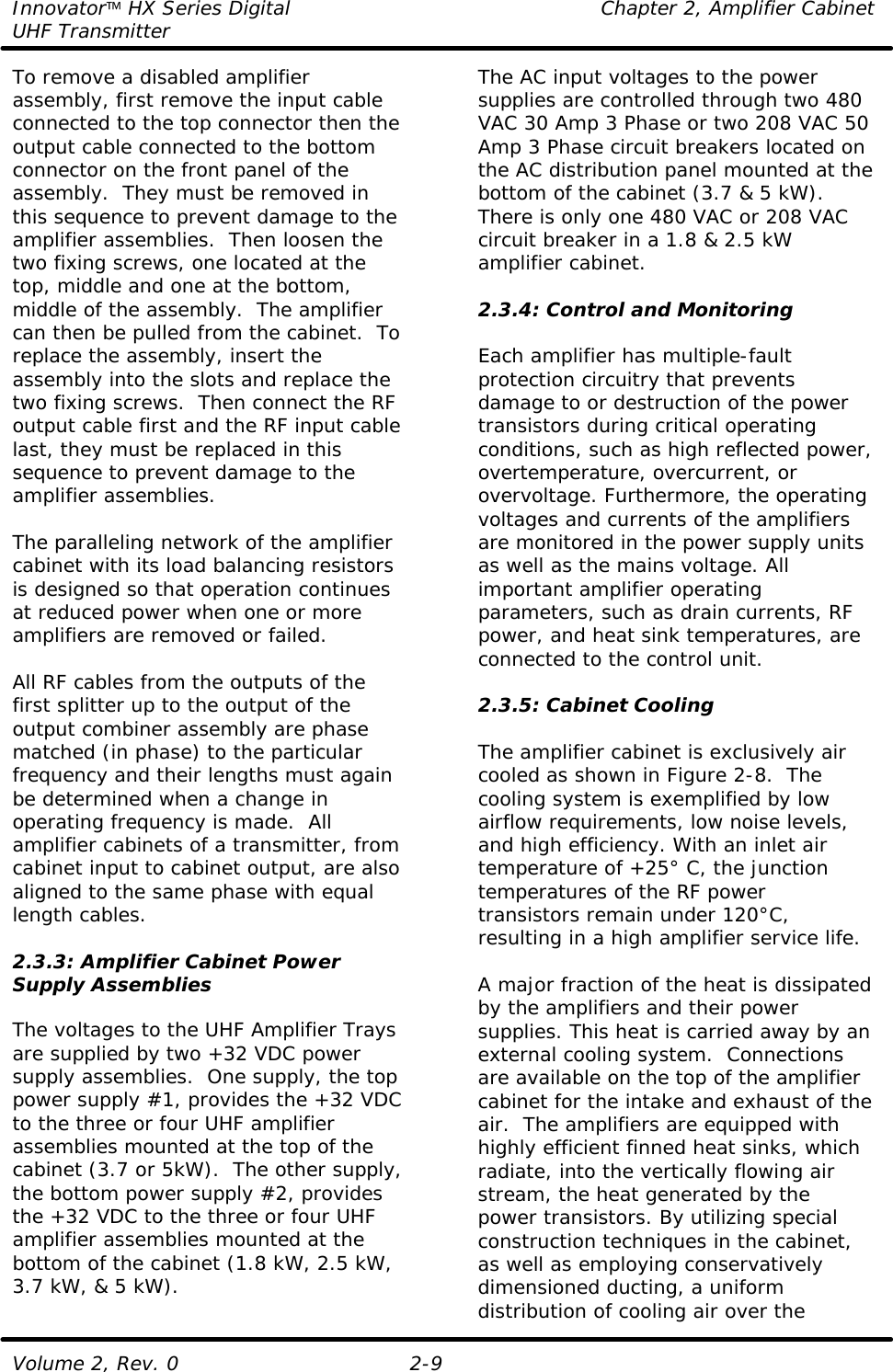
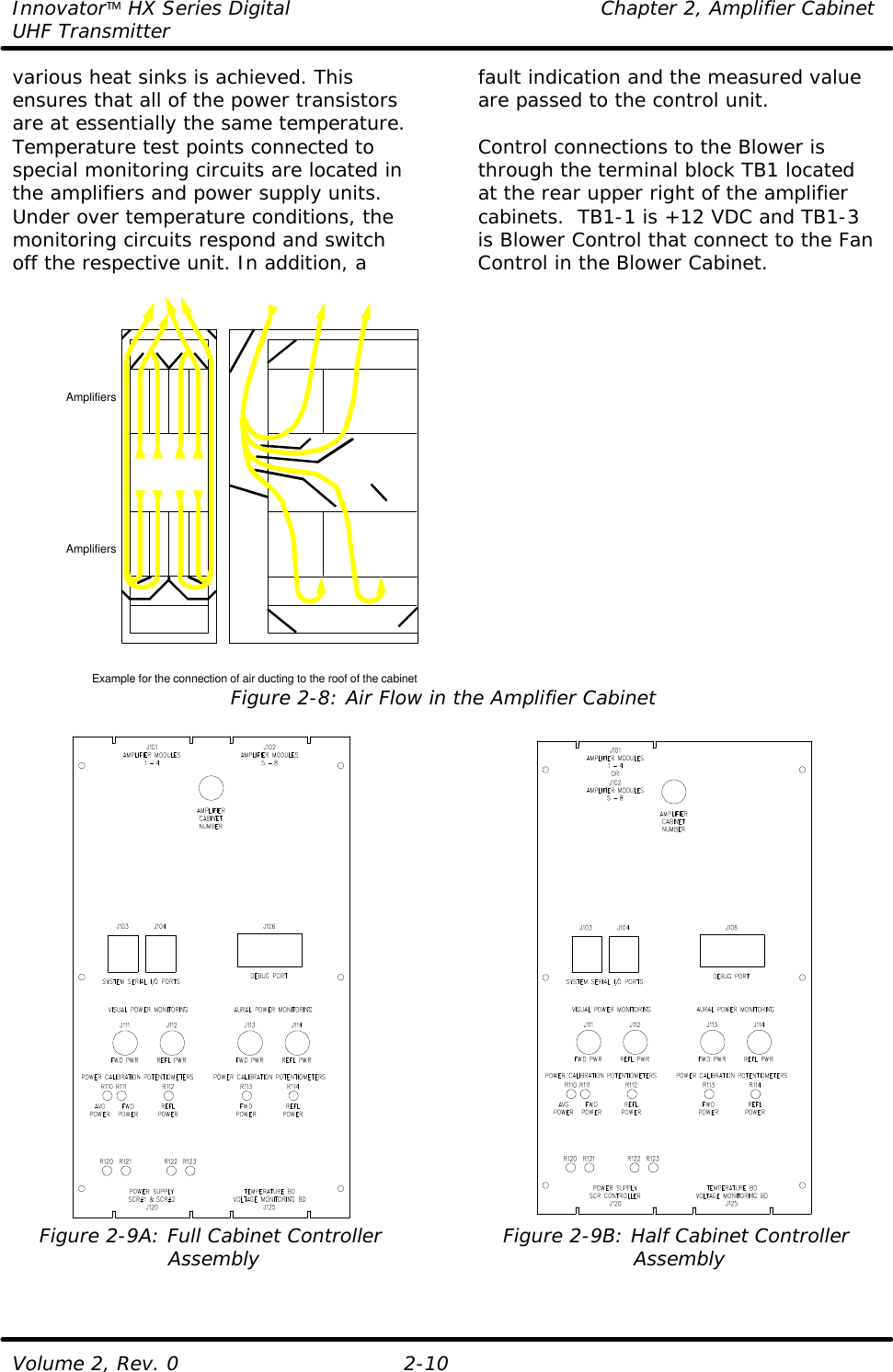
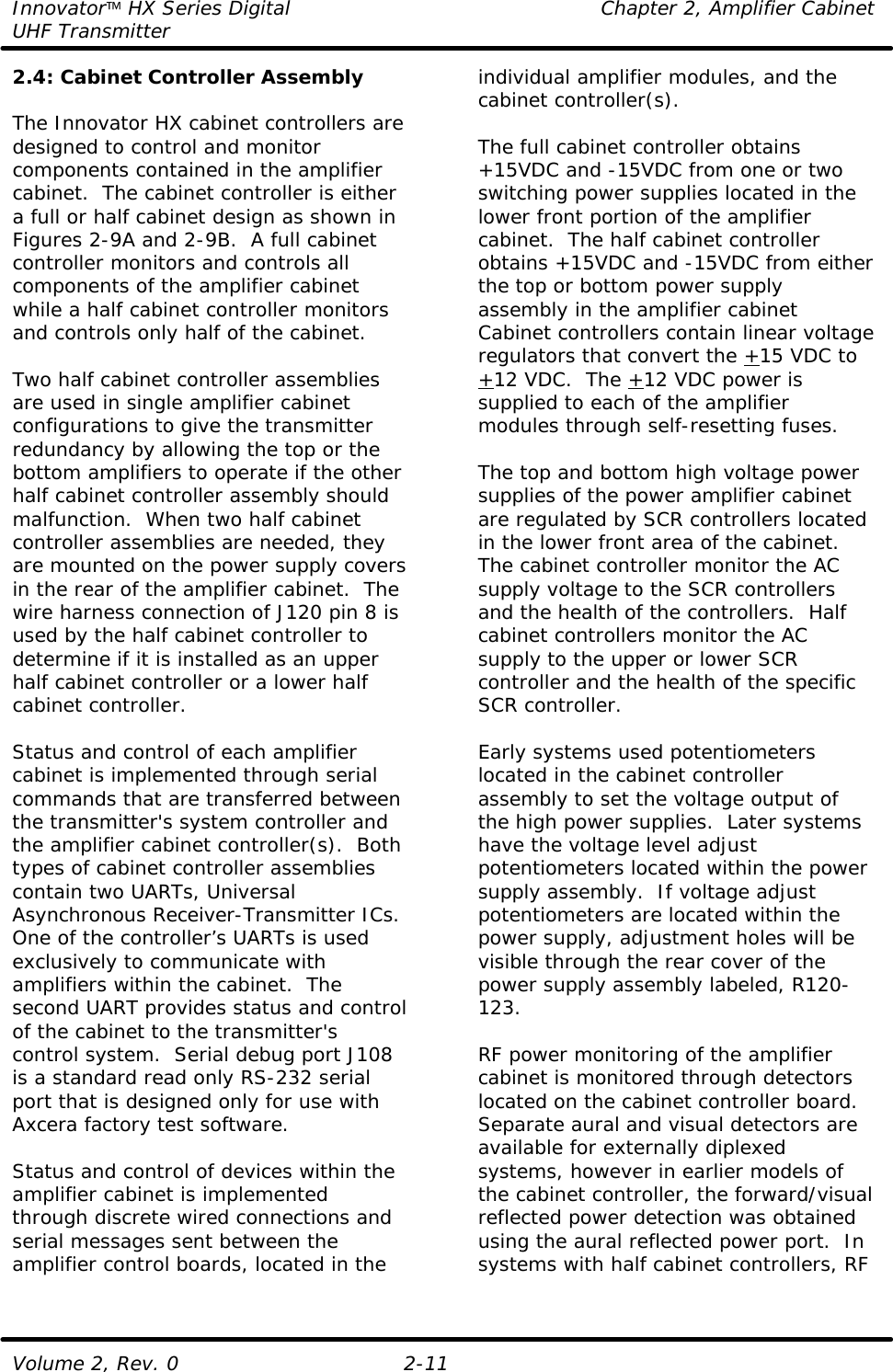
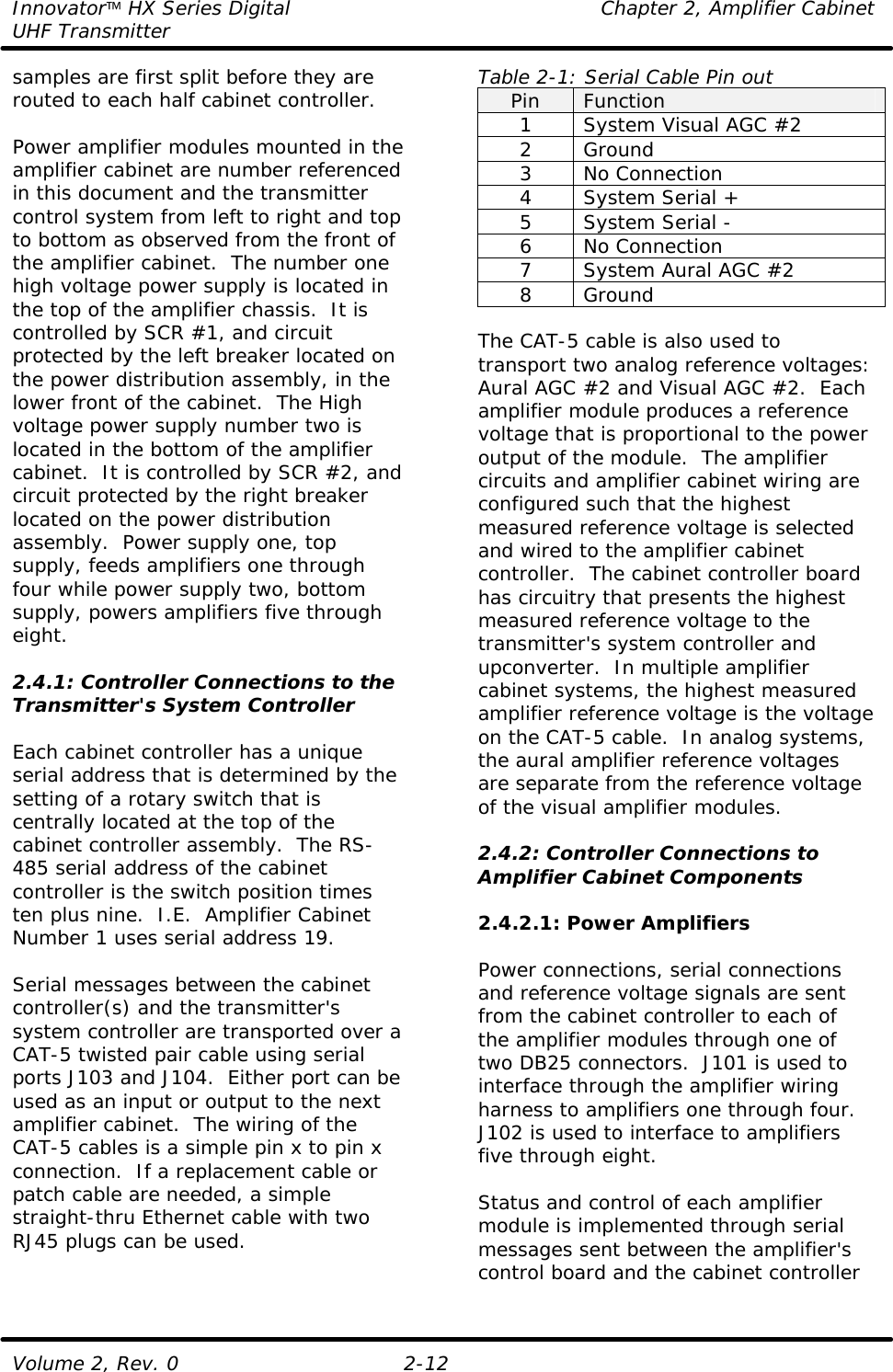
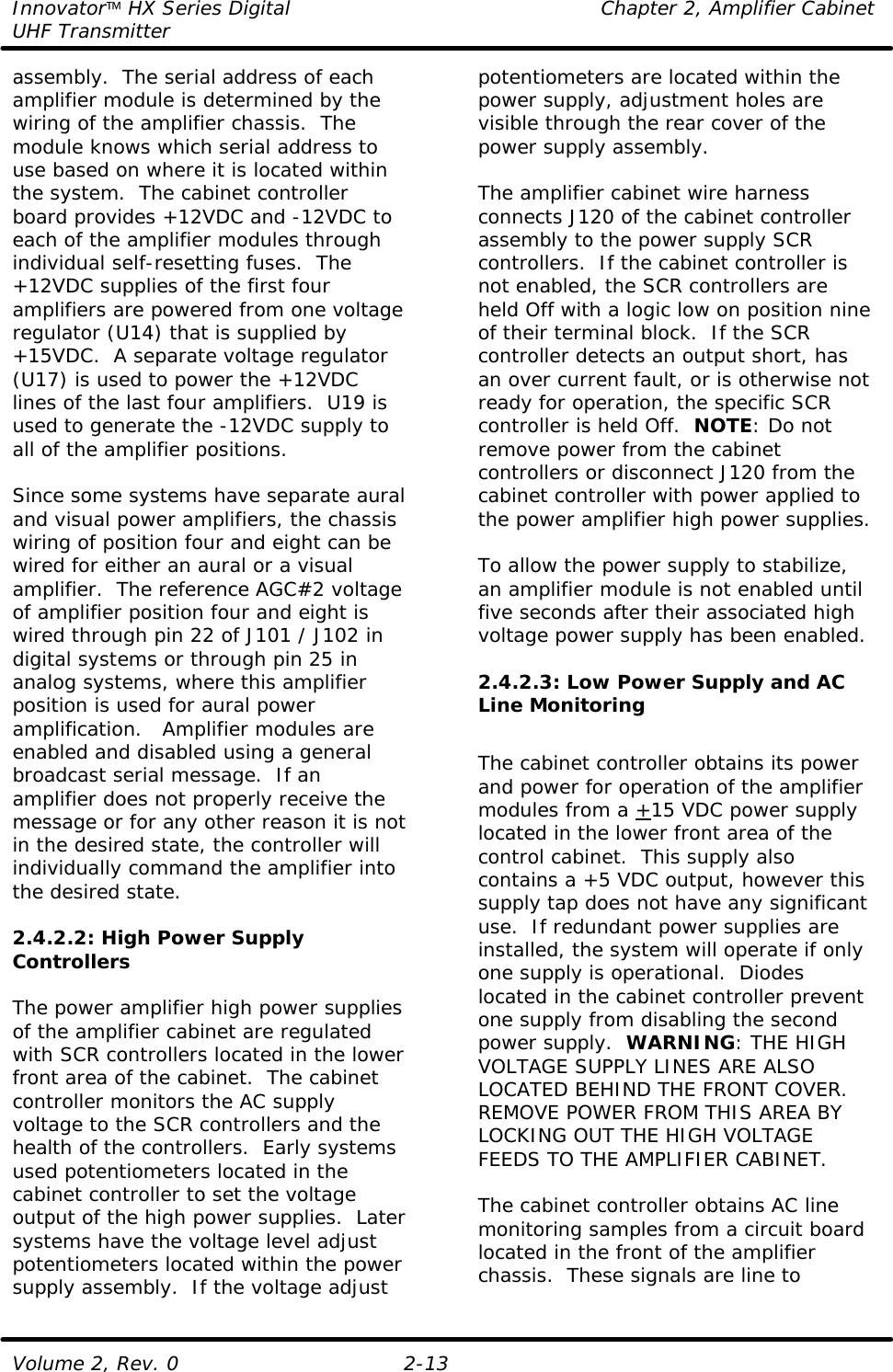
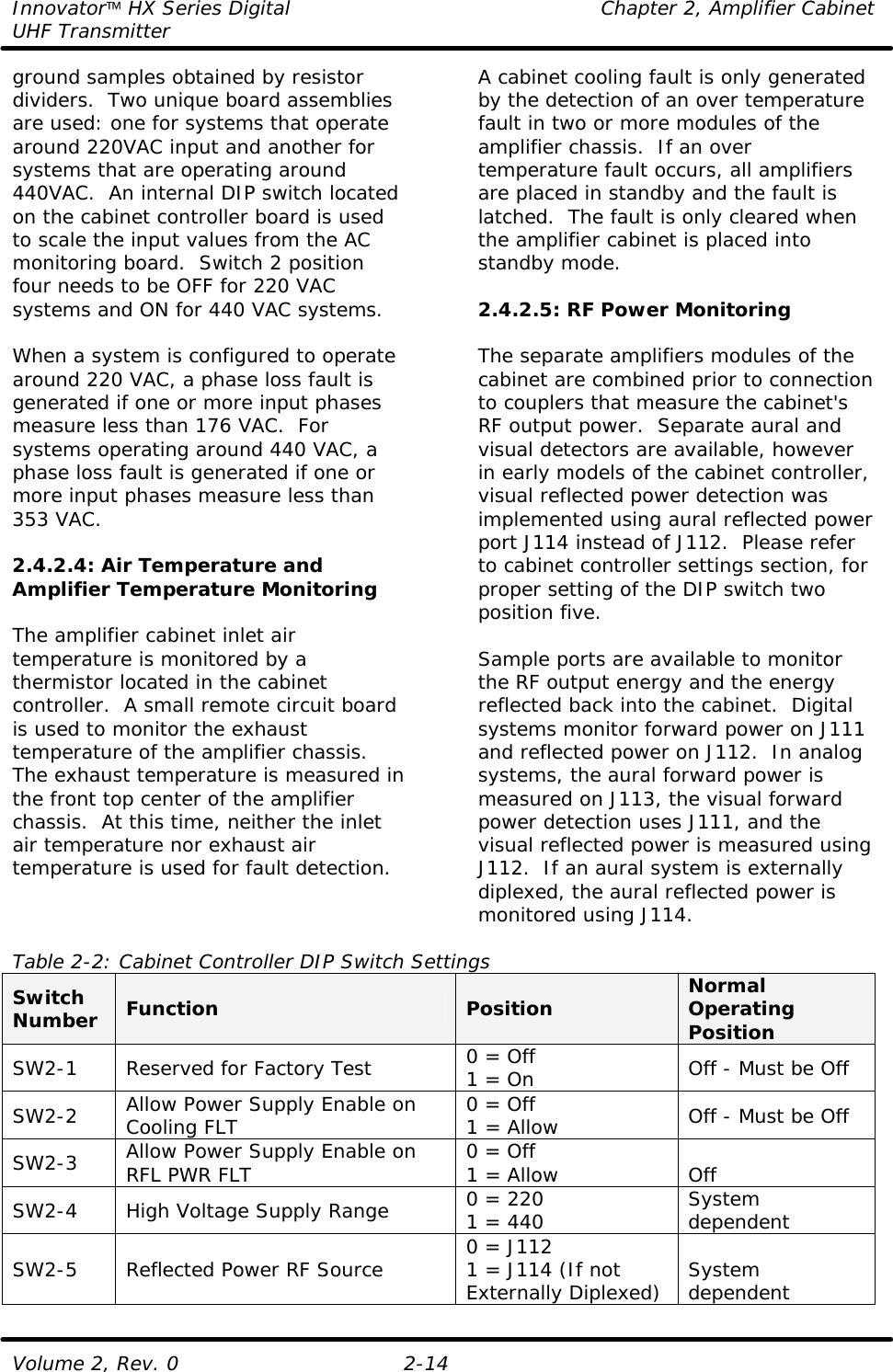
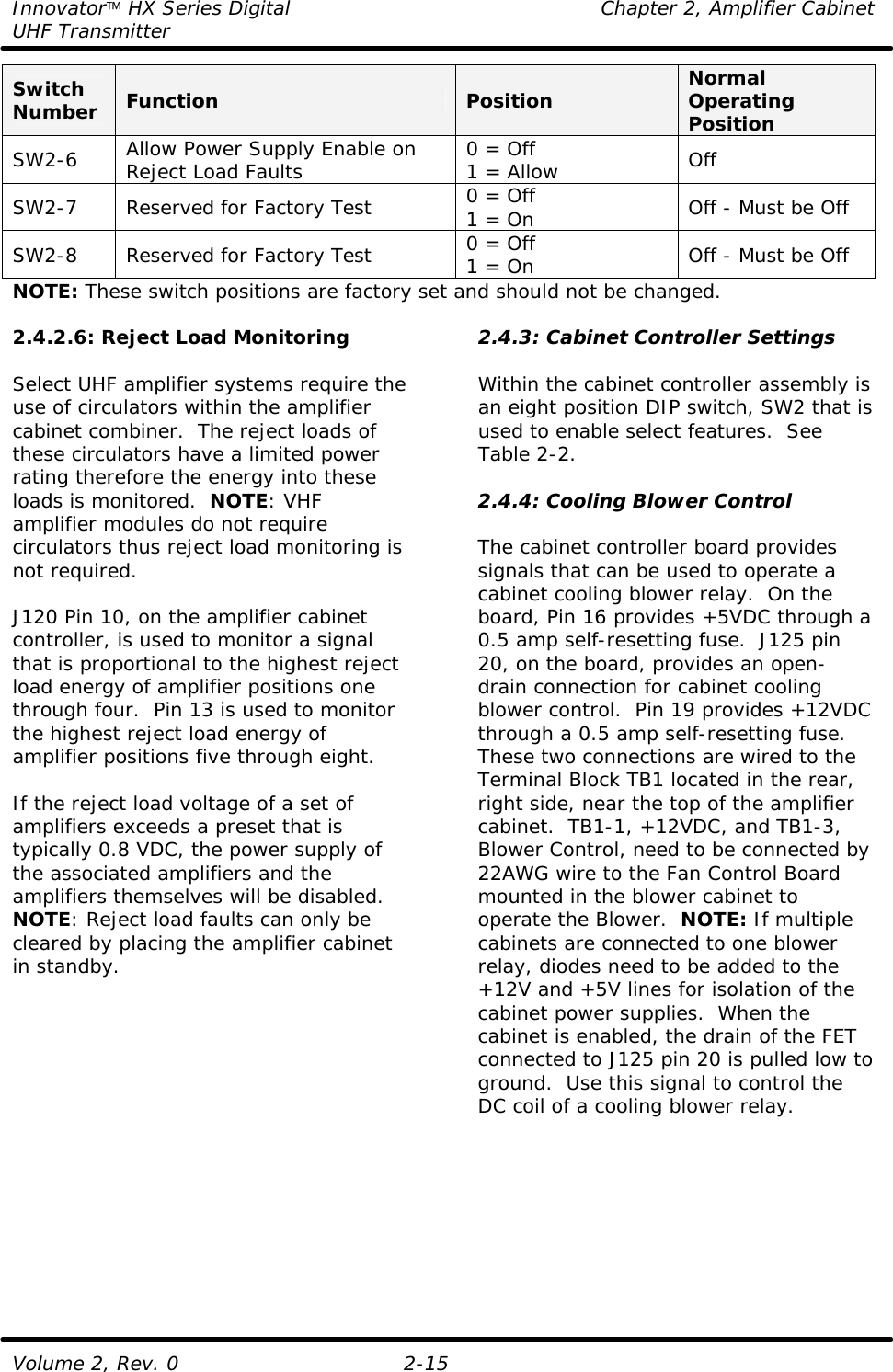
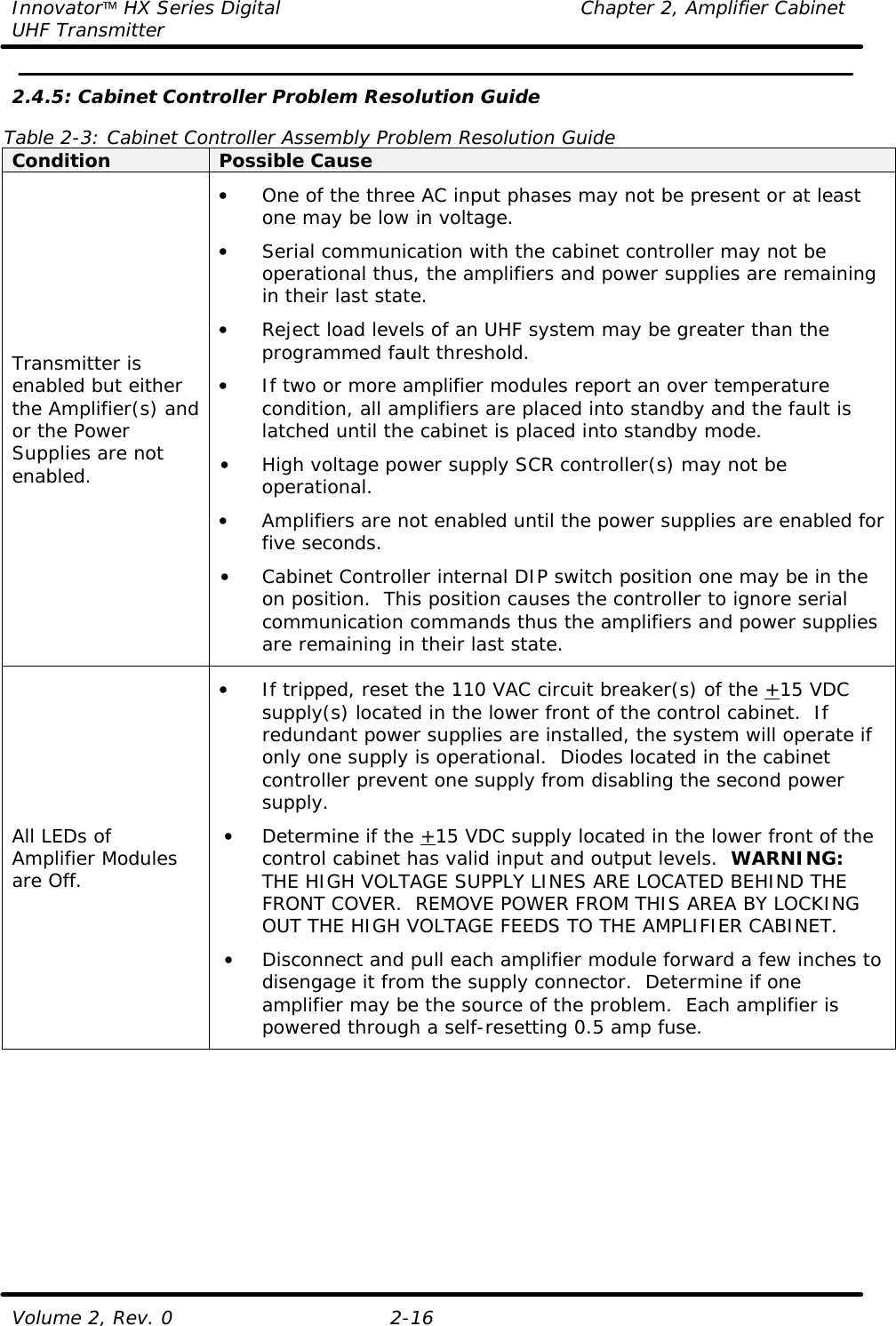
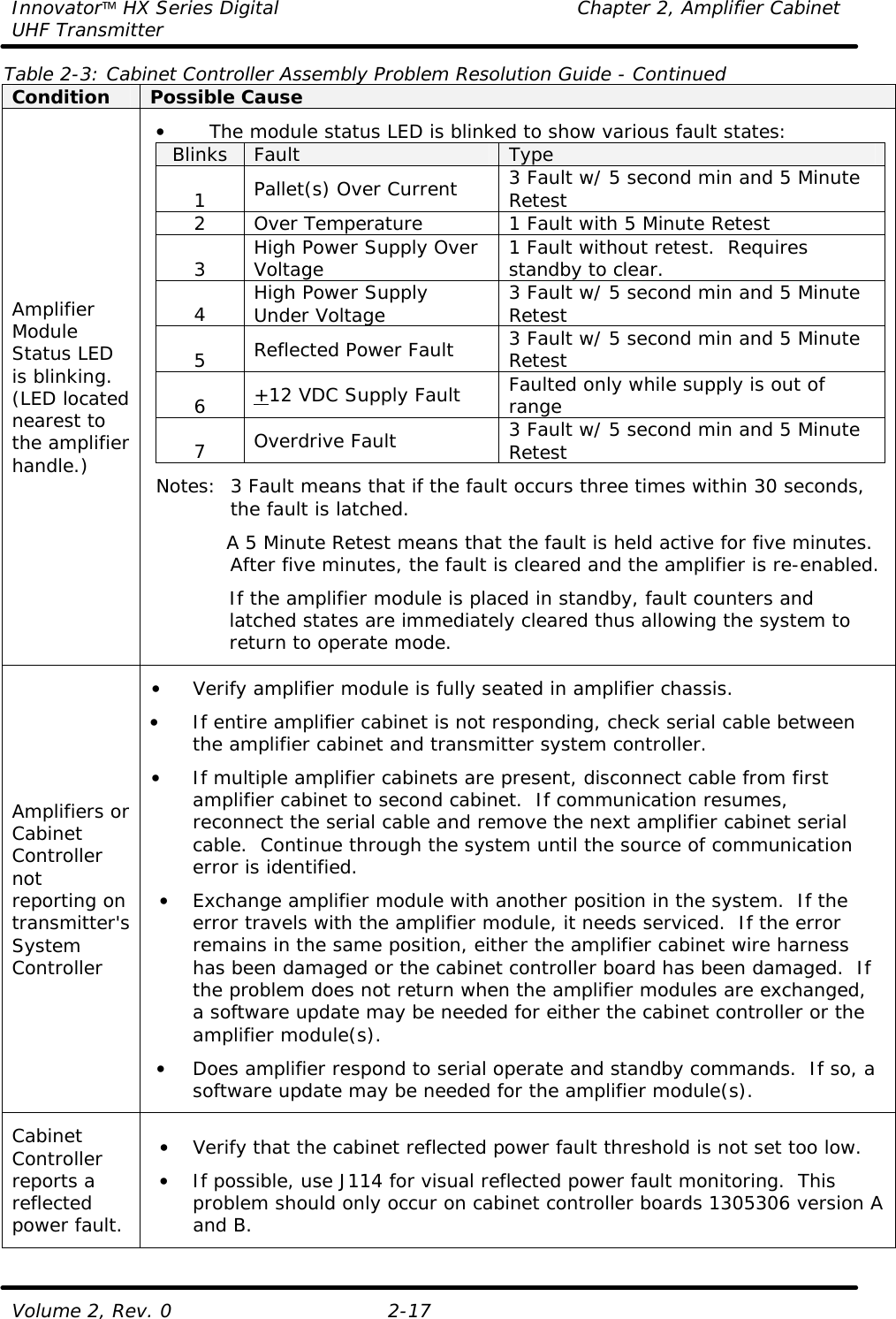
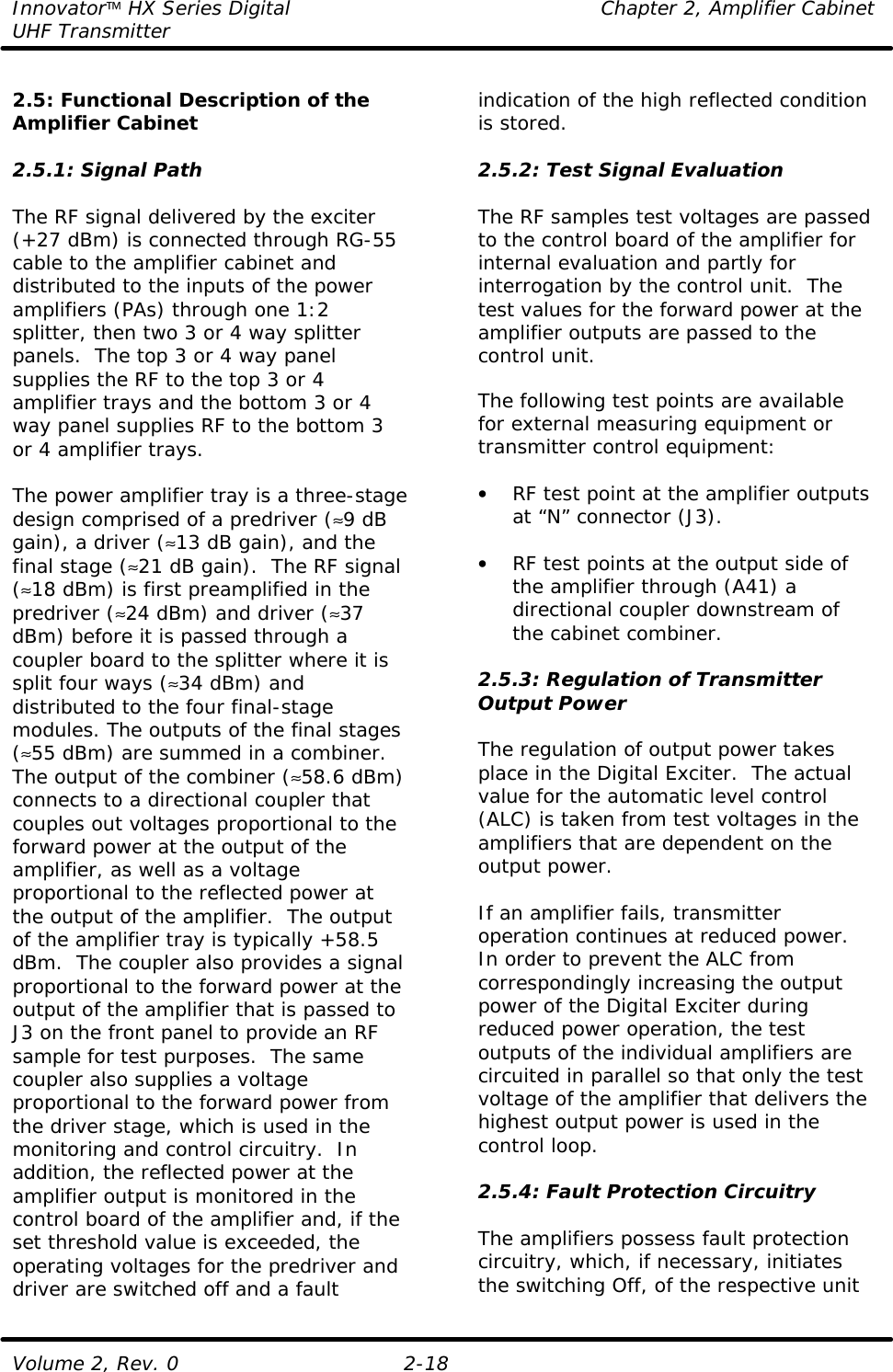
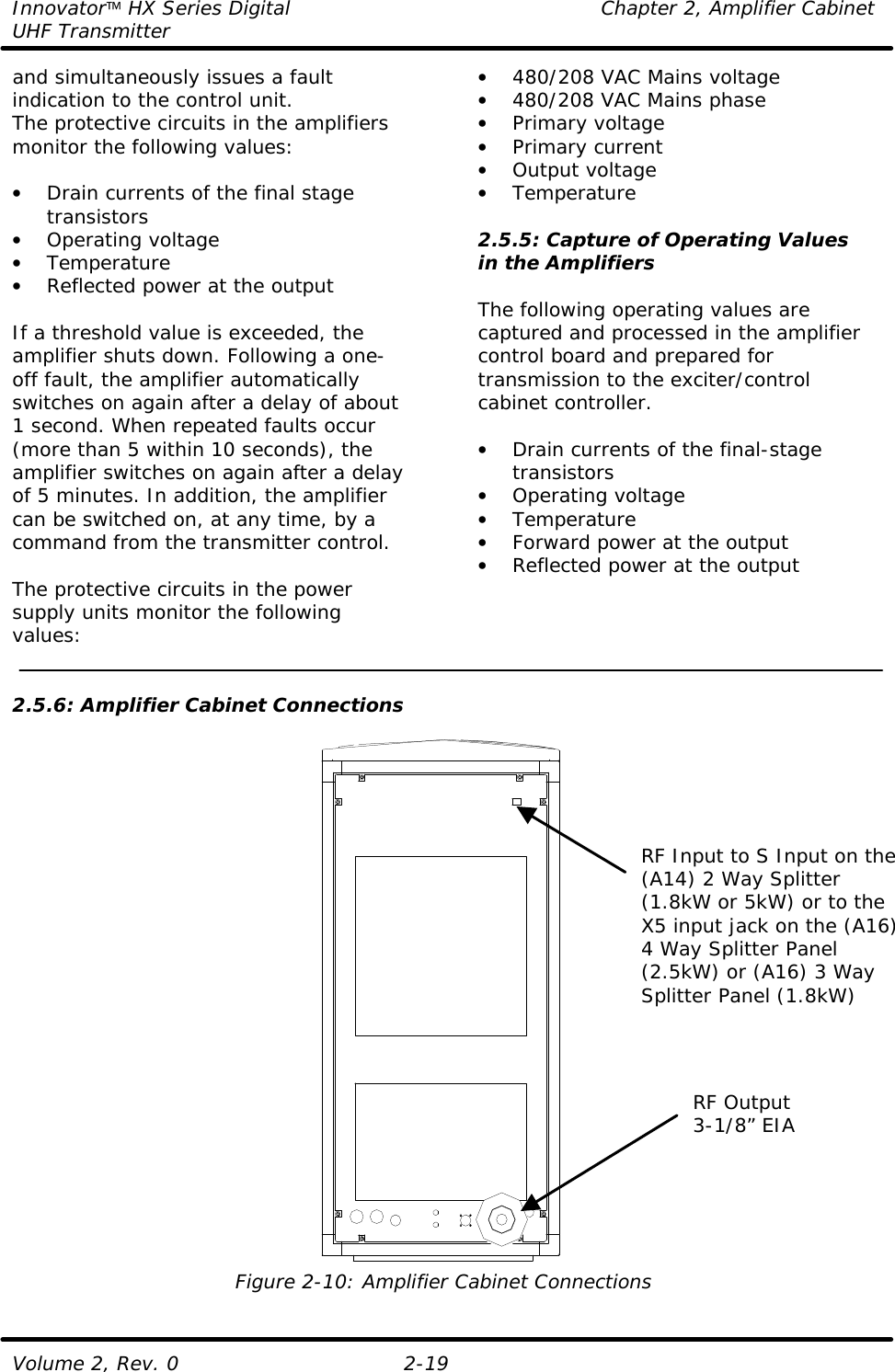
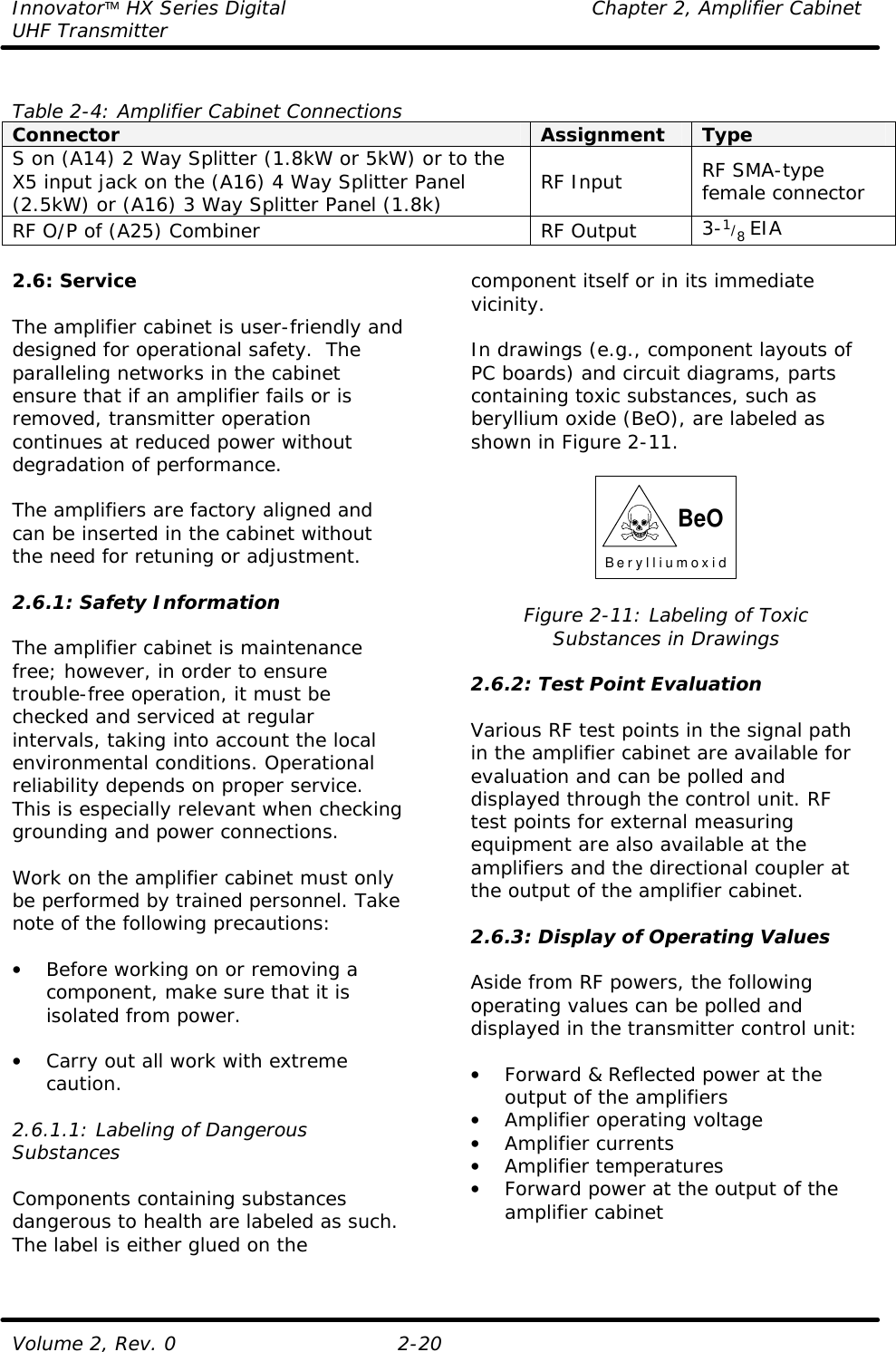
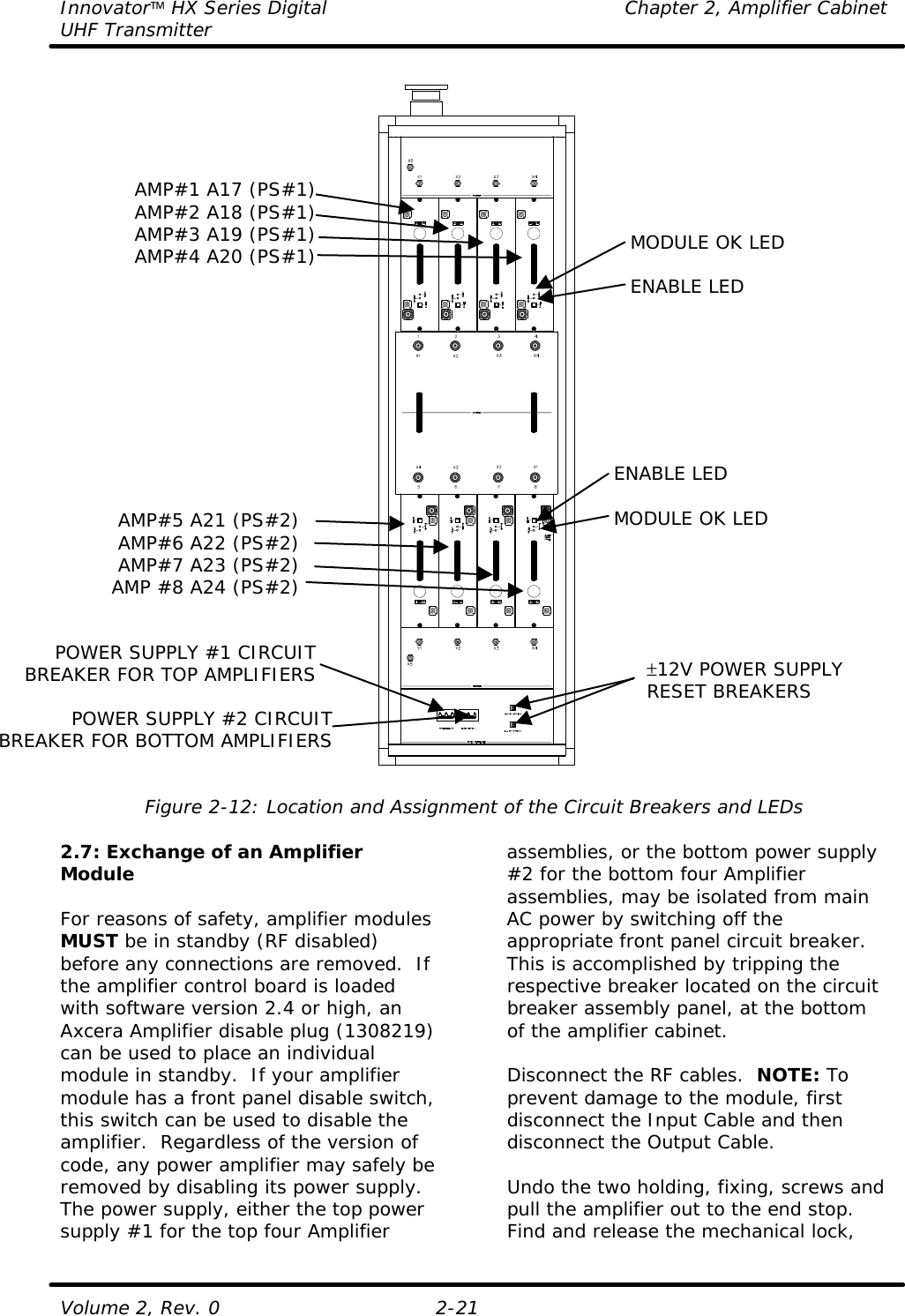
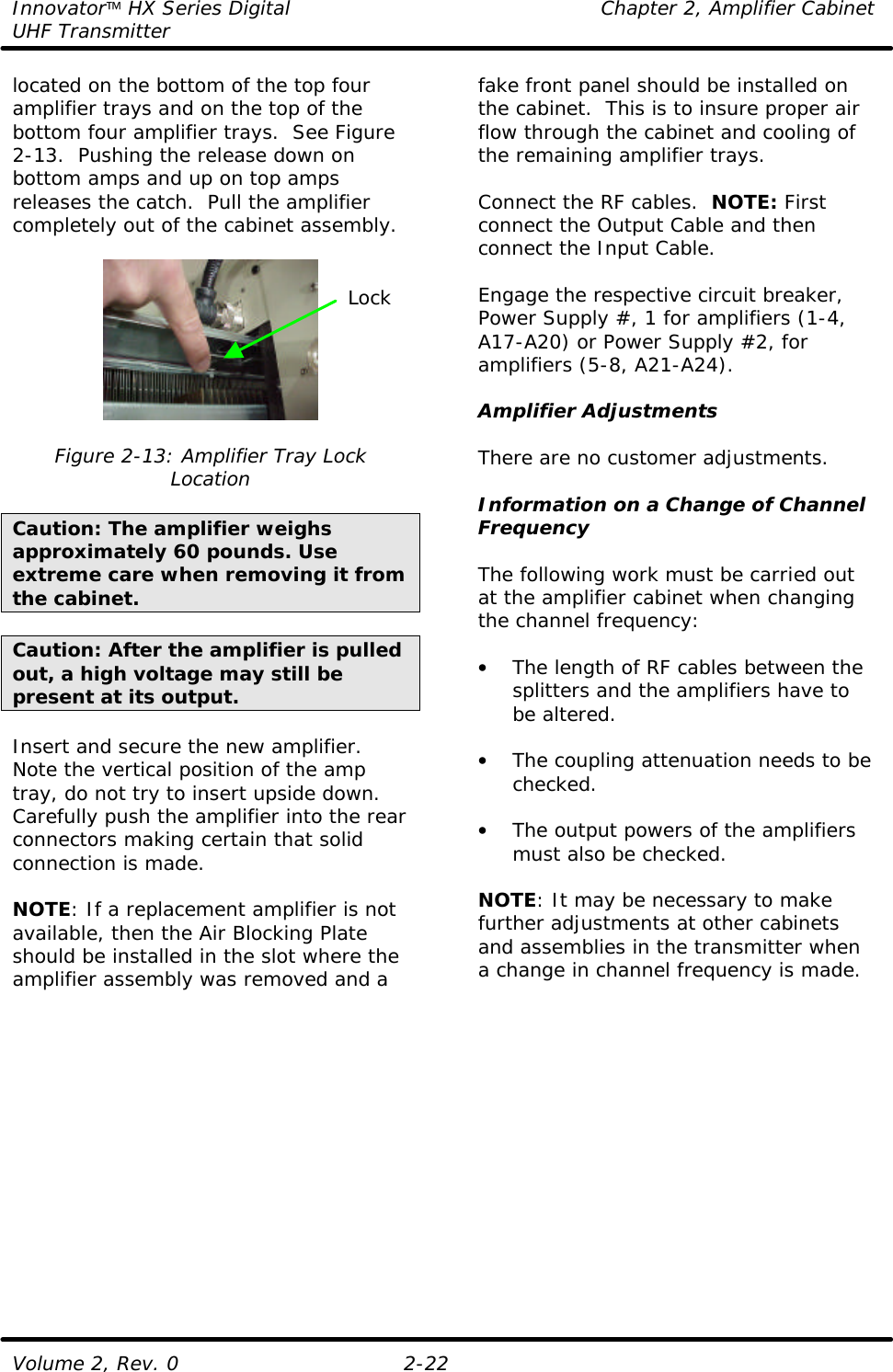
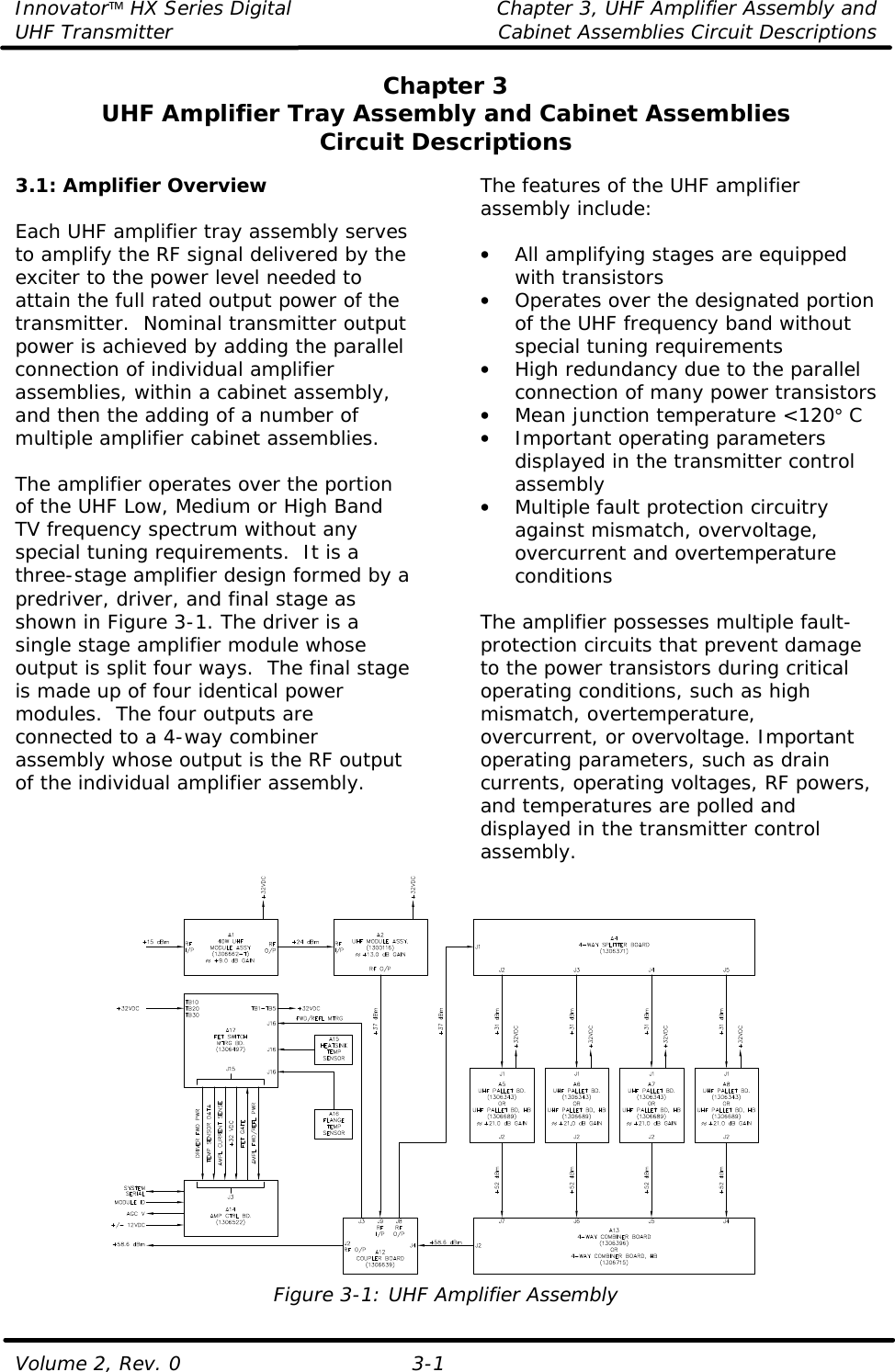
![Innovator HX Series Digital Chapter 3, UHF Amplifier Assembly and UHF Transmitter Cabinet Assemblies Circuit Descriptions Volume 2, Rev. 0 3-2 The paralleling network of the amplifier is arranged so that it continues to operate at reduced power if a module fails. The remaining available power is given by: Prem = Pnom ⋅ ([m - n] / m)2 where: Prem = remaining power Pnom = nominal power m = number of modules n = number of failed modules Figure 3-2: Remaining Power after Failure of Amplifier Modules 3.2: Design of the UHF Amplifier The amplifier is designed as a slide-in unit. The mechanical support structure is formed by a finned heat sink on which the individual assemblies are mounted. The amplifier assemblies are listed in Table 3-1. All RF connectors are located on the front panel, while the control and power connectors are mounted at the rear. The control board is mounted behind the front panel. Two LEDs on the control board (visible through the front panel) signal the operating status of the amplifier, Module OK and Enable LEDs. Table 3-1: Assemblies in the UHF Amplifier Position Assembly Remarks A14 Amp Control Board For control, monitoring, and test signal capture A1 40 Watt UHF Module Assembly Predriver (≈9 dB gain) A2 UHF Module Assembly IPA, Driver, to the splitter (≈13 dB gain) A12 Coupler Provides Driver forward, and final amplifier forward an reflected power samples A4 Splitter (1:4) Distributes the RF input power to the final amplifier boards A5 to A8. (≈34 dBm) A5 to A8 UHF Dual Stage Pallet Boards Four final amplifier boards (≈21 dB gain) (≈55 dBm O/P) A13 Combiner (4:1) Sums the output powers of the 4 UHF Pallet Boards. (≈58.6 dBm Output) A17 FET Switch/Metering Board Takes the three +32VDC inputs and switches them to the predriver, driver and the amplifier pallets. In addition, the metering samples connect through the board.](https://usermanual.wiki/UBS-Axcera/HU5000AD.Compiled-Users-Manual-Volume-2/User-Guide-990241-Page-35.png)
